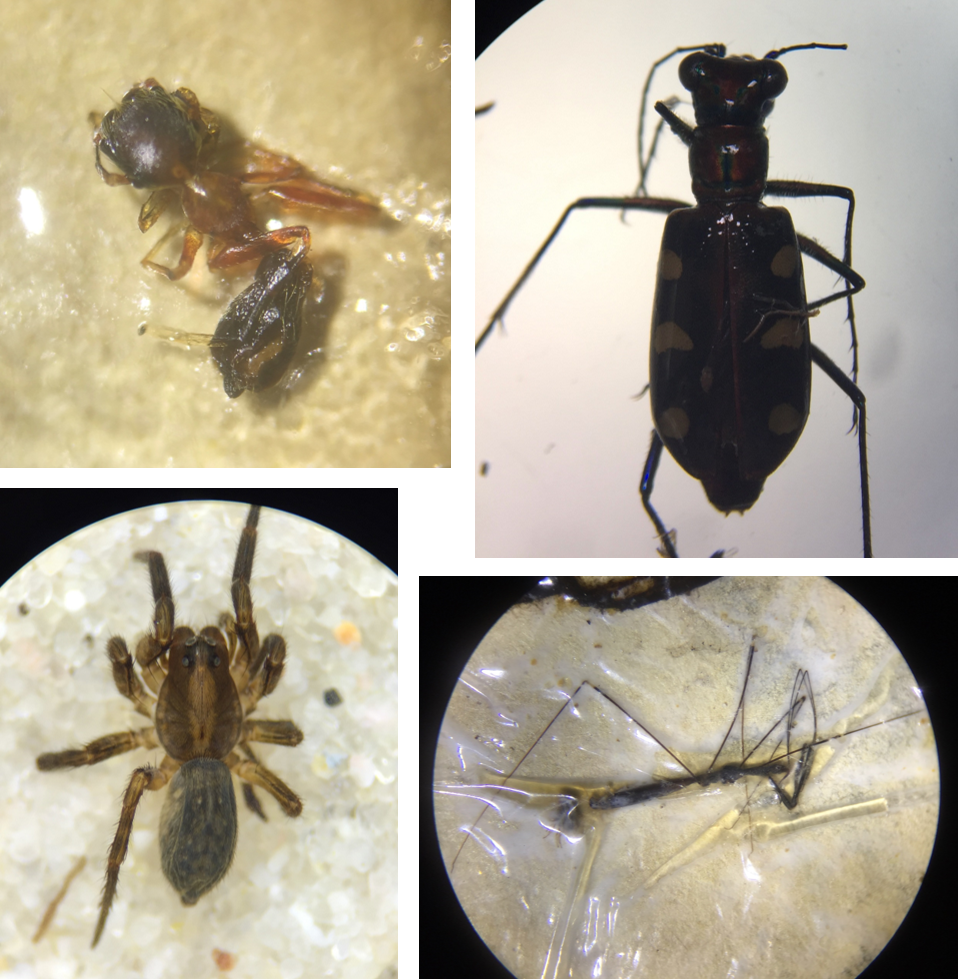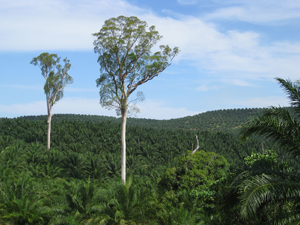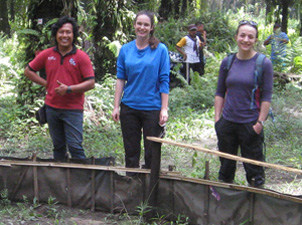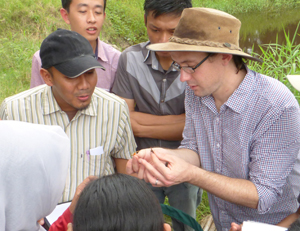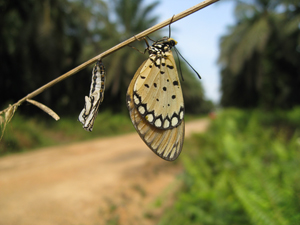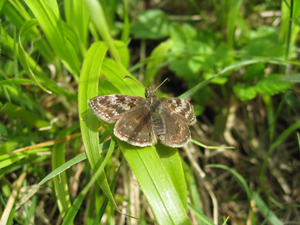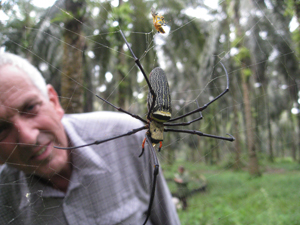March 2023 -
A Q&A with MPhil student, Jonny Timperley
This blog post was organised by Kate Howlett, a PhD student in the Insect Ecology Group.
Tell us about your MPhil research. What questions are you hoping to answer?
JT: My MPhil research is focused on assessing differences in the biodiversity, ecosystem functioning, and behaviour of arthropods between rainforest and oil palm systems in Liberia. In West Africa (oil palm’s native home), oil palm cultivation is expanding rapidly, but compared with Southeast Asia, relatively little has been researched on resulting ecological impacts. Liberia is a country that is incredibly ecologically important, being the third most-forested (by % of land area) country in Africa. However, the ecological impacts of oil palm cultivation in Liberia are little known. Therefore, we urgently need to quantify the ecological differences between the Liberian oil palm and rainforest systems. Arthropods are highly abundant in oil palm plantations, and their conservation is vital for maintaining biodiversity and, also, supporting palm oil yields, owing to the ecosystem services they provide. For instance, predatory insects and spiders are biological control agents of insect pests, and other arthropods (e.g., ants and beetles) contribute to decomposition and pollination. My research focuses on how arthropods differ in three different Liberian systems: industrial oil palm, country palm (small-scale farms owned, and managed, by locals), and natural rainforest. More specifically, the questions I aim to answer are: (1) Do rainforests support more abundant and compositionally different arthropod communities than oil palm systems? (2) How do levels of ecosystem functioning in oil palm plantations differ from those in rainforest? And (3) Do ants in oil palm plantations exhibit different behaviour patterns to those in rainforest? My research will provide important baseline ecological data in this understudied region, allowing a comparison for future work. I also hope to inform the development of management strategies to conserve arthropods while enhancing oil palm production, such as increasing the biodiversity of arthropod predators instead of applying harmful, chemically intensive pesticides within oil palm landscapes.
What led you here?
JT: I began studying oil palm during the third year of my undergraduate degree at the University of Nottingham. Due to COVID-19, I had few opportunities to conduct my own fieldwork for my third-year research project. Luckily for me, Dr Sarah Luke (formerly a Research Associate in the Insect Ecology Group) was my designated supervisor for the project and very kindly offered to provide me with data that she had collected in Sabah, Malaysian Borneo. The project focused on the design of riparian buffer strips (strips of preserved natural habitat alongside rivers/waterways) and, more specifically, how the width and habitat quality of these buffers impact tropical freshwater insects. With the aim of continuing my studies on insects and/or oil palm, I was very excited to discover that my current supervisor, Dr Michael Pashkevich, was offering a master’s project to assess socio-ecological differences between Liberian land-use systems. Having focused my research proposal on insects, I am now very happy to continue my research on both insects and oil palm, whilst gaining important and exciting fieldwork experience in Liberia!
What first sparked your interest in tropical ecology/conservation?
JT: I have always been extremely interested in animals, having grown up near to Salisbury Plain (the biggest remaining area of chalky grassland in northwest Europe). My parents are also passionate about wildlife, and therefore I owe a lot of my interest in ecology and conservation to them. Throughout my childhood, they consistently fed me facts and interesting information about certain animals/plants and watched countless wildlife documentaries with me. Whilst watching these documentaries, I was always very curious and excited by tropical wildlife, as well as rainforest ecosystems. Being passionate about both these, it comes hand-in-hand with being concerned about the rates of deforestation and biodiversity declines in these regions. Therefore, I aim to have a career in conservation to help in any way possible to protect, or best manage, these precious and naturally beautiful regions.
What is your favourite part of your work?
JT: For me, the most exciting part of my work is the opportunities it brings, such as working with the Insect Ecology Group, going to Liberia for eight weeks to conduct fieldwork, teaching a biodiversity workshop at the University of Liberia, and presenting at the British Ecological Society Annual Meeting in December 2022. I have just finished my fieldwork, and I thoroughly enjoyed working, and making very good friends, with the local partners of the project. They gave me interesting insights into the history and culture of Liberia, as well as making me constantly laugh throughout the trip. All of these are giving me great experience and are making me love my education, something that I would definitely not have said five years ago!
What are you looking forward to the most?
JT: In the short-term, I am very much looking forward to seeing the results of my thesis and completing the biggest project that I have done to date. In the long-term, I have been applying for PhDs, and therefore I hope to continue tropical research in the coming years.
What are your next steps?
JT: I have just completed my fieldwork in Liberia, and therefore my next steps are to identify the thousands of collected arthropods to order-level, begin analysing my other collected data, and start writing up my thesis.
February 2023 -
A Q&A with new PhD student, Sacchi Shin-Clayton
This blog post was organised by Kate Howlett, a PhD student in the Insect Ecology Group.
Tell us about your PhD research. What questions are you hoping to answer?
SSC: My PhD is looking at restoring landscapes in, and surrounding, agricultural crops, specifically looking at Riparian Ecosystem (river margins) Restoration in Tropical Agriculture (RERTA). Often, when we hear ‘conservation’, we think of preserving our remaining natural forests. While there is no denying the importance of this, equally crucial is restoring degraded landscapes which we have modified through human activities. Agriculture is one of the leading causes of landscape modification worldwide and is continuing to intensify due to the growing demands on food security. Therefore, a critical step for our future is finding a way to simultaneously maximise both agricultural output and ecological conservation within the same space. My PhD project focuses on how to restore and maintain healthy river margins within oil palm plantations in Indonesia. Since 2018, four treatments have been trialled at two river sites, in the hopes that we can determine which protocol results in the highest return for both forestry and biodiversity. What I hope to answer is not only which planting method is best for restoration, but also which method provides benefits for agricultural output. For example, would increasing the vegetation in the river margin naturally promote a reduction in the need for pesticides with the return of animals, that prey on crop pest species, to these landscapes? Further, would the resulting reduction in pest species and reliance on pesticides thereby increase the profit margins for the oil palm companies due to a lower cost-to-yield ratio? These are just a couple of the questions I hope to answer through the project, and I am very hopeful for future policies and landscape matrices to reflect this integration between agriculture and nature.
What led you here?
SSC: I was always interested in the nature surrounding me. I was fortunate to be able to live in various countries growing up, including Japan and New Zealand, and noticed changes in the landscape and how each culture treats nature. When I began my tertiary studies in New Zealand, I pursued this interest by studying ecology. New Zealand has two major economic incomes, nature tourism and agriculture. This clash intrigued me as, often, dairy farming results in extensive landscape clearing and pollution from run-off which conflicts with preserving nature for tourism. I decided to explore this by studying conservation ecology in my postgraduate studies, in the hopes of understanding possible solutions. Once I graduated, I worked in forest conservation. Although this was extremely fulfilling, I noticed there is a distinct disconnect between conservation and development, often being treated as completely diametrically opposed concepts. This is what motivated me to look into alternative methods that could resolve this conflict, such as farming using insects for pest control rather than pesticides, and that is how I came across the RERTA project description.
What first sparked your interest in tropical ecology/conservation?
SSC: In the tropics, land modification for agriculture is some of the highest rates worldwide. This drew my attention as a conservation ecologist as these landscapes are also some of the world's leading biodiversity hotspots. Therefore, effective conservation policies that reflect the interests of multiple stakeholders, such as agriculture and conservation, is not only needed but critical for the stability of the entire globe’s future.
What is your favourite part of your work?
SSC: My favourite part of being within research is the opportunity to collaborate with leading experts around the globe in restoration ecology. This project was built from an agreed collaboration between multiple partners, academic and industry, which is becoming increasingly important when trying to create effective policies that are more likely to be adopted by all partners, and for continued participation.
What are you looking forward to the most?
SSC: For the past five years, the data from the on-going experiments has continued to be collected despite numerous challenges that have occurred, such as COVID-19. Now, it is time to process and analyse what treatments have yielded the best results. This includes analyses on vegetation, ecosystem function, biodiversity, and agricultural output. This is a very exciting time to join the project and be able to track how the efforts by the team, and all our collaborators, have produced in terms of the project.
What are your next steps?
SSC: Not only are we looking at which treatment has resulted in the highest return in nature and agriculture so far, but which treatment will continue to operate in this synergistic system in the future climate. This is critical not only for future food security, but also for ensuring the climate does not continue to destabilize. Therefore, my next steps for the RERTA project are introducing new experiments to these river margins to capture which protocol has led to the highest resilience to the impending climate shifts we expect in the tropics.
January 2023 -
New paper: Wildlife documentaries present a diverse, but biased, portrayal of the natural world
This blog post was written by Kate Howlett, a PhD student in the Insect Ecology Group and lead author of the paper. Please hover the images for captions.
In wealthy countries, indirect, technology-mediated experiences of nature, such as through television programmes or social media are increasingly replacing direct experiences of nature, such as time spent in parks or forests. Portrayals of nature on television and social media are often edited for entertainment purposes and may prioritise aesthetics or excitement over scientific accuracy or realism. Alongside this, biases exist within public awareness and conservation research towards larger, charismatic groups of organisms, such as mammals. Smaller, more unfamiliar groups, such as invertebrates, are often overlooked, attracting less funding and public interest. This could potentially increase their risk of extinction, despite vital contributions to ecosystem functioning. In this context, it is important to understand how different types of media contribute to public awareness of biodiversity and its threats, since these portrayals have the potential to exacerbate or amend existing biases in awareness.
We sampled an online film database to understand whether there are biases in portrayals of the natural world in wildlife documentaries and whether conservation messaging within these kinds of films has changed over time. We randomly sampled 105 documentaries, evenly spread across the last seven decades, recording all organisms, habitats and mentions of anthropogenic threats to biodiversity, and whether or not conservation was mentioned. Afterwards, we identified each organism to the most precise level possible from the way in which it was referred to in the documentary.
The documentaries featured a wide range of animals and habitats. However, when compared to the actual numbers of described species in each group, the films consistently overrepresented mammals and birds, and consistently underrepresented invertebrates and plants. There was high variability in the representation of reptiles, fish and insects across time. The documentaries represented a range of habitats, the most common being tropical forest and the least common being deep ocean. While 41.8% of mentions of vertebrates were identifiable to species, just 7.5% of invertebrate mentions and 10% of plant mentions were identifiable to species. Overall, 16.2% of documentaries mentioned conservation, but almost 50% of documentaries in the current decade mentioned conservation. 22.1% of documentaries mentioned anthropogenic impacts but none before the 1970s, while the relative focus given to different anthropogenic threats did not always mirror their relative severity in the real world.
Our results show that documentaries provide a diverse picture of nature with an increasing focus on conservation, potentially raising awareness of conservation among audiences. However, documentaries also overrepresent vertebrates compared to invertebrates and plants, potentially directing more public attention towards these taxa. We suggest widening the range of taxa featured to redress this and call for a greater focus on threats to biodiversity to improve public awareness of the causes of biodiversity loss.
You can read the published paper for free by clicking here.
July 2022 -
A Q&A with new research assistant, Matthew Hendren
This blog post was organised by Kate Howlett, a PhD student in the Insect Ecology Group. Please hover over the images for captions.
What is your new role in the Group?
MH: I am a research assistant, currently working on quantifying canopy structure of 54 sites in and around six different oil palm plantations in Southeast Liberia, and creating R-scripts to analyse these data. Further down the line, I will be photographing and classifying spider specimens from these sites, using them as an overall indicator of ecosystem health, and helping to compile a species identification guidebook that will become freely available online.
What led you here?
MH: I have always been interested in the vast diversity of life and the incredible array of strategies each species utilises to overcome hurdles at developmental, ecological and evolutionary scales. Seeing such richness first-hand on a research expedition to the Chiquibul rainforest was particularly enlightening and working alongside some very inspiring people confirmed my love of the field. We were especially lucky to have the knowledge and experience of the local rangers, and Dr Jake Snaddon, who spent his childhood there, and to whom I am particularly grateful for his encouragement.
What first sparked your interest in tropical ecology/conservation?
MH: Given the historical models of human development to the detriment of natural systems, I share the opinion that we must close the gap of mutually exclusive prosperity and, while biodiversity is, of course, so much more than its value to us, the innumerable years of cumulative evolutionary innovation are a potential treasure trove of solutions to a more harmonious coexistence with nature. I firmly believe in conservation and viewing nature as a technology we can learn from, as the extinction of a species is not only a tragedy in the end of its lineage, but also the death of potential in fields such as medicine or biomimetics, and arguably diminishes the ability to understand our own place in the world.
What is your favourite part of the job?
MH: The feeling that I am spending my time on something meaningful, working on a fascinating project with a friendly team, each of whom have produced and are currently working on marvellous projects, right next-door to a zoological museum in a building named after the man whom I—along with countless others, I’m sure—idolise, what’s not to love? In addition, the flexibility this position affords is great, allowing my tasks to be tailored to really make the most in terms of skill development.
What are you looking forward to?
MH: Collaborating with incredible people, seeing museum collections usually kept behind closed doors, and learning as much as I can during my stay.
What are you hoping to do next?
MH: I would love to gain more field experience, and complete a Masters of Research in the biological sciences to deepen my understanding of all aspects of zoology, and develop my photographic portfolio.
June 2022 -
Rewilding reptiles: Using lizards to restore landscapes in South Australia
This blog post was written by Tom Jameson, a PhD student co-supervised by Ed Turner and Jason Head, member of the Vertebrate Palaeontology Group and honorary member of the Insect Ecology Group. Please hover over the images for captions.
Guuranda (the Yorke Peninsula in South Australia) is a landscape of gently rolling hills, vast fields of grain stubble and dusty sheep. As you approach the coast, remnant patches of native shrub give way to sand dunes and mangroves, white sand beaches and an azure sea. At the very tip of the Peninsula lies Dhilba Guuranda-Innes National Park, a remaining swathe of native mallee bushland made up of stringy bark gum-trees and silent salt lakes.
This is a beautiful but damaged landscape. Introduced foxes and cats have decimated populations of native animals, leading to the local extinction of most marsupial species. On top of this, large-scale land clearances have left only fragments of native habitat scattered across the landscape.
There is a solution—the Marna (healthy/ prosperous) Banggara (country) Project. This Project aims to restore the landscape of the Yorke Peninsula through rewilding—reintroducing locally-extinct native species to restore lost ecological processes. This approach benefits both the native landscape and agricultural productivity, as well as providing new economic opportunities for ecotourism in the area.
The Marna Banggara Project is a partnership between traditional owners (the Narungga, in whose language the project is named), farmers, NGOs and government, with research being carried out to support the project by local and international universities. Since on-ground work started in 2019, the project has made great progress. This includes erecting a 25 km anti-predator fence to enclose the 150,000 ha project area, intensifying control of fox and cat populations leading to the recovery of native animals and a decline in lamb mortality, and reintroducing the critically endangered brush-tailed bettong (Bettongia penicillata) to the region in 2021.
So where does a Cambridge PhD student come into this? As part of my PhD, I’m researching the role that reptiles play in rewilding projects, so I’ve joined the Marna Banggara Project to investigate how reptiles can contribute to the Project’s goals.
Within the Yorke Peninsula ecosystem, the largest native predator and scavenger is a reptile, the heath goanna (Varanus rosenbergi), a species of monitor lizard growing up to 1.5 m long. Top predators provide important services to ecosystems by controlling populations of native species, as well as reducing populations of invasive agricultural pests that can damage both native vegetation and crops. Scavengers also play an important ecological role in removing carcasses, supporting nutrient cycling and reducing the transmission of disease to native species, livestock and humans. As such, the heath goanna is an important part of the Yorke Peninsula ecosystem.
However, to date very little is known about the heath goanna population on the Yorke Peninsula. I’m therefore conducting research to gather baseline population data on the Yorke Peninsula heath goannas, figuring out exactly where they are found and how many individuals remain. I’m also quantifying the services they provide to the ecosystem, carrying out field experiments to assess their roles as predators and scavengers. The goal of all this work is to use the data I gather to build a management and rewilding plan for heath goannas as part of the Marna Banggara Project.
Working with the Project remotely from Cambridge, I used long-term monitoring data to build a picture of goanna populations on the Peninsula. Invasive and native scavengers have been closely monitored across the area since 2014, using hundreds of baited motion-sensitive cameras. From these data, I’ve been able to map the current range of the Yorke Peninsula goanna population.
From February to May, I was lucky enough to be living out on the Yorke Peninsula, carrying out further research. I was living right in the middle of Dhilba Guuranda-Innes National Park in a cottage in the ghost town of Inneston, alongside kangaroos and emus. Inneston was a gypsum mining town abandoned in the 1930s. Over time, the town has slowly been swallowed up by the bush, with just a few houses preserved for use by researchers and tourists.
From this base, I’m conducting experiments to quantify the role of reptiles as scavengers. I’m using a series of feeding stations, baited with rat carcasses, that exclude different kinds of animals. By monitoring what species arrive with motion-sensing cameras and recording removal of carcasses, I can quantify how important different groups of animals are as scavengers.
Preliminary results suggest that scavenging vertebrates are important for reducing incidence of disease from carcasses, with visits by vertebrate scavengers to feeding stations reducing the number of harmful blowflies breeding in a carcass. Invasive predators like foxes are doing quite a lot of scavenging, so it’s important that replacements (like goannas) are in place as foxes are removed from the landscape.
My findings indicate that heath goannas are going to play an important role in the rewilding of the Yorke Peninsula. When it comes to rewilding, reptiles have often been overlooked and ignored in favour of mammals. As rewilding projects become more common in parts of the world with populations of large reptiles (like Australia), it is important that conservation plans account for the role that reptiles play.
More than anything else, the Marna Banggara Project is a project of hope. Against a global backdrop of catastrophic climate change, continued habitat loss and mass extinctions, rewilding projects like Marna Banggara offer an alternative. Not content to just protect the fragments of remaining habitat, rewilding projects push back, restoring ecosystems and healing environmental wounds. It’s been an absolute privilege to work on the Marna Banggara Project alongside inspiring scientists, land managers and traditional owners. I’m looking forward to seeing the Project progress and the Yorke Peninsula becoming a little more wild, one lizard at a time.
Twitter: @TomJameson_Zoo
Instagram: @tjinthewild
The Marna Banggara Project is jointly funded through the Northern and Yorke Landscape Board, the Australian Government’s National Landcare Program, the South Australian Department for Environment and Water, WWF-Australia and Foundation for National Parks & Wildlife. Other partners actively involved in developing and delivering the project include Regional Development Australia, South Australian Tourism Commission, Zoos SA, FAUNA Research Alliance, BirdLife Australia, Nature Conservation Society of SA, Narungga Nation Aboriginal Corporation, Primary Producers SA, Primary Industries and Regions SA, Conservation Volunteers Australia, Legatus Group, Yorke Peninsula Council, Yorke Peninsula Tourism and the Scientific Expedition Group.
May 2022 -
New paper: Riparian buffers made of mature oil palms have inconsistent impacts on oil palm ecosystems
This blog post was written by Michael Pashkevich, a research fellow in the Insect Ecology Group and lead author of the paper. Please hover the images for captions.
About half of the Insect Ecology Group works in oil palm agriculture. This crop is grown to produce palm oil, which is the most traded vegetable oil worldwide and is found in products ranging from lipstick to instant noodles. Conversion of natural habitat to oil palm plantations leads to substantial declines in biodiversity and changes in ecosystem functioning. However, once oil palm plantations are established, management strategies can be used to improve levels of biodiversity and ecosystem functioning within oil palm plantations, possibly resulting in benefits to crop yields. For instance, if management increases the number of beneficial insect pollinators, we might expect higher-yielding oil palm plantations.
There are several ways to improve levels of biodiversity and ecosystem functioning in existing oil palm plantations, but a particularly promising approach is to retain riparian buffers (areas of land made of mature oil palms, surrounding waterways in croplands) when oil palms are replanted. These “mature palm buffers” are more structurally complex than surrounding cultivated areas, and receive lower input of pesticides, herbicides, and fertilisers. Owing to their management, we might expect mature palm buffers to have different levels of biodiversity and functioning than the surrounding cultivated oil palm landscape. However, whether this is the case has yet to be explored.
In a new study, published earlier this year in Ecological Applications, we set out to assess the benefits of mature palm buffers in replanted oil palm ecosystems. To do this, we sampled a chronosequence of oil palms in Sumatra, Indonesia. A chronosequence is a set of sites that have similar characteristics (i.e., in this case, all sites were oil palm plantations) but differ in age. All sites in our chronosequence had mature palm buffers, allowing us to assess the effects of mature palm buffers on the ecosystem of oil palm plantations of various ages. Specifically, we measured environmental conditions and levels of arthropod biodiversity. We took our measurements in three locations: within mature palm buffers, just outside buffers in the cultivated oil palm landscape, and very far away from buffers in the cultivated oil palm landscape.
We found that mature palm buffers can have environmental conditions (canopy openness, variation in openness, vegetation height, ground cover, and soil temperature) and levels of arthropod biodiversity (total arthropod abundance and spider abundance in the understory microhabitat, and spider species-level composition in all microhabitats) that are different from those in the surrounding cultivated oil palm landscape. However, these differences were not consistent across our studied chronosequence, indicating that any benefits of mature palm buffers to biodiversity are not consistent across the oil palm commercial life cycle.
Our findings suggest that, if the goal of maintaining riparian buffers within oil palm systems is to consistently increase habitat heterogeneity and improve biodiversity across the oil palm commercial life cycle, then different management of mature palm buffers or adjustments to their design are needed. One option could be to plant native forest trees amongst, or in place of, the mature oil palms. Studies in Jambi, Indonesia show that planting native rainforest trees can improve structural complexity and biodiversity in oil palm systems.
In our Riparian Ecosystem Restoration in Tropical Agriculture (RERTA) Project, we are exploring four different ways of designing riparian buffers, and assessing the relative benefits of each design to biodiversity, ecosystem processes, and yields in replanted oil palm plantations. As additional studies occur, it will be possible to identify strategies to maximise the benefits of riparian buffers on oil palm ecosystems. Once implemented, these strategies can contribute towards more sustainable development of the global palm oil industry.
You can read the published paper for free by clicking here.
April 2022 -
Conserving butterflies, past and present
This blog post was written by Matt Hayes, a PhD student in the Insect Ecology Group. Please hover over the images for captions.
It has been an exciting few months for me as I started my PhD in January but have also been helping the team at the University Museum of Zoology in Cambridge (UMZC) with the new Butterflies Through Time exhibition, which opened on the 15th March.
The exhibition comes at the end of a two-year project where the UMZC has worked alongside the Wildlife Trust for Bedfordshire, Cambridgeshire and Northamptonshire (WTBCN) to link historical Museum butterfly specimens with modern conservation initiatives, engaging new audiences with wildlife both past and present.
The UMZC and WTBCN partnered on an extensive public engagement programme, carrying out events at local schools in Cambridgeshire, at the UMZC and on WTBCN reserves. A huge amount of online content was also produced to reach people during lockdown. From wild crafts and minibeast hunts, to live Q&As and Museum tours, over 50 events were carried out, reaching more than 2,000 participants, while the online content attracted an even larger audience, with more than 5,000 views and downloads. The exhibition is the latest public engagement event in this programme, and it will be running until the 18th September 2022.
Butterflies Through Time
The Butterflies Through Time project was funded by the Esmée Fairbairn Collections Fund, which specifically supports initiatives that increase access to underutilised museum collections to achieve social impact. Therefore, selecting which Museum specimens would underpin the project was an important choice.
The insect collection is the largest single collection in the UMZC, containing around a million specimens, and represents the last major section yet to be fully catalogued. Some of the insects are amongst the oldest and most fragile specimens in the Museum, being collected over the last 200 years by famous naturalists of the day. Many specimens are also from some of the country’s oldest nature reserves, some of which are still actively managed for conservation. Therefore, the Museum’s insect collection represents a unique long-term dataset which allows the scale of biodiversity change in the UK to be tracked into the past. However, with the time and funding available, it would not have been possible to carry out a project on all one million specimens in the insect collection. This meant we had to choose a specific group of insects to focus on, and we chose the butterflies of the UK.
Butterflies are a charismatic group of insects that most people think of in a positive light. In this way, they are a ‘gateway insect’ that can be used to engage audiences with the importance of invertebrates more generally and the challenges they are facing. For example, although cockroaches are extremely important for recycling nutrients and breaking down decaying matter, it would likely have been more difficult to make audiences care about their population declines.
Butterflies also have complex lifecycles that make them sensitive to environmental change. This means that declines in their populations can indicate wider problems, impacting a range of different species living in the same habitats. Therefore, long-term trends in museum butterfly collections can be linked to stories of habitat change, climate change and sustainability.
For these reasons, the UK butterflies were the perfect group to focus on. The idea for the Butterflies Through Time project was for the UMZC to provide a record of change over the last two centuries using these historical butterfly specimens, which could then be complimented by modern conservation practitioners engaging audiences with local wildlife. This work has culminated in putting more physical specimens on display during the current exhibition at the UMZC, so that the stories they tell can be shared with the public.
The Exhibition
Historical museum specimens allow us to see what animals were living in different environments hundreds of years ago and compare them with those that are still around today. In this way, they can act like time-machines and show us how much things have changed. This helps us understand what has been lost but can also build an appreciation for the wildlife that remains.
The Butterflies Through Time exhibition uses UK butterfly specimens from the UMZC collections to showcase 13 local species and the changes they have experienced in Cambridgeshire over the last 200 years. This offers visitors a chance to see rare butterflies that are usually held behind the scenes in the Museum storerooms. On pillars across the Museum galleries, striking 2m-tall displays show the modern researchers and conservationists working with these species to reverse long-term declines.
Elsewhere in the Museum galleries, we feature 19th-century naturalist Leonard Jenyns, whose historical records inform much of the exhibition. Jenyns spent a lot of his time recording local wildlife in Cambridgeshire, and his detailed notebooks are now held at the Museum.
However, as important as it is to share historical records of loss, it was important that the exhibition did not simply convey a message of doom and gloom. Therefore, Jenyns’ notes on past declines feed into displays on modern conservation work, which is restoring and enhancing butterfly habitats for the future. A huge amount of this work is being carried out by WTBCN, including wetland restoration at the Great Fen and future-proofing against climate change with the Banking on Butterflies project.
Last but certainly not least, the exhibition features artwork made in collaboration with students from local schools, who have worked with artists and researchers to engage with butterflies, other insects and their local green spaces.
The 13 species featured in the exhibition are only a fraction of the butterflies found in the UK. For more details, including a full list of resident species and how you can help conserve butterflies in your garden or local green space, please visit the exhibition’s page on the Museum of Zoology’s website.
Leonard Jenyns and historical records
Leonard Jenyns was a naturalist who lived in Cambridgeshire during the 1800s. He was a contemporary of Charles Darwin and was one of two men offered a job onboard the HMS Beagle, to travel the world on a voyage of discovery, before turning it down and suggesting Darwin as a replacement. After declining this offer, Jenyns never once went abroad but lived in Cambridgeshire for nearly 30 years, working as a reverend. In his free time, he liked nothing more than to record the wildlife around him, and in four beautifully handwritten notebooks, Jenyns took it upon himself to record every single species he and his friends found in the county. This is a really rare resource as it provides us with a near comprehensive list of the wildlife that lived in Cambridgeshire 200 years ago, with details such as key sites for species and how common they were. This allows us to peek back in time and compare Jenyns’ records with what can be seen today and see how much has changed.
For example, one of the species featured in the exhibition is the swallowtail butterfly. Leonard Jenyns’ notebooks highlight that this species was once common in Cambridgeshire: ‘Found in the greatest plenty, throughout the Fens between Ely & Cambridge.’
However, the swallowtail became locally extinct in Cambridgeshire the 1950s after a long period of progressive drainage when its fenland habitats were converted to farmland. The butterfly’s disappearance mirrors declines in many wetland species that were previously found in the county.
Nationally, the swallowtail butterfly now only survives in the Norfolk broads. Reintroductions have been attempted at Wicken Fen in Cambridgeshire but have ultimately failed. Its food plant, milk parsley, needs to grow large enough and in high enough numbers in order to support stable populations of the butterfly. It is thought that, in the past, Wicken Fen may have been too dry for food plants to reach full size, or there may simply not have been enough habitat available.
Hopefully, wetland restoration projects like the one being carried out at the WTBCN’s Great Fen, which is working to re-wet a vast 3,700-hectare landscape, could provide enough habitat to support this species in Cambridgeshire once again.
Modern conservation and PhD work
It is important to make people aware of past declines, but we also want to promote a positive message to go along with this rather than making people feel powerless. Initiatives like that in the Great Fen are great positive examples of conservation work bringing once biodiverse habitats back to life.
Moving away from the past and looking to the future, climate change is projected to become a leading cause of biodiversity loss. This is where my PhD research comes in. Once again, working alongside WTBCN I will be carrying out research on the Banking on Butterflies project. This initiative has taken flat, ex-arable land on nature reserves and built artificial banks to create a varied landscape with a wide range of microclimates. We hope that, as regional temperatures continue to rise, these features will provide more options for species on isolated nature reserves and temperatures that remain suitable for them into the future.
For more information on how we can all engage with and protect wildlife where we live, please visit the ‘Things You Can Do’ page on the Museum of Zoology’s website.
March 2022 -
Protecting one of our smallest critters: Our research on the small blue butterfly
This blog post was written by Esme Ashe-Jepson, a PhD student in the Insect Ecology Group. Please hover over the images for captions.
During the first lockdown, when I was not allowed to go into the field to collect the data I had planned on, I was instead offered some old data from over 10 years ago that had been forgotten about to keep me busy. It was data on where the small blue butterfly lays its eggs. When I was finally given permission to go out to the field, but only for a few weeks, I focused my energy on recollecting similar data, which meant I could compare how this butterfly laid its eggs over a 14-year timeframe, and whether their preferences have changed over time.
This was my first taste of fieldwork during my PhD, and I was lucky enough to enjoy bright sunny days in wildflower meadows, searching the strange, fluffy kidney vetch flowerheads for the elusive small blue caterpillars and eggs.
The small blue is a challenging butterfly to work with, and I’m sure a bit of a nightmare for conservation practitioners. Firstly, they don’t fly very far, which means they form small, isolated populations which can disappear after a single bad season. Secondly, female small blues will only lay their eggs on a single species of plant, called kidney vetch. This plant is not overly common and requires disturbed soil to germinate and grow in good numbers. This can be difficult to achieve on protected land. Thirdly and perhaps strangest of all, the caterpillars have a distasteful habit of cannibalising each other. This means that it doesn’t matter how many butterflies you save, and it doesn’t matter how many foodplants you carefully nurture; if all the butterflies lay their eggs on the same plant, there will be a Battle Royale ending in only a single survivor. We found evidence for this happening back in 2006, where the numbers of kidney vetch dropped and suddenly there were as many as 16 eggs being recorded on a single flowerhead, followed by a population crash the following year. Our goal is to encourage the small blue to lay as many eggs as it can, but only one egg per flower.
What we found was that female small blues prefer certain characteristics on a kidney vetch flower in order to lay an egg on it, and that these preferences had not changed over 14 years, implying that management for the small blue can also be consistent. These characteristics are that the flower is tall, sticking out from the surrounding vegetation, and that it should be surrounded by tall vegetation. This can be achieved quite easily, where conservation practitioners protect patches of kidney vetch from grazing animals or being trampled or cut. This can be a bit of a challenge in the case of rabbits, as I encountered in the field. The nature reserve I was working in had rabbits, which have a strange habit of chewing through the stems of kidney vetch flowers, leaving the flower to rot on the ground while the caterpillar wastes away. I remember many a disappointing day, returning with high hopes to the plants I had found small caterpillars on, expecting to have seen them grow fat, but ended up finding a pile of rotting flowerheads on the ground. Sheep will also eat kidney vetch and are commonly used for grazing in nature reserves. Without knowing that small blues need these tall flowers, and that these flowers are particularly tasty to herbivores, management for this species would be challenging and frustrating.
With this information, conservation practitioners managing nature reserves with small blues can make some small changes to help maintain these strange little butterflies that are an integral part of our landscape.
You can read the published paper for free by clicking here.
February 2022 -
A Q&A with new research assistant, Evie Crouch
This blog post was organised by Kate Howlett, a PhD student in the Insect Ecology Group.
What is your new role in the Group?
EC: I’m a research assistant for the Butterflies Through Time project with the Insect Ecology Group where I have been helping coordinate outreach events with the Public Engagement Team at the Museum of Zoology. At the moment, I’m assisting the curation of the Butterflies Through Time exhibition, which will run from the 15th March to the 18th September 2022. As part of my job, I’ll be delivering engagement events here at the Museum and at different nature reserves around Cambridge later on in the year, and I will be helping to create a digital catalogue of the specimens we have here in the museum.
If you’re interested in the Butterflies Through Time exhibition, please come along to the Departmental preview at 4pm on the 9th March where you can find out more from myself and others involved with the exhibition.
What led you here?
EC: I first started studying butterflies in my second year at university on a course trip to Eswatini. I was told by lecturers that they were a good taxon to survey due to their sheer numbers and beauty – and they weren’t wrong. From there I went on to do my undergraduate dissertation on how different environmental parameters affect butterfly diversity in woodland habitat at a site back home. I then followed this up by looking at how different farmland management types affect pollinator abundance at Wild Ken Hill in North Norfolk, for my master’s dissertation last summer.
What first sparked your interest in Museums and science communication?
EC: I always loved going to the Natural History Museum when I was younger, but the science communication module I did in my third year was what really sparked my interest in public engagement and outreach. I love the idea of being a ‘middle-man’, someone who understands the science and can translate it in a way that is engaging to others – that way you can bring a bit of creativity into it as well.
What is your favourite part of the job?
EC: I love the fact that the job is so varied, and I get to try out different tasks – for instance I’ve never put on an exhibition before! I also like that I get to communicate with lots of different people and engage people with the things I find interesting.
What’s been the most interesting or valuable thing you’ve learned so far?
EC: Probably the experience of helping to curate an exhibition and the insight into all the things that involves.
What are you looking forward to?
EC: I’m really looking forward to delivering all the engagement events we have planned this month to go along with the exhibition launch, although I’m especially looking forward to any I can do outside later in the year, as children become more engaged when they’re outside and can learn in a much more hands-on way.
What are you hoping to do next?
EC: I’d love to stay in public engagement when my contract ends in summer. What exactly, I don’t know yet!
January 2022 -
A Q&A with new research assistant, Josh Jones
This blog post was organised by Kate Howlett, a PhD student in the Insect Ecology Group.
What is your new role in the Group?
JJ: For the next six months, I’ll be working as a research assistant on our smallholder oil palm project in Indonesia and Malaysia. The project will be looking at how management decisions affect yield, biodiversity, and ecosystem processes like pollination. This is really exciting because, although there’s been a lot of research on improving the sustainability of industrial oil palm, there hasn’t been much work on smallholders. On a day-to-day basis, my job will involve coordinating with our collaborators out in the field, managing data after it’s been collected, and eventually helping to analyse and write up the results.
What led you here?
JJ: Before this I was a master’s student on the Tropical Forest Ecology course at Imperial College London. After I finished, I was looking for a research position to get more experience, and this job was a perfect match for my research interests, which focus on promoting biodiversity and sustainable development in the tropics. It also meant I could get paid to do what I was most passionate about, which is crazy.
What first sparked your interest in tropical ecology?
JJ: It sounds really boring, but it was writing an essay before my undergraduate field course to Borneo. The essay was on the Janzen-Connell hypothesis, which describes how insects and fungi shape tree diversity in tropical forests. It was an interesting, if not slightly controversial, concept, and I really enjoyed getting to think about the complexity of tropical systems. Once I got to Borneo, I ended up enjoying the fieldwork as well (which is possibly less surprising) and decided that was a good sign that this was the area of research I wanted to go into.
What is your favourite part of the job?
JJ: The variety. I’m not going to be clichéd and say that every day is different, but I do get to try a lot of things. I could be writing up protocols, having video calls with researchers in Southeast Asia, creating field site maps, applying for permits, setting up collaborations, or finding new ways to improve the reproducibility of our data. This term, I’m even going to start teaching undergraduate students, which I wouldn’t have imagined I’d be doing at the University of Cambridge, certainly not in my 20s anyway.
What’s been the most interesting or valuable thing you’ve learned so far?
JJ: One of the differences I’ve noticed from doing research as a master’s student is everything is much more collaborative. I’m not just focusing on one small project — I’m working with PhD students in our group, with our PI, and with collaborators in the UK, Indonesia, and Malaysia. I think it makes it a bit more interesting as it often leads to some unexpected opportunities, but you do have to be a lot more organised as at any one point there’ll be several loose threads to keep track of.
What are you looking forward to?
JJ: Like all researchers, I’m looking forward to seeing the results! We also have a citizen science project being led by our PhD student Martina Harianja, in which farmers send in butterfly photos taken on their plantations. It will be nice to see more of those, especially as we won’t be going out to the field anytime soon.
What are you hoping to do next?
JJ: Right now, I’m applying for PhDs, so hopefully that will be the next big step. Over the last few years, I’ve developed an interest in how tropical plant communities are structured and how we can use that knowledge to restore them, so I’m hoping to focus more on that side of things. Moving to the plant side is possibly a bit of an unexpected move for someone working in the Insect Ecology Group at the Department of Zoology, but I’m excited to see how things will go.
December 2021 -
New paper: 'Effects of COVID-19 lockdown restrictions on parents’ attitudes towards green space and time spent outside by children', published in People and Nature
This blog post was written by Kate Howlett, a PhD student in the Insect Ecology Group and lead author of the paper. Please hover the images for captions.
Children in the UK today have less daily contact with the natural world than previous generations. Yet we know that experiences in nature at a young age are important for wellbeing, skill development and health, as well as for inspiring future support for conservation. This increasing disconnect from nature is often blamed on a growing proportion of the population living in urban areas. During the COVID-19 pandemic, lockdown restrictions limited people’s contact with nature to the green spaces immediately accessible in their local neighbourhoods. In the UK, fewer urban households have gardens than those in rural areas, where the gardens also tend to be larger. Therefore, lockdown restrictions in the UK may have exacerbated differences in access to nature and experience between urban and rural children.
In our new paper, published in People and Nature, we explored whether lockdown restrictions in the UK exacerbated or reduced differences in green space experience between urban and rural groups. Via an online survey, we explored attitudes towards green space amongst a sample of 171 parents from Cambridgeshire and North London, in the southeast of the UK. We asked whether lockdown had affected parental views on the importance of green space or the amount of time their children spent outside, and we assessed whether there were differences in responses between urban or rural areas.
The majority of parents in urban areas reported wanting their children to have more access to green space than they currently had, whilst the majority of parents in rural areas said they were happy with the amount of green space their children had access to. We found that most rural parents reported being aware of the importance of green space before lockdown, whilst most urban parents said that lockdown had made them realise the importance of these spaces, when they had taken them for granted before. Finally, urban children generally spent less time outside during lockdown, whilst rural children spent more time outside.
Collectively, our results suggest that lockdown may have exacerbated pre-existing green space inequalities between urban and rural children in our sample, with implications for children’s wellbeing and connection with nature. We suggest that interventions targeted towards urban children are important in ensuring equality of nature experience amongst children from different backgrounds.
You can read the newly published paper for free by clicking here.
October 2021 -
An unexpected journey
This blog post was written by Esme Ashe-Jepson, a PhD student in the Insect Ecology Group. Please hover over the images for captions.
¡Buenos días!
At the end of September, I travelled to Panama for six months to join a research team at the Smithsonian Tropical Research Institute (STRI) working on tropical butterflies. This wasn’t a part of my original plan for my PhD but rather the result of a conversation started between the research groups. STRI wanted someone to collect tropical butterfly thermal buffering data, and a member of our group had recently published a great method for doing exactly this on temperate species. By collecting similar data, we will not only have a valuable dataset on a vastly understudied group of insects, but this will also facilitate a comparison between temperate and tropical species, highlighting any differences in how the groups may respond to climate change.
I landed in Panama City, where I was going to be staying for four days to settle and collect my credentials before heading to Gamboa, a small town on the edge of the jungle. Compared with late September in Britain, the weather was scorching hot and very humid. The drive from the airport was lined with palm trees, the sky filled with black vultures and frigate birds. There were miniscule geckos in the flat I was staying in, lapping up the tiniest ants I’ve ever seen. From the balcony, I could look across the old town with their mismatched roofs and narrow streets to the skyscraper central of Central America. The people were friendly and helpful, even with my very poor Spanish (but I’m learning).
I then headed to Gamboa, where I would be staying for the next six months. I was warmly welcomed and met what felt like the whole town in one afternoon. I was joined by an amazing team of young ecologists, all bringing their own skill sets to the project. We work primarily on Pipeline Road, a road built into the jungle many years ago by the Americans alongside a fuel pipeline, but the road was never finished. Now, it is a local hotspot for seeing birds and conducting research. We walk a few kilometres into the jungle three or four days a week to catch butterflies and collect our data. Alongside the many beautiful butterflies, we also saw many other animals I’ve never personally seen in real life, like toucans, monkeys and the ever-present ñeque, as it’s locally called, a strange large rodent with long deer-like legs. I have yet to see a sloth, but I’ll keep looking into the trees until I do.
Data collection is hard. I’m out in the field many hours less than I usually am in the UK, but am exhausted from the heat, humidity and biting insects by noon, which turned out to be lucky since in the wet season (as it is now), the storms usually hit in the early afternoon.
There is so much in the tropics, and there is so much we still don’t know. Research here has barely begun, and there is so much value in working here, but I am always conscious of my position as an outsider and the risk of doing ‘helicopter research’. This is where researchers from wealthier countries go to a developing country, collect data, travel back to their country, and analyse and publish the data with little or no involvement of the local researchers. This does not provide the local contributors with the recognition they deserve, and can impact their careers and future development.
I am blessed to be working with a range of researchers from around the world and locals from Panama; it is extremely important to me that we all learn from each other and all benefit from this research. As a team, I am learning fieldwork skills from a seasoned veteran of the forest, and butterfly identification and knowledge from a local young expert, and I am teaching them how to build and conduct a research project with a specific goal. The primary goal of all my research is to improve conservation, and this cannot be done effectively without the local people’s involvement. I look forward to hopefully staying in touch with many of the amazing people I have met here, especially the young ecologists where you can feel their passion for the subject and know they will excel in their field if given the chance.
I never expected to end up here; it’s still a strange and surprising place to wake up every morning. I am incredibly lucky, and I look forward to not only finding out what our data can tell us about tropical butterflies and sharing this with our local contributors, but also to continuing my adventure here and hopefully learning some more Spanish along the way.
¡Hasta luego!
September 2021 -
Interning (remotely) at the Parliamentary Office of Science and Technology (POST)
This blog post was written by Kate Howlett, a PhD student in the Insect Ecology Group. Please hover over the images for captions.
In the third year of my PhD in zoology, I took some time out to work as a Postgraduate Fellow at the Parliamentary Office of Science and Technology (POST). This placement is offered as part of the UKRI Policy Internship Scheme, available to PhD students funded by UKRI Research Councils, and POST is just one of 22 host organisations offering placements.
There is a large range of placements available, with each host organisation offering something slightly different, so, if you’re interested in learning about policy, there will definitely be something for you. I applied to POST because they offer the chance to work independently on a policy briefing on a pre-assigned topic. I thought the opportunity to produce a briefing would be a great way of learning about how research feeds into policy first-hand – and I was right!
Part of the appeal of applying to and working at POST is also the chance to work on the Westminster Estate, meeting parliamentarians and exploring the House of Commons and House of Lords. For obvious reasons, this couldn’t happen in the end, and the entirety of my placement was done remotely via a parliamentary laptop, which I was loaned, but it was still really interesting to see how Westminster works remotely.
During my placement, I produced a policy briefing on environmental housing standards in the form of a POSTnote, which is POST’s flagship briefing format. These are four-page, concise briefings that lay out impartial information on a topic relating to science or technology. The purpose of these is to provide parliamentarians with up-to-date, unbiased information so that they can make informed decisions.
The process for producing a POSTnote is well laid out and quite straightforward – very different to a PhD project – so working on such a streamlined task can be a welcome break to research! The process involves first conducting your own research to bring yourself up to speed with the topic and the relevant policy landscape, and using this to create a list of potential interviewees who can contribute expertise. Interviewees are spread way beyond academia, encompassing industry, government (both local and national), regulatory bodies, NGOs, charities and any other relevant independent institutions. Next, you need to interview as many people as you can – I interviewed 27 people – to find out all about your topic and where the relevant literature is.
Then, you can start drafting your briefing to encompass everything you’ve learned. This can be challenging because you need to make sure that opinions and information are unbiased with respect to your stakeholders and that all the information is accurate and up-to-date. It’s also important to avoid making recommendations since this isn’t something that is in POST’s remit. I found this bit really difficult since it felt like I was just producing a list of problems without providing any solutions. But this varies quite a lot depending on your topic; mine was very much an overview of all the relevant areas, rather than an in-depth look at a particular technology or issue.
After several drafts, and both an internal and an external review process, the briefing gets published on the POST website and circulated to parliamentarians in both the House of Commons and the House of Lords. Sometimes, if your topic is particularly timely with respect to current legislation changes, a launch event can be arranged at which relevant stakeholders are asked to speak, all to help publicise the POSTnote.
I really enjoyed the whole process since it was a great opportunity to develop all sorts of professional skills, from interviewing and note-taking to a better understanding of Freedom of Information Requests and an in-depth knowledge on UK housing. It was fascinating to see how research interacts with policy to inform and guide decision makers. POST is also a really friendly place to work, and everyone is very approachable and happy to help. It’s also amazing to see how quickly people respond to you when you have a parliamentary email address! I would definitely recommend the experience to anyone thinking of a career in policy or anyone who is interested in understanding the science-policy interface, and I’m happy to chat to anyone who is thinking of applying.
August 2021 -
Mapping nature reserves: Three months with the Bedfordshire, Cambridgeshire & Northamptonshire Wildlife Trust
This blog post was written by Jake Stone, a PhD student in the Insect Ecology Group. Please hover over the images for captions.
A key component of my BBSRC-funded Doctoral Training Partnerships PhD programme is carrying out a PIPS – a Professional Internship for PhD Students. This is a three-month placement hosted by an external non-academic organisation, the aim of which is both to give context to my PhD research project and to provide skills and opportunities that can be applied throughout and post-PhD.
I have recently completed my internship with the Wildlife Trust for Bedfordshire, Cambridgeshire & Northamptonshire (BCN). During my three months with the Trust, I worked on a project aiming to generate a habitat-based data set that can be used to calculate how much carbon is being stored, or sequestered, throughout all of the Wildlife Trust BCN reserve sites. This will serve as essential baseline information for future work carried out by the Trust on natural capital and carbon offsetting, as well as providing a visual framework to help log and guide management action across the BCN estate.
To achieve this, I first had to source and collate all pre-existing habitat-based information from National Vegetation Classification (NVC), Phase 1 and management maps held by the Trust. These were then georeferenced and, for each of the 50 reserve sites located in Cambridgeshire, new, up-to-date habitat polygon maps were created (see first image). These varied from a small pond with only a handful of habitat types, to a site like the Great Fen, which spreads over 3,700 hectares and represents a large variety of both land uses and vegetation cover. These new maps were then ground-truthed using a combination of recent aerial drone imagery and on-the-ground vegetation surveys. Overall, I created well over 2,000 separate habitat polygons, each with additional habitat and geographical data attached as well as relevant, up-to-date codes using the UK Habitat Classification System. Lastly, these data were combined with habitat carbon stock values and, using the wilder carbon tool, carbon sequestration figures were generated.
Although the majority of my time on placement was spent working from home at my laptop, I did get the opportunity to visit a few of the reserves to carry out vegetation surveys (see second image). This was a real highlight, with it being particularly rewarding to see sites that I had pored over digitally for hours in real life. It also allowed me to brush up on my plant identification skills and to appreciate just how botanically diverse and rich each of the reserves are.
I thoroughly enjoyed my time with the Wildlife Trust BCN; not only did I learn a whole bunch of new skills (including QGIS mapping software and habitat classification systems, which will be really useful to take forward into other projects), but it also allowed me to feel more connected with local wildlife, something that I was especially appreciative of during the last few months of Covid-19 restrictions.
July 2021 -
Looking for larvae at Totternhoe Nature Reserve
This blog post was written by Kate Howlett, a PhD student in the Insect Ecology Group. Please hover over the images for captions.
Towards the end of June, several members of the Group met up at Totternhoe Nature Reserve to combine a long-overdue Group get-together with some exciting data collection. PhD student Esme Ashe-Jepson is researching the foodplant preferences of a rare butterfly, the Duke of Burgundy. The Duke has suffered one of the worst long-term declines of any UK butterfly, so understanding how adults choose which plants to lay their caterpillars on is vital if we are to reverse these downward trends.
Totternhoe Nature Reserve is managed by the Wildlife Trust for Bedfordshire, Cambridgeshire and Northamptonshire, and conservation practices here are being informed by the latest research into butterfly habitat preferences. It’s hoped that by following the latest guidelines, the Reserve can offer habitat that is resilient to climate change, so that UK butterflies such as the Duke can continue to grow their populations as the climate continues to change.
The Duke lays its eggs on cowslip, and, once the larvae hatch out, they feed on the leaves, leaving behind characteristic feeding damage. The caterpillars start to hatch out in June and feed throughout the night. So, several of us packed our torches and headed out to Totternhoe in the early evening to see how many larvae we could find. This involved quite a lot of crawling through hawthorn bushes and up and down slopes, trying our best not to cause too much damage, but a sunset dinner break made it all worth it.
For each larva we spotted, Esme recorded the temperature of the air, the temperature of the leaf on which it was feeding, and the temperature and body length of the larva. This will help her answer questions about the Duke’s foodplant preferences and the microclimate around them, and how these might be helping to buffer fluctuations in wider air temperature. This research will help inform management decisions, such as where cowslips should be encouraged to flourish, to maximise the population of Dukes that the Reserve can support.
As well as finding lots of Duke larvae, we also spotted some other great wildlife throughout the evening. This included plenty of Marbled Whites, a Dark Green Fritillary, several Chalk Hill Blue larvae and Burnet Moth larvae, some screaming swifts, and the eerie and persistent calling of a Muntjac, no doubt wondering why there were humans clambering around the slopes at midnight.
June 2021 -
New paper: Conserving an endangered butterfly into the future – long term requirements of the Duke of Burgundy
This blog post was written by Matt Hayes, a research assistant in the Insect Ecology Group and lead author of the paper. Please hover the images for captions.
Seeing butterflies on the wing is usually a sure-fire sign that warmer weather has arrived and, for most of us, I hope they are a common sight on sunny days in spring and summer. In fact, one of my favourite things about butterflies is that they tend to completely avoid bad weather and are most commonly seen between the hours of about ten in the morning and four in the afternoon, making them the perfect study group for fieldwork!
Butterflies are relatively large insects, which are often very colourful and fly up in the air, so they can be easy to observe. As such, these beautiful animals have captured the imagination of humans for centuries and have a long history of recording, especially in the UK.
However, numbers are declining, with the most recent State of the UK’s Butterflies report in 2015 highlighting that more than three quarters of our resident and regular migrant species have suffered declines in abundance or distribution since the 1970s.
What’s even more worrying is that butterflies are useful indicator species, and monitoring their numbers can warn us of wider reaching negative changes taking place around them. Butterflies have a complex life cycle with different life stages: starting out as an egg before turning into a caterpillar, and later forming a chrysalis and undergoing metamorphosis into an adult butterfly. These distinct life stages often need different specific requirements to survive, and, as such, butterflies can be very sensitive to even small changes in the environment. Therefore, if we look after our butterflies, we can catch potential problems early and look after a whole range of other species in the process.
In order to conserve butterflies and their associated communities, we need studies to investigate the consistency of their habitat and climatic preferences over multiple years. Only then can management plans be put in place to protect them successfully in the long term. This will be particularly important as climates continue to warm, with concerns that species sensitive to environmental change will find those nature reserves currently supporting becoming unsuitable in the future. That is why our latest paper examined the requirements of an endangered butterfly, using data collected over a 14-year timeframe.
The Duke of Burgundy butterfly has suffered one of the worst long-term declines of any butterfly species in the UK. Conservation efforts and global warming may have helped stall this downward trend in recent years, but more research is needed if declines are to continue reversing. In this paper, we looked at the preferences exhibited by Duke of Burgundy butterflies when selecting foodplants for their caterpillars and investigated whether these preferences could be replicated through current management techniques. Data were collected from Totternhoe Quarry Reserve, a chalk grassland site owned and managed by the Wildlife Trust for Bedfordshire, Cambridgeshire and Northamptonshire.
The Duke of Burgundy was found to be extremely consistent in its preferences over the course of the study, with large, sheltered groups of its foodplant, cowslip, being chosen year on year. The current management technique of clearing scrub is doing a great job of maintaining high numbers of cowslips on site, but care needs to be taken to leave long enough between clearance for the plants to grow large enough amongst shelter to encourage the Dukes to lay eggs. These results highlight that specific management plans need to continue in order to support this selective butterfly.
Whether preferences remain the same, as with the Duke of Burgundy, or vary from year to year, maintaining suitable conditions will only get more difficult as climates continue to change. The continued conservation of endangered species will be made more feasible by increasing heterogeneity on reserves, and management plans that promote habitat and topographic variability are set to become increasingly important.
May 2021 -
New paper: ‘Systematic mapping shows the need for increased socio-ecological research on oil palm’, published in Environmental Research Letters
This blog post was written by Valentine Reiss-Woolever, a PhD student in the Insect Ecology Group and lead author of the paper. Please hover over the images for captions.
Several of our group members conduct research on oil palm, a prolific and often controversial crop responsible for 40% of the world’s vegetable oil used in food, cosmetics and biofuels [1]. From large-scale ecosystem services, to social equity, to the diversity of spiders and ants living within plantations, there is a wide range of ways to study the tropics’ most rapidly expanding crop. Our group resides within the Department of Zoology, and we maintain a largely zoological research focus. However, it is impossible to ignore the importance of innovative and interdisciplinary research to inform sustainable management of agricultural landscapes. While the oil palm industry contributes to the rapid loss of native forests, it also provides employment for over 4.5 million farmers in Southeast Asia alone, illustrating how the crop’s cultivation affects both human and non-human communities [2].
As research investigating the effects of different cultivation techniques increases, it is crucial for review papers to amalgamate findings and identify knowledge gaps. Several such reviews on biodiversity in oil palm have been produced by our group previously [3, 4], and these have been vital to the past decade’s understanding of oil palm and in advocacy for purposeful research direction.
Our new paper, published in the April edition of Environmental Research Letters [5], is the result of a collaboration between several group members and uses a systematic mapping approach to review existing social, ecological and socio-ecological research on oil palm cultivation. Systematic mapping is a procedure that identifies, classifies and describes a body of evidence [6] in a systematic, rigorous way. Simply put, a systematic map quantifies what research has been conducted and how, rather than offering a critical appraisal of the findings.
In our case, we asked the question: ‘What has been the social, ecological and socio-ecological focus of research on oil palm, and how has it been conducted?’. This involved a strict approach to literature searching, evaluation and classification. Fortunately, one of the paper’s co-authors was Gorm Shackelford, who has worked with the Cambridge Conservation Evidence group on some of the most well-regarded systematic mapping guidelines [7].
Our search for the ecological, social and socio-ecological effects of oil palm generated 4,959 results from several databases. After a (very!) large amount of time had been dedicated to understanding the aims and content of each publication, 443 publications were deemed relevant to our key question. These were then classified by their research focus and methodologies, based on established systematic mapping protocols [8], allowing us to understand which concepts and study scopes received the most research attention. We examined the publications in the context of trends in oil palm production, sustainable certification priorities and recognised causes of yield gaps, and our findings identified key areas where research effort is lagging behind requirements for sustainable, high-yield oil palm production.
We found a global increase in oil palm research over the past three decades, with a clear bias towards research conducted in Malaysia and Indonesia. This mirrors the fact that 85% of global palm oil is produced by these two countries [9]. Over 70% of the publications focused on ecological outcomes, 19% on social outcomes and less than 10% on interdisciplinary outcomes. We found three of the ten highest palm oil producing countries (Ecuador, Côte d’Ivoire and Honduras) were absent from the literature.
Currently, 10% of the world’s agricultural land is devoted to oil palm, with a variety of plantation structures and management techniques, including differing chemical inputs and planting strategies. This variability has effects on yield, ecological sustainability and worker conditions, as has been observed through our group’s work on the BEFTA and SAFE projects. Our review found that further research is required to inform truly sustainable plantation management. The most pressing areas are the effects of mono- versus poly-culture systems and the effects of management interventions on ecosystem services other than yield.
The purpose of any review is to expose knowledge gaps so as to best direct future research efforts. Given the multiple knowledge gaps identified in this study, we suggest that research priority should be given to areas with tangible benefits for management or wellbeing. This includes research that can inform management choices to benefit both social and ecological outcomes, such as intercropping with consumable crops to help smallholders avoid nutritional deficits while also creating a more diverse habitat for pollinators.
Several of the research biases we found in the literature are even reflected in the focus of our lab, which works mostly in Indonesia and Malaysia on invertebrate biodiversity studies. However, our group seems to be progressing along positive research trends: for example, we are now incorporating social surveys into BBSRC-funded research, and group member Michael Pashkevich has recently received funding as a Marshall Sherfield Fellow to expand oil palm research to Liberia. We aim to contribute to pressing knowledge gaps through our extended work with smallholders on both social and ecological concepts, and with Meg Popkin’s upcoming work on pollinator diversity. Our new publication represents the most extensive evidence mapping exercise of the interdisciplinary oil palm plantation literature to date, and we’re already looking forward to a 2030 review showing just how far we’ve come.
You can read the newly published paper for free by clicking here.
References
[1] Prokurat, S. (2013). Palm oil—Strategic source of renewable energy in Indonesia and Malaysia. Journal of Modern Science, JoMS 3/18/2013, 425–443.
[2] Vermeulen, S. (2006). Towards better practice in smallholder palm oil production. International Institute for Environment and Development.
[3] Turner, E.C., Snaddon, J.L., Fayle, T.M., Foster, W.A. (2008). Oil palm research in context: identifying the need for biodiversity assessment. PLoS ONE 3(2). https://doi.org/10.1371/journal.pone.0001572
[4] Foster, W. A., Snaddon, J. L., Turner, E. C., Fayle, T. M., Cockerill, T. D., Ellwood, M. D. F., Broad, G. R., Chung, A. Y. C., Eggleton, P., Khen, C. V., & Yusah, K. M. (2011). Establishing the evidence base for maintaining biodiversity and ecosystem function in the oil palm landscapes of South East Asia. Philosophical Transactions of the Royal Society B: Biological Sciences, 366(1582), 3277–3291. https://doi.org/10.1098/rstb.2011.0041
[5] Reiss-Woolever, V.J, Luke, S.H, Stone, J., Shackelford, G.E., Turner, E.C. (2021) Systematic mapping shows the need for increased socio-ecological research on oil palm. Environmental Research Letters, in press. https://doi.org/10.1088/1748-9326/abfc77
[6] James, K. L., Randall, N. P., & Haddaway, N. R. (2016). A methodology for systematic 983 mapping in environmental sciences. Environmental Evidence, 5(1), 7. 984 https://doi.org/10.1186/s13750-016-0059-6
[7] Shackelford, G.E., Kelsey, R., Sutherland, W.J., Kennedy, C.M., Wood, S.A., Gennet, S., Karp, D.S., Kremen, C., Seavy, N.E., Jedlicka, J.A., Gravuer, K., Kross, S.M., Bossio, D.A., Muñoz-Sáez, A., LaHue, D.G.., Garbach, K., Ford, L.D., Felice, M., Reynolds, M.D., Rao, D.R., Boomer, K., LeBuhn, G., Dicks, L.V. (2019). Evidence Synthesis as the Basis for Decision Analysis: A Method of Selecting the Best Agricultural Practices for Multiple Ecosystem Services. Frontiers in Sustainable Food Systems, 3, https://doi.org/10.3389/fsufs.2019.00083
[8] Pullin, A., Frampton, G., Livoreil, B., & Petrokofsky, G. (2018). Guidelines and Standards for Evidence Synthesis in Environmental Management. Version 5.0.
[9] Cassiday, L. (2017). Red palm oil. INFORM International News on Fats, Oils, and Related Materials, 28, 6–10. https://doi.org/10.21748/inform.02.2017.06
April 2021 -
Earth Optimism: A Q&A with Matthew Hayes and Ed Turner
This blog post was organised by Kate Howlett, a PhD student in the Insect Ecology Group. Please hover over the images for captions.
Earth Optimism is a global movement aimed at shifting the conversation around conservation issues to one of hope and empowerment. Events are taking place around the world in the USA, Kenya, Brazil, Australia and here in the UK.
Earth Optimism Cambridge, led by the Cambridge Conservation Initiative, are hosting an array of free online activities for you to get involved with from the 26th March to the 4th April. Two Insect Ecology Group members, research assistant Matt Hayes and Group leader Ed Turner, are involved this year. We chat with both of them about their offerings and why you should check them out.
Why do we need Earth Optimism?
MH: Today, when we hear a news story about the state of the environment, there is an expectation that it will almost inevitably be negative. The tag lines of climate change, biodiversity loss and deforestation are all ones we have become accustomed to. This can leave us feeling extremely pessimistic about the state of the world and, what’s worse, it can make us resigned to accept our fate. Apathy sets in because we feel that nothing can be done, so why bother trying?
This is a big problem, and a dangerous mindset to have, as there are actions we can all take to benefit the planet. In amongst all of the press coverage on loss and declines, there are also many success stories to be shared and positive actions that people are involved with all over the world. We need to focus on what can be done, what is already working and how we can do better, rather than wallow in past failures.
This is where Earth Optimism comes in: ‘Earth Optimism is a worldwide movement aimed at fundamentally shifting how we frame the environmental narrative, from one of doom and gloom to one focused on solutions and success.’
ECT: I agree with Matt. The state of the natural world sometimes makes me feel the same as when I have an unmanageably large load of work arrive on my desk – a bit frozen and not quite sure where to start. I think that Earth Optimism highlights areas that are already working and approaches that are having beneficial effects. These are projects that everyone can work on and support. If we all do this, then the task of slowing, halting and, ultimately, reversing biodiversity loss becomes much less daunting. As the old Tolkien adage goes: 'It's the job that's never started as takes longest to finish.'
Tell us a little bit about the activity you've put together for this year's event.
MH:
My ‘solution’ is all about keeping our gardens wild and how we can all do more for wildlife by actually doing a bit less. Many modern gardens are kept ‘neat and tidy’ and, although this might look nice to some, this isn’t always good for wildlife. One of the worst things we can do with our green spaces is have four bare walls with only short grass or paving in between. A move towards AstroTurf covering gardens in plastic is also a worrying trend. Instead, a variety of plants, habitats and interlinked green spaces can make gardens hugely biodiverse environments. What’s more, this biodiversity lives alongside us, literally on our doorstep!
My parents may not be too keen on my saying this, but growing up I was lucky to have a garden that was never overly manicured. I definitely mean this as a positive since hedgehogs, frogs, birds and butterflies visited as a result. Wildlife gardening is a great excuse to put down the secateurs, sit back and observe. You may be pleasantly surprised by the species it attracts.
ECT: My activity is also a video as part of the Solutions Fair. As an entomologist, I am particularly interested in helping people become more engaged with insects and their conservation. I think one way to achieve this is for people, and children in particular, to keep insects as pets. Although they may not look it to the uninitiated, insects can make wonderful pets – they are often easy to keep, endlessly fascinating and a brilliant way to observe aspects of biology up-close and personal. I’ve found that children love to handle larger insects like stick insects and quickly become much more adept at it than adults. They are also a way for people to observe one of the most remarkable phenomena in nature: metamorphosis. I defy anyone not to be amazed by watching a peacock butterfly caterpillar turn into a chrysalis or for a butterfly to emerge a few weeks later. It is a miracle.
What is your favourite 'good news' conservation story?
MH: My favourite ‘good news’ conservation story is about the large blue butterfly.
I actually discuss this species in another one of this year’s Earth Optimism events, as they are running a Film Festival with a section on Conservation Success Stories: https://www.earthoptimism.cambridgeconservation.org/film-festival/conservation-success-stories-at-the-museum-of-zoology/
My interest in the large blue butterfly is tied to the fact that it has a fascinating life cycle. Its caterpillars are social parasites of red ants and make their living in a similar way to the young of a cuckoo bird, killing the ant’s real offspring and tricking the adults into ‘adopting’ them! This amazing adaptation really surprises people, so I never get tired of talking about this species.
Sadly, the story of the large blue butterfly does not start on a positive note since the original UK population went extinct in 1979. However, its decline in this country triggered extensive research to try and better understand its requirements and improve conservation efforts. A few years later, this allowed populations from Sweden to be successfully reintroduced, and the UK now hosts some of the densest populations of the large blue butterfly anywhere in the world. The success of this reintroduction is testament to the fact that, with enough time, effort and research, we can protect species and even bring them back from local extinction.
ECT: I’m not sure if mine is exactly a good news story, but it has the potential to be and is based on Matt’s excellent solutions fair video. It is that regular household gardens have the capacity to support an extraordinary diversity of life. Perhaps the most impressive study to quantify this was by ecologist Jennifer Owen, who counted the number of species found in her Leicester garden over a 30-year period. Amazingly, over that time she recorded a staggering 2673 species, including 1997 insects. In the UK, an estimated 22.7 million homes have a domestic garden, with a combined area of 432,964 hectares. Imagine what an amazing nature reserve this could be if we all gardened for wildlife and were as effective as Jennifer.
March 2021 -
Inside some of Britain’s last wild spaces
This blog post was written by Esme Ashe-Jepson, a PhD student in the Insect Ecology Group. Please hover over the images for captions.
I’m lucky to spend a lot my time inside some spectacular nature reserves in Bedfordshire, crawling through long grass looking for butterfly eggs and caterpillars. I must look mad to most people walking by, but slowly crawling through one of our last wild spaces gives me a small insight into the lives of some of our smallest residents, peacefully living their lives among the flowers and blades of grass. It really puts my concerns into perspective: the constant nagging of politics, the drama of a changing world, and fears for the future.
It's all too easy to become disconnected from nature. I lived the last few years in central London, with very little access to even sunshine, never mind the living world outside. Each day was consumed with deadlines and meetings, dodging salespeople and street rubbish. I have since moved to Cambridge; now I see more birds in an hour than I did in all my years in London. Now, instead of grinding at an office desk, I wander the British countryside looking for ways to improve the management of nature reserves to maximise their conservation value to butterflies – a much-needed positive change.
It’s a small pleasure to discover these patches of wildness, and I encourage you to discover them for yourself. I wanted to share with you some of the little creatures I came across, to perhaps distract you from your concerns, even if only for a little while.
On one blazing hot day I was deep in some cool long grass, looking for the damage left behind by chalk hill blue caterpillars, when I heard rustling a few feet behind me. I’d seen shrews and mice scurrying from a distance on other days, and in anticipation I froze and waited for the emergence of a little whiskered face. To my horror something else plopped out; I thought something terrible must’ve happened to that mouse! But on closer inspection it wasn’t a mouse, it was a rather plump toad. I was miles from the nearest water source. This little toad must’ve walked for miles to get to where I was. It must have been an amazing adventure, crossing roads, farmland, and through scrub and thickets until it reached the long grass I was crouched it. I wonder where it was off to and if it found what it was looking for.
Though I was hunting for butterfly caterpillars, I found many moth caterpillars along the way. Ironically, many moth caterpillars are more spectacular than butterfly caterpillars. There is something magical about how, given time, these squishy blobs can turn into a seemingly completely different creature that has inspired poets and artists for millennia. One I came across was the striking caterpillar of the toadflax brocade moth. This caterpillar is bright yellow and black on blue-grey. They feed voraciously on toadflax plants, as this one was doing, and it was not put off its meal by my presence at all.
And just as moth caterpillars can be beautiful, so can many moths. One in particular I enjoyed seeing were the burnet moths. Six-spot burnet moths were especially abundant and would often land on me as I worked. These day-flying moths protect themselves by releasing a cocktail containing cyanide when attacked by predators. They are a member of Zygaenidae, a family of moths that are often brightly coloured and fly in the day, making them easy to confuse with butterflies. There is no one reliable way to tell apart moths and butterflies, but a quick guide would be firstly how they hold their wings: if they fold over their back, as the six-spot burnet does, it is likely a moth. If they hold their wings upright or out to the sides, then it is likely a butterfly. Secondly, another distinguishing feature is the antennae: if they are feather-like, they are likely a moth, whereas if they are club-shaped, long and thin with a bulb at the end, they are likely a butterfly. But as you can see from the six-spot burnet, not every rule is easy to follow by eye.
It’s all too easy to brush off British wildlife as drab and boring compared to that in other parts other world, particularly the luscious tropics featured in many documentaries and films. And you wouldn’t be wrong to do so, but there are real beauties in our countryside that would disappear without the tireless work put in by many conservation agencies around the country. I was delighted to come across this incredibly shiny metallic beetle one day. I believe it is a member of the genus Gastrophysa, perhaps a knotweed leaf beetle. With glossy blue-green wing cases and a warm orange thorax, it is reminiscent of a jewel beetle. It was a pleasure to watch it wander through the undergrowth.
And, of course, I saw a plethora of butterflies, of every size, shape and colour. By spending time sitting still, you see patterns: territorial males that chase each other with spiralling flights, their favourite nectaring flowers, the communities of butterflies that favour the grasslands, the scrub, the woodland. Some I particularly enjoyed seeing were the blues. The chalk hill blues are a delicate sky blue, whereas the common blue is almost violet in its intensity. The local people would murmur to each other excitedly about the single clouded yellow they spotted on one hillside, which I was delighted to find exactly where they said it would be. Along the edge of scrub you would glimpse the lime green flash of brimstone wings each time you pass. And as is the nature of butterflies, as quickly as they arrived, they started to disappear, leaving behind the next generation to emerge next year.
Unfortunately not every moment in the countryside is so peaceful. There are still lots of people who do not respect their green spaces, leaving litter, starting fires, smashing glass, and even riding motorbikes through these delicate remnants of what our country used to be. The reasons for this mistreatment are complex, and I don’t think there is an easy solution, but we need change.
I have loved working in these wild spaces, and as winter drags on and there are more and more signs of spring, I look forward to returning. I can’t wait to discover new critters I haven’t seen before, just as I did last summer. There is peace in catching a snippet of¬ their lives, untroubled by human drama. If you need a break from your hectic life, I encourage you to spend some time in a wild green space and see what you might find.
February 2021 -
Fieldwork in the time of COVID
This blog post was written by Michael Pashkevich, a PhD student in the Insect Ecology Group. Please hover over the images for captions.
There are many reasons why I love being a tropical ecologist, and fieldwork tops the list. My fieldwork lets me escape the often cold and rainy British Isles to travel to the warm and sunny island of Sumatra, Indonesia. In Sumatra, I study invertebrates in oil palm, which is a tree-like crop that is grown to produce palm oil.
Typically, I spend approximately half of my year on fieldwork. This past year, my fieldwork was substantially disrupted by COVID-19. I was in Sumatra when the pandemic really started to kick off. Within a 12-hour period last March, I packed up my belongings, said goodbye to friends at my field site, and rushed back to England. As I am in the final year of my PhD, I had thought that I would never again travel to Sumatra.
Fortunately, this was not the case. In January 2021, I returned to Sumatra for a five-week period to finish my PhD fieldwork. Travelling to Sumatra was no easy task. I was first prohibited from travelling, as my airline thought that I did not have the proper visa (spoiler: I did). Then, I had to spend six days in a government-run quarantine hotel after arriving in Jakarta, the capital of Indonesia. I quarantined for a further eight days after flying from Jakarta to Pekanbaru, which is the city nearest my field site.
All of these efforts were important to keeping others and myself safe. Also, I actually found that the periods of quarantine were very relaxing and productive. In particular, I completed lots of work whilst quarantining in Pekanbaru. My colleagues in Sumatra transported an entire laboratory to my hotel room, and so I was able to process insect and spider samples from the 13th floor of my quarantine hotel. Compared to my desk in Cambridge, my set-up in Pekanbaru was stellar!
After two and a half weeks of travel and six COVID-19 swabs, my nostrils were cavernous and numb, but I was finally able to travel to my field site. Once there, I set out to complete all of my fieldwork. This included setting, collecting, and processing 144 sticky traps, which are a method of collecting flying invertebrates. To complete this task, my field assistant Yan and I had to spend many long days in 40-degree heat under the intense Sumatran sun. Never have I so liberally applied sun cream!
Undoubtedly, though, the best part of my field season was the opportunity to once again see the many wonderful people at my field site. This included my friends Hasz and Zatin, whose family had grown since I last saw them. I was so excited to meet their son! At the end of my trip, and unlike when I left my field site in 2020, I was able to say proper goodbyes to all of my friends before returning to England. We had an outdoor party, ate lots of delicious food, and even popped a bottle of Prosecco that I had brought from England.
I feel incredibly lucky to have been able to return to my field site during the COVID-19 pandemic. I hope to conduct much more fieldwork over the coming year, so let’s continue fighting COVID-19!
January 2021 -
Engaging the public with a closed museum
This blog post was written by Matthew Hayes, a research assistant in the Insect Ecology Group. Please hover over the images for captions.
For the past year, I have been working on the project ‘Butterflies Through Time’, financed by the Esmée Fairbairn Collections Fund. This fund specifically supports projects that engage audiences with underutilised museum collections, and, behind the scenes at the University Museum of Zoology in Cambridge (UMZC), we estimate there are over one million stored insect specimens that cannot be displayed in the public galleries. These include around 15,000 UK butterflies, and each has its own label, listing where and when it was collected. This represents a huge amount of information detailing the changes and declines experienced by wildlife over the last 200 years. Therefore, this is an important collection to share with the public so we can engage them with wildlife, both past and present, their stories of decline and modern conservation initiatives.
However, for most of the past year, the Museum has been closed. This poses the question: how do we engage an audience when no one can come to visit? Although this has presented some challenges, and many in person events have had to be delayed, working with the brilliant public engagement team, we have been able to remotely reach an even larger and more diverse audience than originally planned.
In March of 2020, the UMZC launched a new blog, which is jam-packed with content for all ages, from posts about wildlife we can see from our windows to nature makes and teaching packs we can all use to engage with wildlife at home.
In June, we then ran ‘Zoology Live’, a week-long event with online videos and live Q&A sessions with experts. This was the first time the public engagement team had tried anything like this, and we were thrilled with the response. Videos are now visible on YouTube, and, between them, they have racked up over 4,000 views.
In partnership with the Cambridge University Herbarium, cataloguing of museum specimens has even been able to continue remotely, even though our amazing volunteers and university students haven’t been able to reach us in person. Zooniverse, an online programme designed to link researchers and volunteers, has allowed us to post images of historical plant specimens so that they can be analysed and have their labels transcribed.
UMZC has continued to work with the charity Dementia Compass throughout lockdown to deliver ‘Portals to the World’ sessions. These have been developed for people with a dementia diagnosis or cognitive impairment and their care partners. We trialled running these sessions remotely for the first time, and, although the new technology presented a learning curve, it has helped us connect from a distance when we have been most at risk of becoming isolated.
Looking to the future, we have even more planned for 2021.
This March, we are taking part in the Cambridge Festival, which will host a series of online events, including our very own ‘Battle of the Beasts’ where experts will discuss why their favourite animal would win in a competition and audiences will get to vote for their winner online.
We will also be rolling out a wildlife camera project, where we will loan camera traps and resource packs to schools, allowing students to observe wildlife remotely in their school grounds and safely learn about nature where they live.
So, as the UMZC has had to shut once again, by no means have we stopped our plans for public engagement. We hope that many of the new online resources and events that have been developed in response to lockdown will be able to continue, even when restrictions end. In this way, they will not just be temporary fixes to a problem but will actually increase engagement down the line, providing a silver lining to a difficult period.
December 2020 -
British Ecological Society’s Festival of Ecology – a virtual conference
This blog post was written by Kate Howlett, a PhD student in the Insect Ecology Group. Please hover over the images for captions.
From 14th-18th December, several group members attended the British Ecological Society’s (BES) annual conference. This year, the conference was held virtually, with the title ‘Festival of Ecology’.
The range of talks at the BES conference is invariably huge, ranging across all areas of ecology, which makes it perfect for our group members to present their varied projects and learn from others doing similar work. Sadly, we didn’t get the opportunity to explore a host city as a group, as we so enjoyed doing last year in Belfast. We’re keeping our fingers crossed that next year’s BES annual meeting will bring new opportunities for Christmas-market wondering and mulled-wine sipping to accompany the huge range of ecological research on offer! Huge thanks and congratulations to the BES for pulling together such a welcoming, eclectic and fun virtual conference in the meantime!
This year, four group members presented talks on their work–Michael, Esme, Bethan and Kate, and Matt Hayes presented a poster with an associated lightning talk on his research. Please read on for a summary of each of their presentations if you missed the BES meeting this year.
Michael (@Micharaneae) presented results from part of the Biodiversity and Ecosystem Function in Tropical Agriculture (BEFTA) project in Indonesia (@BEFTAprogramme), which forms a section of his PhD research. The expansion of oil palm represents a major threat to biodiversity. However, established plantations can house a variety of taxa, many of which support crop production, yet management strategies to enhance within-plantation biodiversity remain little studied. One such strategy is to increase habitat heterogeneity by maintaining mature oil palm buffers around rivers when plantations are replanted. Michael has been investigating the ecology of these buffers by sampling arthropods from multiple microhabitats at sites within, near and far from the buffers across an eight-year chronosequence in industrial oil palm. The study found that buffers have differing levels of arthropod biodiversity to non-buffer areas, particularly in young oil palm, but no evidence that buffers contribute to spillover of arthropod biodiversity. If the goal of maintaining riparian buffers is to improve biodiversity across the oil palm lifecycle, an alternative management strategy to maintaining mature oil palm is needed, such as actively re-establishing forest in riparian buffers.
Esme’s (@esme_ashe) talk focused on initial results from her PhD research, which focuses on habitat management to support UK butterfly species as they respond to climate change. Understanding the cues butterflies use for oviposition, and whether these have changed over time, is vital for conservation management. Using long-term data from a reserve in Bedfordshire, UK, Esme has been investigating which characteristics of kidney vetch, a key food plant, predicted where small blue (Cupido minimus) eggs were laid and their abundance per plant, as well as whether this, or the dates of adult emergence or peak abundance, have changed over time. Eggs were more likely to be laid on more apparent flowers amongst taller vegetation, with fewer mature flowers nearby. These preferences were consistent over the 14-year timespan sampled. Over the last 27 years, small blues have emerged earlier, and this was associated with higher peak abundance. These findings suggest that the characteristics of plants selected by small blues for oviposition have remained stable over time, indicating that creating and maintaining suitable habitat could form part of favourable management for the species.
Bethan (@Biologybethan) presented results from her MPhil research, which used museum collections to investigate historic changes in UK butterfly populations. Over the past two centuries, Britain’s landscape has changed significantly due to habitat loss, agricultural intensification and climate change. However, relatively little is known about the impacts of these changes on insects before widescale ecological monitoring began in the 1970s. Bethan used long-term written records and museum specimens from the University Museum of Zoology, Cambridge (UMZC) (@ZoologyMuseum) and the Natural History Museum (NHM) (@NHM_London) in London to evaluate changes in the abundance and occurrence of British butterflies from 1818 to the modern day. The project evaluated changes at the national, county (Cambridgeshire) and local levels, and found that habitat specialists declined to a greater extent than habitat generalists over this time period but that the exact composition of the UMZC collection was heavily influenced by collector bias. This study highlights the importance of archival and collection records in evaluating long-term trends and the potential to exploit this information more fully to inform modern conservation action.
Kate (@k_howlett) presented part of her PhD research, specifically the results from a survey for parents of UK primary school-aged children, which explored how COVID lockdown restrictions affected relationships with home green space. UK children spend less time outside than previous generations and are increasingly disconnected from and less aware of nature. COVID lockdown restrictions may have increased this effect by limiting children’s access to greenspace. She assessed children’s awareness of wildlife in rural and urban schools through drawings and whether the amount of time children spent outside changed during lockdown through parental surveys. The number of species children drew was higher in rural than urban schools. Most rural parents reported that children spent more time outside during lockdown, with the reverse true for urban parents. These findings indicate that children’s awareness of wildlife is affected by the greenness of their surroundings and that lockdown enhanced differences between urban and rural children. These results have implications for long-term awareness of nature and support for conservation, and Kate is advocating that this issue is addressed by targeted interventions in urban areas.
Matt’s (@MatthewPHayes) poster and lightning talk was on his research into the endangered Duke of Burgundy butterfly. Over the last decade, members of the Insect Ecology Group have been working with the Wildlife Trust for Bedfordshire, Cambridgeshire and Northamptonshire (@wildlifebcn) to research and conserve this butterfly on their reserves. Over this time, they have found its habitat requirements to be extremely specific, hardly changing at all from year to year, even as regional temperature and rainfall has varied. This means we need to continue maintaining the specific warm, sheltered habitats this species relies on if we are to protect it into the future.
When Matt is not studying living butterflies in the field, you can usually find him working with historical museum specimens held in the storerooms at the University Museum of Zoology, Cambridge (UMZC). At BES this year, PhD candidate Galina Jönsson (@galinajonsson), a PhD student at the NHM and Imperial College, talked about similar work she has been carrying out using the huge butterfly collection at the NHM. She has found that, although historical records linked to museum specimens come with more uncertainty than modern records from observations in the field, they can still be used to track species trends into the past. This allows us to travel back in time, to see just how much things have changed and the true extent of species declines. Matt’s work with the UMZC collection is currently extracting all of the historical information from our butterfly specimens and putting it online so that more people can easily access it. Matt hopes this will provide more data to researchers like Galina and ultimately help preserve the butterflies which we can still see flying around today.
We’re all very much looking forward to next year’s BES meeting, where we hope to present updates on all of these projects, as well as those of other group members’ work.
Happy holidays, everyone!
November 2020 -
Replanting of oil palm plantations affects arthropod biodiversity
This blog post was written by Michael Pashkevich, a PhD student in the Insect Ecology Group. Please hover over the images for captions.
Many members of the Insect Ecology Group study the ecology of oil palm. This fascinating crop is widely grown across the tropics in order to produce palm oil, which is the most traded vegetable oil worldwide and features in products ranging from instant noodles to – most likely – the lipstick worn by your favourite drag queen. Despite these many exceptional commodities, the production of palm oil is highly controversial. Oil palm plantations are often in areas that were once tropical rainforests, and conversion of forest to oil palm has resulted in widespread declines in biodiversity and the disruption of ecosystem processes.
It is indisputably important to protect rainforests from further expansion of oil palm plantations, but we also need to understand how management of existing plantations affects biodiversity within these landscapes. This is in part because oil palm plantations occupy vast areas of land across the tropics, and are therefore an important land use in their own right. Additionally, it has previously been shown that mature oil palm plantations (i.e., plantations that are at least 6 - 10 years old) can support a wide range of generalist species. Many of these species facilitate important ecosystem functions, such as pollination and pest control, and therefore it is vital that we understand how their populations are maintained.
Replanting of oil palm threatens biodiversity
Biodiversity within oil palm plantations is potentially threatened by replanting. Oil palms are replanted after about 20 - 30 years of growth. Replanting is highly destructive and drastically changes environmental conditions. It occurs using large diggers, which are used to obliterate the aboveground vegetation. Many plantations across Southeast Asia (where the majority of palm oil is produced) have already been, or will soon be, replanted. Despite this, very little is known about whether replanting will affect biodiversity and ecosystem functions within oil palm plantations.
My PhD focuses in part on improving our understanding of how replanting of oil palm could affect biodiversity. To do this, I led a campaign back in 2018 to study a chronosequence of oil palm in plantations in Sumatra, Indonesia. The chronosequence spanned a replanting event, and included sites of mature first-generation oil palms (i.e., palms that replaced rainforest) and replanted second-generation oil palms aged 1, 3, and 8 years. Replanting of sites was done using recommended strategies, which represent how replanting will likely occur, or has already occurred, across Southeast Asia. We focussed our biodiversity surveys on arthropods, which provide important ecosystem services such as pest control and pollination, and sampled the ground, understory, and canopy microhabitats. We assessed changes in total arthropod abundance and order-level community composition, as well as specific changes in spider communities.
Our findings were published in September in the Journal of Applied Ecology
Implications for long-term management of oil palm plantations
Our findings show that replanting of oil palm plantations using recommended management strategies has little impact on total arthropod abundance. This is a somewhat encouraging finding from a management perspective, since arthropods facilitate many important ecosystem functions. However, the changes we observed in arthropod order-level composition and spider biodiversity could impact ecosystem processes in second-generation oil palm plantations. For instance, fewer spiders could lead to reduced pest control, since spiders are predators of many insect pests.
Overall, our study demonstrates how replanting of oil palm, using current practices, might affect biodiversity. We now need to understand how individual replanting strategies support biodiversity and ecosystem processes during replanting events. Encouragingly, such research is already taking place. For instance, the Riparian Ecosystem Restoration in Tropical Agriculture (RERTA) Project is investigating how the quality of riparian buffers that are retained during replanting impacts biodiversity, ecosystem processes, and yields in second-generation oil palm landscapes. Ultimately, this research will provide vital insight into the ecological impacts of replanting on existing oil palm plantations.
October 2020 -
What’s life like as an MPhil student in the Insect Ecology Group? A Q&A with outgoing MPhil students Stanley Quek Tee Kai, Bethan Wallace and Tate Lavitt
This blog post was organised by Kate Howlett, a PhD student in the Insect Ecology Group.
Can you briefly outline what you researched for your MPhil?
SQTK: I investigated the biodiversity of the Nature Way network in Singapore. The Nature Ways are a tiered style of planting along roadsides, which replicates the structure of a tropical rainforest, and are meant to bring more nature into the urban environments and act as corridors through the urban matrix. I assessed if the biodiversity of birds and butterflies were higher on the Nature Ways than on comparable roadside areas, whether the Nature Ways or any environmental variables were aiding any specific guilds of birds or butterflies, and assessed how the behavioural assemblage of birds and butterflies differed between Nature Ways and non-Nature Way roadsides.
BW: My project examined the effect of climate and land-use change on British butterflies using museum specimens and historic literature.
TL: For my MPhil, I used museum and literature data to investigate the habitat preferences and ecology of Duke of Burgundy butterflies at different latitudes across the UK. I drew conclusions regarding how it has responded to changes over the past one and a half centuries, and what we know of its biology today. Surprisingly, we see a story of both plasticity and inflexibility. While the adult has also responded to environmental changes with a surprising amount of morphological plasticity, the Duke appears to be obstinate in its habitat preferences, remaining consistent in specific preferences across a variety of latitudes and countries. Broadly speaking, these results note the need for preservation and digitization of museum entomological collections.
What first sparked your interest in this topic?
BW: I volunteered at the Oxford University Museum of Natural History during my undergraduate degree, so I already had a passion for working in museum collections! I found it interesting that survey data was often used to discuss changes in butterfly distribution but this data only goes back to 1976. Museum specimens and historic literature can contain data going back a hundred years or more, giving us a much better long-term understanding of changes.
TL: I studied entomology at Cornell University under the supervision of Dr Linda Rayor and Dr Cole Gilbert. These two very talented researchers sparked my interest in entomology. From there, I conducted research with Dr David Wagner at the University of Connecticut, focusing on lepidoptera. That research led me to the Turner lab group, and it was in conversations with Dr Turner that my interest in the Duke of Burgundy was ignited.
SQTK: I believe urban ecology is an essential component of fostering a biophilic society, one in which people come to think of themselves as part of nature rather than as a separate entity. While natural areas may harbour more biodiversity, most people won’t come into contact with them. Instead, by investigating what we can do to increase the contact between humans and wildlife within urban areas, we will be better placed to reconnect both.
What’s your most fond memory from the past year as an MPhil student in the Insect Ecology Group?
TL: Spending a year of my life with the Turner and Head labs in the Museum has been an absolute highlight. I have made incredible friends and learned much more about entomology, palaeontology, and ecology than expected.
SQTK: I will definitely never forget the after-work pub trips or formal dinners when they happened, nor the random discussions or games we’d have during our usual Cake Fridays. I definitely missed these after I went home due to the pandemic, where the time difference prevented me from joining in remotely.
BW: Cake Friday! Playing games and petting snakes!
As with all science, things often don’t go quite to plan. Was there a moment this year when things didn’t go quite to plan for you and what did you do?
SQTK: Unlike most, I was lucky to escape the worst of the effects COVID had on research as I had collected my data just before the outbreak occurred. However, it was still quite a weird experience to be writing my master’s thesis from the comfort of my home, with weekly remote meetings with my supervisor, rather than going into the lab every day. I got used to it in the end, but it was very different from the lifestyle I had expected from my master’s.
BW: Well, with COVID closing down the Museum, I lost access to all the specimens. My project became more computer-based, and I had to use what I had managed to sample up until the Museum closed!
TL: My project was initially field-based, however, Covid-19 hindered my ability to do fieldwork. Through many conversations with Dr Turner, we were able to pivot into a museum-based project. In many ways, we found perhaps more interesting results that elucidate the need for the preservation and digitization of museum collections.
What’s the most important thing you’ll take away from this year?
BW: Just keep going even when the project gets tough! Everyone says it, but a year goes by so quick, so make the most of it!
TL: While my learning journey this year was long and I feel like a more accomplished and able researcher, I will take my friends in the lab away from this year. The people who comprise the Museum Zoology group are universally intelligent, kind, and friendly. I shall not lose touch with them.
SQTK: Learning to explain your project to many curious onlookers while conducting fieldwork in a city. Most of my fieldwork was done in a highly urbanised landscape near residential developments, so I would get many bemused stares when I extended a 4.5m-long pole and placed it within the vegetation. However, I believe the knowledge we scientists gain is of limited use unless we make it understandable to the general public and enthuse them about our work.
Do you have a piece of advice for any incoming MPhil students or those thinking of applying?
TL: Any incoming MPhil should do their best to reach out to a supervisor early and truly consider that working relationship. My work with Dr Turner is unique to the Turner group and that ecosystem. I am grateful for his patience and knowledge and the congruence with my working style. From there, my project has been moulded and morphed so many times it is nearly unrecognizable from where we began. A flexibility with not necessarily the focus of study but definitely the specific details regarding that study is important to keep in mind. As always, best of luck and I hope any new MPhil student has an experience as wonderful as mine.
SQTK: Go in without any expectations regarding your life as an MPhil student, you may find yourself pleasantly surprised!
BW: Always ask for help when you need it! There will be someone with the skills to help you with any issue (particularly stats!)
Congratulations to all three of our outgoing MPhil students, and thank you for passing on your advice and wisdom! We wish you the best of luck in whatever you get up to next.
September 2020 -
A break from oil palm
This blog post was written by Jake Stone, a PhD student in the Insect Ecology Group. Please hover over the images for captions.
On our most recent ESSTA (Ecological and Social studies in Smallholder Tropical Agriculture) research trip to Malaysia we had the opportunity to visit Rimba, an NGO that carries out important ecological and conservation work throughout Malaysia. We stayed with them at their research station in the state of Terengganu for a couple of days, which not only gave us a chance to meet the team and learn more about their projects, but to also experience ancient rainforest first-hand.
Our trip began by taking a flight across the breadth of Peninsula Malaysia. Leaving behind the oil palm dominated landscape of our study sites on the Malacca Strait in the south-west, we headed to the city of Kuala Terengganu on the South China Sea in the north-east. From here we travelled back inland by car to the research station. After being given a tour of the site the Rimba research team gave a series of presentations, giving us an insight into the huge breadth of projects being carried out. This included work on mapping rare molluscs in Malaysia’s limestone karsts, conservation solutions for endangered fruit bats, the economics of policy making, and frontline research into big cat protection.
After hearing about the work at Rimba, it was time to get out into the field. The remainder of the day would be spent exploring the Taman Negara, one of the world’s oldest deciduous rainforests. Estimated to be over 130 million years old, it spans a total area of 4,343 km2 and is home to a host of endangered flora and fauna, including the Asian Elephant, Malayan Tiger, and Sumatran Rhinoceros. Our gateway to the Taman Negara was to be by motor-boat over Lake Kenyir. Originally created in 1985 by the damming of the Kenyir River to provide water to the Sultan Mahmud Power Station, the lake now covers 260,000 hectares and is the largest man-made body of water in mainland South East Asia.
After a couple of hours aboard the boat admiring the spectacular scenery, we reached our first stop-off point to see the forest by foot. As the boat neared land, we were amazed to spot a large lone bull Asian elephant swimming about 50m away. We watched as it made its way ashore, climbing the steep banks of the lake to disappear back into the forest. As only the second elephant sighting that the team members on board had seen over the previous four years, we were extremely privileged to have had such a close experience with this incredible animal. Although from the boat we could appreciate the vastness of the surrounding rainforest, it was not until stepping ashore that its deafening noise really hit. Being off the boat also gave us a chance to have a closer look at some of the amazing and unique floral life contained within the forest.
After our forest excursion, we were back aboard the boat and heading to our next destination, the Bewah Cave, a large limestone cave at the foot of Bewah Hill. After climbing the many steps up to the cave entrance, we donned our head torches and headed into the darkness. It very quickly became apparent that the cave was home to thousands of bats, both through the extremely loud chatter coming from the cave celling and from the stench of guano (bat droppings), which covered the entirety of the cave floor. In fact, despite the harsh conditions and total absence of light, the whole cave system was seemingly teeming with life. Wherever we shone our headtorches there were large mottled cave crickets of the family Rhaphidophoridae, huge brightly coloured Lichen huntsmen or Malaysian green huntsman spiders, andcockroaches with luminous blue rear abdominal segments and cerci (which were totally unique to that particular cave system).
We spent the next day heading a trail through an area of local forest. A large part of the route took us along a river valley and had us wading knee deep in the river at several points. Although we didn’t see any macro fauna, there were plenty of interesting invertebrates, a particular highlight for me was seeing a trail of giant forest ants. It was another great day in the forest, not even marred by the excruciating experience I had of getting stung on the face by a wasp. In the evening we had fun picking out some ingredients for dinner from the village shops and talking to the locals.
The following morning, we were up bright and early in order to spend some time in Kuala Terengganu before our flight back. After a delicious breakfast from a café in the Chinese area, and exploring the city for a few hours, it was time to say goodbye to the Rimba team and head to the airport.
We are extremely grateful for our collaborator Claire Barnes for organising this trip and to everyone at Rimba for hosting us. It was an incredible trip, not just because we got to experience some amazing scenery and wildlife, but also because it was really important to get out of the oil palm plantations and see first-hand what the landscape was like pre-agricultural conversion.
August 2020 -
A focus on conserving the small
This blog post was written by Matt Lewis, an MPhil student in the Insect Ecology Group. Please hover over the images for captions.
Almost the first thing you see when visiting the Museum of Zoology in Cambridge is a dodo skeleton – one of the most complete skeletons in the country in fact. This relic lives on to tell the dodo’s sad tale from discovery to extinction within a century. Pop culture has since immortalised the dodo as an icon of extinction: a viscerally moving emblem of the wanton destruction of the natural world by humankind. However, since the dodo’s 17th-century extinction, things have not improved. Development, industrialisation, and rampant consumerism have driven species to extinction across the globe, from the striking Tasmanian tiger persecuted and bounty hunted in the 1930s, to the Large Copper butterfly left stranded when fenland was drained to create arable fields in Victorian Britain. Just last year, it was estimated that a quarter of all species on the planet are threatened with extinction [1], driven by habitat loss, exploitation, climate change, pollution – in short, driven by humanity.
For all of our great advances, our towers piercing the clouds, our healthcare, our triple plastic-wrapped ready meals, we have lost our focus. The word ‘focus’ derives from the Latin for ‘hearth’, and, for much of human history, fire has been at the core of our lives. Is there a more compelling picture of connection to nature than early humans gathered around a fire to keep the wild at bay? In contrast, what wilderness remains must now be sought out, protected and improved. In lockdown, more people have turned to the natural world as they step away from work and look for comfort, or adventure. Freed of a daily commute, have we refocused? Have we rediscovered that tendril of excitement, of fear, of joy that comes at the jump of a frog, the laugh of a hyaena, the flutter of a butterfly’s wings?
In the fullness of time, extinction is inevitable. Everything has its time, and everything must die. The difference is that humans are killing species a thousand times faster than they would otherwise disappear [2]. One of the tragedies of conservation is that many species unknown to science will disappear before they are discovered, but a deeper blot on our record is the disappearance of species we know and had the knowledge and opportunity to save. Have you heard of the Bramble Cay melomys? It was a small mouse endemic to a coral cay on the Great Barrier Reef. Increased frequency of tropical storms drove it to extinction in 2015, the first mammalian victim of human-caused climate change [3]. It was a footnote in the news. You might have missed it.
As a conservationist, I ardently believe that we should fight against this tide of extinction and conserve as many species as possible. This requires careful prioritisation of what to conserve, and, with limited funds, conserving areas with multiple benefits for biodiversity, carbon, water, and people must be our aim. On the other hand, that does not diminish the unimpeachable right of a species, any species, to exist simply because it already exists. This conflict of interest between morality and economic practicality has been hotly debated by conservationists for decades [4] and is a key question when deciding on international commitments, such as the post-2020 agenda. At what stage have we pledged to save enough species? Protecting 30% of land? 50% of land? 100% of species?
For my part, I am currently working on the moral side of the table, focusing on a single threatened species and trying to protect it. In the UK, over three quarters of our butterflies have declined in distribution or abundance since the mid-seventies [5]. The species I work on, the Small Heath (Coenonympha pamphilus) is unfortunately part of this pattern, having declined by 57% in distribution, with monitored populations more than halving since 1976 [5]. Unassumingly orangey-brown, Small Heath are found in grassland habitats across the country, yet often I’m met with blank stares on mentioning them. Those that do know their name are invariably surprised to hear they’re declining, given their wide distribution and high numbers in August. Whenever this happens, I’m reminded of the poor house sparrow, which for decades was considered a waste of monitoring rings as it was so common and so was only found to be in decline when people started to note their absence in gardens. Much like the house sparrow, when you get to know them, Small Heath are wonderfully charismatic, and watching their aerial chases or the flicker of golden orange as they fly can brighten any walk. Thankfully though, the story of monitoring for Small Heath is different to that of the house sparrow and we have good data on their decline, though little information yet as to the reasons why. Still widely distributed and relatively abundant, now is the ideal time to find this information before the species declines further.
As one of the research priorities for Butterfly Conservation, the Small Heath has had a UK Biodiversity Action Plan since 2007 calling for urgent research into the butterfly’s rapid decline, but limited progress toward this goal has been made. For my MPhil research, I’m aiming to fill this gap by assessing the causes of Small Heath declines and how we could better manage reserves for their conservation. Using data from the Butterfly Monitoring Scheme, I’m able to investigate the roles of climate, land use, nitrogen and other factors in population trends at sites across the country. Combining this with targeted site-level surveys investigating fine-scale habitat preferences, and behavioural studies, I hope to provide reserve managers with advice to help reverse the national decline.
So next time you’re walking past a dodo skeleton, or watching a nature documentary about a polar bear, spare a thought too for the less immediately impressive, though no less charming, animals that are declining as well. These species deserve our help just as much as any other. Rediscover that lost focus on the wild. Find a grassy meadow and experience the bewitching lives of the other animals that call this planet home.
References
[1] IPBES (2019). Summary for policymakers of the global assessment report on biodiversity and ecosystem services of the Intergovernmental Science-Policy Platform on Biodiversity and Ecosystem Services. S. Díaz, J. Settele, E. S. Brondízio E.S., H. T. Ngo, M. Guèze, J. Agard, A. Arneth, P. Balvanera, K. A. Brauman, S. H. M. Butchart, K. M. A. Chan, L. A. Garibaldi, K. Ichii, J. Liu, S. M. Subramanian, G. F. Midgley, P. Miloslavich, Z. Molnár, D. Obura, A. Pfaff, S. Polasky, A. Purvis, J. Razzaque, B. Reyers, R. Roy Chowdhury, Y. J. Shin, I. J. Visseren-Hamakers, K. J. Willis, and C. N. Zayas (eds.). IPBES secretariat, Bonn, Germany. 56 pages.
[2] De Vos, J. M., Joppa, L. N., Gittleman, J. L., Stephens, P. R., & Pimm, S. L. (2015). Estimating the normal background rate of species extinction. Conservation Biology, 29(2), 452-462.
[3] Woinarski, J. & Burbidge, A.A. (2016). Melomys rubicola. The IUCN Red List of Threatened Species 2016: e.T13132A97448475. https://dx.doi.org/10.2305/IUCN.UK.2016-2.RLTS.T13132A97448475.en. Downloaded on 02 September 2020.
[4] McCauley, D. (2006). Selling out on nature. Nature 443, 27–28.
[5] Fox, R., Brereton, T. M., Asher, J., August, T. A., Botham, M. S., Bourn, N. A. D., ... & Middlebrook, I. (2015). The State of the UK’s Butterflies 2015.
July 2020 -
Palm oil boycotts may block the path to sustainability
This blog post was written by Valentine Reiss-Woolever, a PhD student in the Insect Ecology Group. Please hover over the images for captions.
Bamboo straws, Nordic flight shame, and reusable tote bags – environmentally minded consumption is increasingly common. A buzzword in recent years, “conscientious consumption” describes our attempts to spend money with an awareness of how our choices affect the world outside of ourselves. At the start of 2020, 64% of Germans said “living more sustainably” was a primary New Year’s resolution, while 22% of Americans said that being more eco-friendly would be their number-one goal [1]. For these people, putting your money where your mouth is through shifts in dietary choices is a common first step. Food production is responsible for over 25% of greenhouse gas emissions, and half the world’s habitable land is used for agriculture [2]. Because of this, certain products have been vilified by environmentalist groups. Few more so than palm oil, whose well intentioned opponents may be doing more harm than good.
When my research topic, sustainable oil palm cultivation, comes up in small-talk, people are generally very proud of their pro-orangutan opinions and shunning of Nutella - and they should be! They’re interested and active consumers, and more people should be willing to sacrifice over-indulgence for our planet’s wellbeing. That’s the positive position I lead with before watching their face fall as I tell them that, in my opinion, most oil palm boycotts are well intentioned but misguided. People producing their own shampoo and cheese and living a life devoid of vegetable oils are doing a wonderful job. It’s undeniable; we should all consume fewer Kit-Kats and Cheetos and other processed products, and widespread monocultures such as oil palm should not cover over 13 million hectares of Indonesia and Malaysia [3]. Optimally, a truly conscientious consumer would stop consuming all together. However, this would be incredibly hard to achieve in our current culture. Buying things is fun, it makes us feel good, and fried things are delicious. This is unlikely to change, and therefore demand for vegetable oil is unlikely to wane. In fact, as populations grow and biofuels expand, demand for vegetable oils is projected to increase over the coming decades.
Unless you are one of these truly self-sufficient, and incredibly rare, non-consumers, conscientious consumption of palm oil is more difficult than simply changing your latte order. One of the world’s most ubiquitous products, oil palm is in half of all consumer goods [4], from Dove soap to Cadbury chocolate. For this reason, boycotting efforts are often impossible to follow through on. Palm oil is not only the world’s most heavily consumed vegetable oil, but it is also its most land-efficient; a hectare of oil palm produces 5-9 times more oil than the closest oil alternative [5]. Furthermore, oil palm requires significantly fewer chemical inputs than other oil options [6]. Without a favourable substitute, boycott efforts may just displace, and even increase, global deforestation as demand shifts to other vegetable oils. So, our best option is to make agricultural production as land- and resource-efficient as possible. That is where palm oil becomes not only an option, but perhaps a necessity, to meet the world’s growing demands. But how can we do this with a good conscience towards tropical forests and our orangutan cousins?
To enable sustainable palm oil production, private companies and governmental regulators must look towards research that informs cultivation and production decisions. That’s where work investigating the ecological effects of various forms of production has value. With several others in the lab, I work at the ESSTA project (Ecological and Social studies on Smallholder Tropical Agriculture) in Peninsular Malaysia. Through interdisciplinary research, we aim to understand the factors underpinning plantation management decisions and the effects of these inputs on the environmental and economic sustainability of oil palm. I investigate the decisions smallholders make regarding chemical inputs, labour intensity, wildlife control, other crops, and planting strategies, and how these choices affect the plantation habitat structure, arthropod communities, ecosystem functions, and yield.
As John Buchanan, the head of Sustainable Food and Agriculture at Conservation International remarked, it is unrealistic to believe “that market-based solutions alone could solve this if the government isn’t on board or doesn’t know what it’s doing”. By using scientific research to identify cultivation strategies that balance the priorities of smallholders, conservationists, and consumers, governments and regulatory bodies may be able to enforce more sustainable production. For now, supporting RSPO-certified palm oil, which accounts for 20% of current production, will help reinforce the importance of sustainable practice and support the farmers making an effort to change. Hopefully, through initiative from all stakeholders and dedicated research we can have our Nutella cake and eat it too.
References
[1] Ipsos. (2019). Urban Plates/Ipsos Poll 2020 New Year’s Resolutions.
[2] Poore, J., Nemecek, T. (2018). Reducing food’s environmental impacts through producers and consumers. Science, 360, 6392.
[3] Austin, K., Mosnier, A., Pirker, J., McCallum, I., Fritz, S., Kasibhatla, P. (2017) Shifting patterns of oil palm driven deforestation in Indonesia and implications for zero-deforestation commitments. Land Use Policy, 69.
[4] RSPO. (2008). Promoting the growth and use of sustainable palm oil. Factsheet.
[5] Barcelos, E., Rios, S., Cunha, R. N., Lopes, R., Motoike, S. Y., Babiychuk, E., Skirycz, A., & Kushnir, S. (2015). Oil palm natural diversity and the potential for yield improvement. Frontiers in Plant Science, 6, 190.
[6] Wood, BJ., Corley, RH. 1991. The energy balance of oil palm cultivation. In: PORIM intl. palm oil conference – agriculture.
June 2020 -
Why I study butterflies
This blog post was written by Tate Lavitt, an MPhil student in the Insect Ecology Group. Please hover over the images for captions.
My goal is to excite you, dear reader, into taking a closer look at some of the small, beautiful creatures in the whorl of nature around us. My hope is that you will find the contributions of some great entomologists, the impacts of insects, or my prose compelling, and visit the Museum of Zoology at the University of Cambridge.
There are many reasons to study insects. Forensic entomology can be key to catching criminals. What separates settled humans from early humans is agriculture, which is heavily reliant upon entomology. Zoonotic diseases are one of the greatest killers of people since our inception. Insects are great indicators of ecological and climactic changes all around us, an understanding of which will inform us how other organisms, including us, the things we eat, and the things that can kill us might respond to these changes.
Oddly enough, many entomologists often find success in other fields. Charles Darwin fathered the theory of evolution through natural selection, Miriam Rothschild was a flea expert and WWII codebreaker, Vladimir Nabokov studied Lepidoptera and was a profound author, Alfred Kinsey studied cynipid gall wasps and also human reproductive behavior, Maria Merian’s artwork and documentation of metamorphosis is one of the great pillars of entomology, and E.O. Wilson, a world leader in ant biology, created the study of sociobiology and won two Pulitzer prizes. Personally, my grandfather was an entomology major who went on to become a United States Air Force captain and judge. Why is it that people with an affinity for insects seem to find great success, often in other fields? My theory is that being both data driven and fascinated by the beauty in small things is a winning combination.
Butterflies and moths are in the taxonomic order Lepidoptera, which has its origins in the Greek words for scale and wing, lepis-pteron. These insects have scales along their bodies, which create the incredible mosaic of colors one can find on their wings, and these are the origin of the dust one finds on one’s fingers after touching a butterfly. I have included a few pictures here of a female Duke of Burgundy (Hamearis lucina) and then magnified an image of her wing. Reminiscent of Rothko paintings.
My research focuses on the Duke and how its ecology has changed over time. I am using museum collections and data from fieldwork across the UK to figure out how the Duke’s range and preferences have changed since the 1800s. A true understanding of the syntax of these data will allow us to understand how the UK has changed over the last two centuries, how tiny insects adapt to human-driven environmental changes, and how we can help not only these butterflies but others like them.
While there is beauty in all living things, I find insects particularly alluring. At the fine scale, insects remind me of mechanical watch movements, a complex array of gears and bridges. When viewed up close, they can dazzle my eyes and imagination. When I have the great pleasure to work with museum collections, I feel like an archeologist sifting through debris of ancient civilizations, searching for hidden truths of exotic cultures with strict dogma. If you have a chance, stop by the Museum of Zoology in Cambridge and take a closer look, perhaps you will find beauty in these small things too.
May 2020 -
The importance of museum collections
This blog post was written by Bethan Wallace, an MPhil student in the Insect Ecology Group. Please hover over the images for captions.
Museums provide the opportunity for people of all ages to engage with nature. Not only can you see exotic creatures from around the world, but also the little things that are often overlooked closer to home. Insects are the most diverse group of organisms and make up around 80% of all the world’s species [1]. However, insects are facing serious threats worldwide, with over 40% of all insects declining [2]. Butterflies are the most well studied British insect and, due to their beauty, are incredibly popular with both scientists and the public.
Recent studies by Butterfly Conservation have shown dramatic changes in abundance and distribution of butterflies across the UK [3]. Some species, such as the high brown fritillary, are decreasing rapidly while others seem to be benefiting from climate change, such as the speckled wood. However, these results use survey data from 1976 to the present day. By the 1970s, anthropogenic habitat and climate change was already well underway. Many people may not be aware of the extent of natural UK habitat that has been lost to agriculture over the last few centuries. For agriculture to flourish, forests and meadows were destroyed, wetlands drained, and pesticide and fertiliser sprayed on the land. Butterflies are an ideal group to study as they are incredibly sensitive to habitat loss and climate change and can act as indicator species. Changes which affect butterflies can affect many other species which are more difficult to study. Surveys often only begin once declines are noticeable; therefore, we can use museum collections to look back in time and study changes on a much longer time scale.
Museum collections house thousands of specimens. Many Victorian naturalists, such as Darwin, liked to collect and display insects. These specimens are a time capsule, allowing us to study what the natural world was like almost two hundred years ago. Butterflies were a favourite for collectors: they are beautiful, easily identifiable and there are only 59 species in the UK. Butterfly collecting for Victorians was the equivalent of collecting Pokémon today!
The University of Cambridge Museum of Zoology contains over a million insect specimens. The vast majority of these are not on public display but are kept behind the scenes in temperature-controlled rooms to protect them from pests and fungus. The Museum collection contains every British species of butterfly, as well as species which have occasionally drifted over from Europe and North America. The specimens date back to the early 19th century and so are incredibly delicate and fragile, as well as being valuable. Photographs of the specimens allow for measurements to be taken to study morphological changes.
My work involves giving the specimens a unique ID label and cataloguing them. This catalogue will be available online to help make easier access for study in the future. Each specimen has labels on the pin. These labels have information about when and where the specimen was collected and who collected it. This information allows the study of distribution and phenology.
Another way of studying long-term change is to read historical notebooks and publications. The Museum holds the notebooks of Leonard Jenyns. Jenyns came up to Cambridge in 1818 as an undergraduate and documented natural history records in his notebooks until he left the county in 1849. Jenyns was a renowned natural historian and first choice as naturalist for the Beagle expedition, and he recommended Charles Darwin when he declined the offer. Jenyns described the general abundance of each species in the county before describing specific locations where he and others had made observations. Jenyns recorded 59 species of butterfly in Cambridgeshire compared to 34 species found in current surveys. In total, 23 species have become extinct in Cambridgeshire since Jenyns’ time, five of which are also extinct at the national level. Therefore, 36.5% of Cambridgeshire’s butterfly species have become extinct since 1818. Since Jenyns’ time, 21 species have declined in abundance, 24 species have not changed in abundance, and 13 species have increased in abundance. (Find out more about this in an interactive game here.)
Remarkably, and incredibly sadly, Jenyns described Cambridgeshire as “a county which, through drainage and enclosure, has lost of late years so many of its rarer species.” Even before the 1850s, it was noticeable how many species had already been lost.
The use of historical records has implications for conservation efforts. Historical records provide insight into the abundance and distribution of species prior to human-driven habitat loss and climate change. Recent studies show merely the tip of the iceberg of change that historical data can reveal. Conservation efforts should use historical data as a baseline for habitat restoration, as habitat loss and climate change were already severe by the 1970s. The use of historical data may, therefore, represent a more ambitious but more realistic target for modern conservation restoration schemes.
References
[1] https://www.si.edu/spotlight/buginfo/bugnos
[2] https://www.nhm.ac.uk/discover/news/2019/february/the-world-s-insect-pop...
[3] Fox, R., Brereton, T.M., Asher, J., August, T.A., Botham, M.S., Bourn, N.A.D., Cruickshanks, K.L., Bulman, C.R., Ellis, S., Harrower, C.A., Middlebrook, I., Noble, D.G., Powney, G.D., Randle, Z., Warren, M.S. & Roy, D.B. (2015). The State of the UK’s Butterflies 2015. Butterfly Conservation and the Centre for Ecology & Hydrology, Wareham, Dorset
April 2020 -
Understanding the impact of management in tropical agricultural systems on biodiversity and insect movement
(Plus some tips on working from home!)
This blog post was written by Martina Harianja, a PhD student in the Insect Ecology Group. Please hover over the images for captions.
Imagine that you were eight times as big as a grain of white sugar, and you lived in a fast-flowing stream. To get food, you need to swim against the current. What properties do you think you’d need to accomplish this?
Semi-aquatic bugs in the genus of Rhagovelia offer a brilliant approach. Having a body length that ranges from two to four millimetres (adult stage), they have fan-like rowing structures on their middle legs (Figure 1). The structures, restricted to this genus, are used to skate against the stream current [1]. Unlike other semi-aquatic bugs which cannot exploit a swift-flowing environment, the fan structures make it possible for them. Very impressive, isn’t it? This group is one example of specimens I’ve been observing, among others within a group called the Gerromorphan bugs.
Since mid-January this year, I’ve been looking at this group, which were collected from Malaysian Borneo between 2011 and 2014 by Dr Sarah Luke during her PhD. Gerromorpha comprises water striders and pond skaters whose habitats range from freshwater to ocean surfaces. All semi-aquatic bugs are predators in nature. Different species in this group have different habitat preferences. The aforementioned special feature which Rhagovelia genus has reflects this. Some other bugs I have in the samples, such as Ventidius, are found in slow-flowing streams, and as you can guess, they don’t have any special attribute for fast-flowing streams as in Rhagovelia bugs. These different habitat preferences show that different species undergo different adaptations to survive in the environment they live in. This means that we can predict the type of environment by looking at what species exist there.
In tropical regions, where biodiversity is the highest, large areas of forest have been converted to oil palm plantations [2]. Since palm oil is used in a wide array of products, it’s predicted that further expansion of oil palm will be needed to meet global demand. On the other hand, there has been growing concerns about its negative impacts on biodiversity. Therefore, its sustainability needs to be improved. Some studies have found that management within oil palm plantations can have positive impacts on biodiversity [3]. This demonstrates that local biodiversity is directly affected by surrounding environmental conditions, with more ecologically friendly managed areas supporting more wildlife. These findings are important for both policy and industry because they highlight that management can have substantial effects on biodiversity conservation, as well as providing recommendations for how to improve this in practice.
Aiming to study the impact of forest fragmentation on biodiversity and ecosystem functions, the Stability of Altered Forest Ecosystems (SAFE) Project has been using a gradient of landscapes in Malaysian Borneo. The landscape types include old growth and lightly logged forest, continuous and twice-logged forest, twice-logged and fragmented forest in an oil palm matrix and continuous oil palm plantation [4]. Data have also been collected from a Virgin Jungle Reserve (VJR) and the edge of continuous logged forest (LFE), both of which are located close to the project sites [4]. These sites are where the Gerromorphan bugs I have been working on were collected.
The twice-logged forest is due to be converted to oil palm plantations in the near future. The conversion will include the preservation of river margins of varying widths, to assess whether width influences local wildlife and ecosystem functions. If this replanting occurs in the next couple of years, I will use the existing data I have as a baseline and I will conduct fieldwork to collect post-treatment data. My findings will reveal how habitat change and different management strategies, in terms of different widths of preserved river margins, affect biodiversity, particularly semi-aquatic bugs.
In other parts of my PhD, I am interested in studying the impact of management of agricultural systems on biodiversity and insect movement. Besides the study on Gerromorphan bugs, I will also investigate how management within oil palm plantations affects insect movement. I will work in smallholder oil palm plantations in Peninsular Malaysia, where Jake and Valentine (also members of the Insect Ecology Group) have been collecting their project data. There, local farmers have been cultivating oil palm alongside other crops, such as banana, durian, pineapple, and rambutan.
Insect movement is a subject which has been little studied, although it can have significance in biodiversity conservation by affecting foraging activity, reproduction and predator avoidance. By using monoculture oil palm in the same location for comparison, results from my project can enrich understanding of how species use landscapes with varying structural complexity (shaped by the polyculture). This can be used to inform conservation-policy and sustainability guidelines, such as The Roundtable on Sustainable Palm Oil (RSPO). Besides this, my findings will have direct implications for oil palm agricultural practice, particularly for smallholders who intercrop several different plants. For this part of my PhD project, I will look at the movement of butterflies and dragonflies. They have been chosen as both are charismatic species and can be observed easily in plantations.
I am looking forward to starting my fieldwork, but at the moment I’ve been absorbed in the bug samples at home. Yes, I have brought the Gerromorphan bug samples home with me, along with a microscope and a light source, before the Department started to close to help reduce the spread of COVID-19. It felt strange when I started to work fully from home. On the one hand, it is easy to work as everything I need is nearby. On the other hand, since I have the same place for both working and doing other activities, it’s been so easy to switch tasks, so I’ve found it challenging to get things done.
Here are some useful tips, provided by my supervisor with a few extras from me, which I’ve found can be useful for working from home:
- Keep your working spot only for work – this means not doing any other activities there, such as eating
- Make sure your surroundings are tidy – it will help to maintain your focus
- Have good ventilation, for example by opening windows
- Stretch before working on at your desk for several hours
- Ensure you have good posture when sitting for a long period
- Take regular breaks
References
[1] Santos ME, Le Bouquin A, Crumière AJJ, et al. (2017) Taxon-restricted genes at the origin of a novel trait allowing access to a new environment. Science Vol. 358, Issue 6361: 386–390.
[2] Fitzherbert EB, Struebig M, Morel A, et al. (2008) How will oil palm expansion affect biodiversity? Trends in Ecology & Evolution 23:538–545.
[3] Spear DM, Foster WA, Advento AD, et al. (2018) Simplifying understory complexity in oil palm plantations is associated with a reduction in the density of a cleptoparasitic spider, Argyrodes miniaceus (Araneae: Theridiidae), in host (Araneae: Nephilinae) webs. Ecology and Evolution 8: 1595–1603.
[4] Ewers RM, Didham RK, Fahrig L, et al. (2011) A large-scale forest fragmentation experiment: The Stability of Altered Forest Ecosystems Project. Philosophical Transactions of the Royal Society of London Series B: Biological Sciences 366: 3292–3302.
March 2020 -
Urban nature corridors in Singapore
This blog post was written by Stanley Quek Tee Kai, an MPhil student in the Insect Ecology Group. Please hover over the images for captions.
From images of otters frolicking within the city, to lush greenery seemingly visible everywhere, it might seem that Singapore is a nature lover’s paradise. Indeed, the National Parks Board (NParks) is staffed by many individuals who are deeply caring and concerned about conservation. They have curated a network of urban parks while fighting steadfastly to maintain and preserve the remaining areas of natural habitat. However, the needs of Singapore’s citizens have forced the government to compromise on conservation aims to allow for development to occur.
One of the main thrusts of NParks is to connect the remaining natural habitat with its network of urban parks in order to create stepping stones for wildlife throughout the urban matrix. This has led to the genesis of its Nature Ways network, which was envisioned to replicate the structure of a rainforest within the city and to allow city dwellers to get in touch with nature. This was first launched in 2013 and has now expanded to a network more than 100km in length permeating through most of Singapore. Certain areas are adorned with voluminous shrubs under majestic, mature trees, while some areas seem a little bit forgotten.
Heterogeneity of planting notwithstanding, there are some questioning if such a thin layer of greenery (mostly one row thick) within such a harsh matrix could ever be useful for wildlife, even if aesthetically pleasing. Is such an approach sufficient justification for the destruction of the remnant secondary forests dotted around Singapore, stating that these man-made greening efforts are enough to offset the loss of biodiversity elsewhere? And rather than inaccessible, potentially dangerous forest habitats where few would ever have the chance to enjoy the hidden nature within them, why not curate parks and forest corridors which allow us to enjoy the wonders of nature from the comfort of the city, exposing a larger, more receptive audience to biodiversity? Singapore has announced its move towards positioning itself as a City in Nature rather than a City in a Garden, and at the centre of this new paradigm lies the rolling out of more Nature Ways. But does nature actually benefit from these Nature Ways?
This is the question I hope to answer for my Master’s. Unlike most of my friends, I’m not seeking out wildlife deep in some remote corners of the world, or even in nature reserves left surrounded by development. Seeking out wildlife in the middle of the city has led to a lot of questioning looks from passers-by, and by the end of the first field season, I guess I had perfected my usual speech explaining what I was doing if anyone should ask! Besides a few well meaning quips that I should head to Bukit Timah Nature Reserve to search for bird and butterflies rather than waste time next to a busy traffic junction, I have met with many questioning the point of this. There are so many other domestic issues that we need to face (this was before COVID entered the public consciousness), why are we spending so many resources on conservation (or greenery, as most called it)? Unfortunately, despite all the top-down greening efforts Singapore has embarked on, there is still a lack of extensive will for bottom-up greening efforts.
Maybe this is an attempt to foster a biophilic society. Bringing nature, albeit not a very diverse cast, closer to urban dwellers, might be a very useful prong in itself. But such a long-term strategy, changing how society thinks about its relationship with nature, does not remove the need for immediate protections in the interim. No matter how much of an improvement Nature Ways, or any future urban corridors anywhere in the world, are against the current urban baseline, they will never be able to replace the biodiversity found in natural habitats, and so the prioritisation of protection must continue to be key, leaving restoration as the last resort in an untenable situation.
February 2020 -
An ode to our countryside: Grasslands, meadows and pastures
This blog post was written by Esme Ashe-Jepson, a PhD student in the Insect Ecology Group. Please hover over the images for captions.
"Nothing lifts the soul as much as going to a lovely meadow, sitting among the butterflies and looking at the wildflowers. It does something to enrich your life."
– Matt Jackson, Head of Conservation Policy at Berks, Bucks and Oxon Wildlife Trust
Growing up in the British countryside in a village bordering the North Downs, I consider myself lucky in my connection to nature, and in particular, our British wildlife. As a child I spent most of my time turning over rocks to find creepy crawlies, climbing hazel trees, and chasing butterflies through golden fields under lazy blue skies. But as a conservationist I find myself torn between our own rolling hills, babbling brooks, and green valleys, and the disappearing tracks of rainforest in the tropics. But how can I leave without first addressing our own needs here in the UK?
I have designed my PhD to work closely with wildlife charities in British nature reserves, some of the last wild spaces left in our country. The reserves I am working in are all grasslands, an ordinary part of our countryside that it is easy to overlook. In the grasslands I have visited I have seen litter, fires, burnt out cars, dismantled motorbikes, abandoned campsites, and dirt bike arenas. As a people have we lost our connection and respect for our own wild spaces? And if so, what chance do they have?
Let’s take a stroll through the green pastures of history, and remind us of the unique story of the British people and our meadows, grasslands, and pastures.
A brief history of grasslands in Britain
Though recent years feel like an avalanche of change, growing in velocity and strength with each passing day, Britain has a long and complex history of change over the last few million years.
It may not come as a huge surprise that Britain has historically had a largely arctic climate, with brief interglacial periods of warm weather for a few thousand years, one of which we are currently in. In those ancient times Britain would have looked very different, with ice covering the land keeping it bleak and bare, void of much life. As the climate warmed the ice retreated northwards, it left behind tundra and moorland where communities of grasses, sedges, and herbs could finally grow. Over time the land was colonised by various tree species from the south; birch, aspen, and sallow, followed by pine and hazel, then oak, alder, lime, elm, holly, ash, beech, hornbeam, and maple; many of the tree species we still associate with the British countryside. As the land thawed and the forests grew, woody-plants pushed out grassland communities to areas where trees could not grow. During this time the only natural grasslands were likely small areas on high mountains, or on exposed maritime cliffs.
Thousands of years passed, and Neolithic human settlers arrived (c. 4000 BC) and started clearing large wooded areas, with evidence of woodland clearing peaking in the early Iron Age. The woodlands would have been cleared to make space for agriculture primarily, but also for growing settlements and grazing pastures. Ancient monuments such as Stonehenge (2800 BC) suggest unobstructed horizons and vast areas of open land. It’s estimated that approximately half of England was cleared of woodland by 500 BC (Rackham, 1990). By 1086 AD, only 15% of England remained as woodland or wood-pasture.
This newly cleared land gave the grasslands a chance to return; a plethora of grasses, shrubs, herbs, and wildflowers emerged in the forms of complex plant communities, meadows, and pastures. Some of these grasslands were used in agriculture, whereby the land must be ‘improved’ to increase growing conditions, for example by adding fertilisers or sowing productive crop seeds, whereas others were left ‘unimproved’.
It is these unimproved grasslands that are particularly species-rich, with complex and diverse flora and fauna communities. What I mean by an ‘unimproved’ grassland is a permanent grassland largely maintained and enhanced by continuous traditional disturbance (e.g. hay making, grazing) with either no fertiliser or low inputs of natural fertilisers (such as manure). Unimproved grasslands have never been subject to agricultural improvement or where improvements have been made, they were insignificant and the effects have disappeared over time. Unimproved grasslands tend to support a wider variety of species than improved grasslands; characterised with more than 15 vascular plant species per metre and over 30% cover of wildflowers and sedges. Improved grasslands tend to have high cover of rye-grasses and white clover, less than 8 vascular plant species per metre, and less than 10% cover of wildflowers and sedges (Plantlife, ‘Save Our Magnificent Meadows’).
Grasslands can only persist where trees cannot establish, many are semi-natural habitats, the result of traditional farming practices that have been used across Britain for centuries that prevent forests reclaiming the land; the first evidence of haymaking in Britain is from the 2nd century in Gloucestershire. What can make grasslands challenging to conserve is they must be disturbed to persist. Disturbing grasslands, such as by cutting, mowing, or grazing, maintains low soil fertility and prevents over-dominance from one or a few species (Figure 1). Though it may sound counter-intuitive, this maintains high levels of species diversity and prevents slow growing trees re-establishing. But this also means in the absence of active management or disturbance, grasslands can become coarse, lose diversity, and develop into scrub and then woodland over time.
Grasslands are a part of our cultural heritage, once playing a part in the lives of almost every rural community; almost every parish in the country used to have a meadow. Grasslands feature in much of our folklore, and were the settings of many historic battles. Village greens remain to this day hotspots of rural community life. Take the time to look and you can see this in how we have named land and communities, with over 2000 roads in Britain including the words ‘meadow’ or ‘dôl’ (Welsh for meadow). As a people we are intrinsically, culturally, and socially linked to our grasslands and meadows.
Today, only 1% of land area in the UK is grassland. Despite taking 6,000 years to create our species-rich grasslands, we have lost an estimated 97% of wildflower meadows since the 1930s, equating to 7.5 million acres, or one and half times the size of Wales. This decline is nothing new, during World War II 6 million acres of grassland were ploughed to grow cereals, and this transition of grassland to arable land remains common to this day. A recent report by Plantlife (2015), a British wild plant conservation charity, found only 26,000 acres of lowland grassland and 2,223 acres of upland grassland remains. What remains is tiny isolated islands of species-rich grasslands in oceans of agricultural land.
Despite this, few ecosystems in Britain can match the biodiversity found in a grassland. Lowland chalk (calcareous) grasslands can support 50-60 species of vascular plant per square metre, with a further 20-30 species of moss (Smith, 1980). They are prized by conservationists and should be more widely recognised as biodiversity hotspots and high priority areas for conservation in Britain.
"The steady, quiet and under-reported decline of our meadows is one of the biggest tragedies in the history of UK nature conservation; if over 97% of our woodland had been destroyed there’d be a national outcry. Without the roar of chainsaws or the sound of mighty oaks crashing to the ground, meadows with undisturbed floral histories going back generations are being ploughed up in a single afternoon.”
- Dr. Trevor Dines, Plantlife Botanical Specialist
Why are grasslands important?
"Unimproved grasslands are the richest habitats for wildlife in England, supporting more endangered species than any other habitat."
- Ellie Brodie, Senior Policy Manager for The Wildlife Trusts
As biodiversity hotspots, if we protect diverse ancient grasslands we will also be protecting the species that depend on them, including many spectacular and rare animals and plants, many of which are specialists to our grasslands; in Europe, over 50% of our endemic plant species are dependent on grasslands. However there appears to be a mismatch in Britain between what land is protected by law and what needs protection. For example, in Nottinghamshire 10% of the county has been designated as Local Wildlife Sites (LWS), but only 1.5% has been designated as Sites of Special Scientific Interest (SSSI), which gives them legal protection.
Unimproved grasslands support many rare and vulnerable plant species (Figure 2), including: the ghost orchid (Epipogium aphyllum) one of our rarest orchids that, interestingly, has no leaves; snake’s-head fritillary (Fritillaria Meleagris), classified as Vulnerable on the Vascular Plant Red Data List for Great Britain; and bastard toadflax (Thesium humifusum), this strangely named hemi-parasitic plant is our only native sandalwood species. Due to the rich plant life supported in grasslands, they are also rich in invertebrates, such as the Duke of Burgundy butterfly (Hamearis lucina), the only member of the Riodinidae family in Britain, and marsh fritillary butterfly (Euphydryas aurinia), a species threatened across Britain and Europe. Both of these are species of principal importance under the NERC Act in England. Invertebrates in turn feed small mammals hunting amongst the tall grasses (such as harvest mice and field voles), reptiles (such as the threatened adder) and birds (such as kestrels, barn owls, and skylarks).
I myself am taking part in a captive breeding program for the reintroduction of harvest mice around Britain, and am currently rearing two 14-week old females (Figure 3). These amazing little gymnasts are inquisitive, athletic, and acrobatic; they are the only animal in the UK to have a prehensile tail, which they use similarly to a monkey to grip branches and blades of grass as they run, climb, and swing through towering blades of grass like trees in a jungle. Having spent the last three months watching them explore their enclosure and grow plump over winter, my love and appreciation for the adaptations of grassland specialists has grown. Britain may not be home to tropical rainforests, but our meadows may not be as far away from them as we previously thought.
The value of grasslands is not limited to wildlife alone. Grasslands provide ecosystem services and functions that benefit us. They sequester carbon from the atmosphere, retain rainwater in the soil to mitigate against flooding, and access to these green spaces is known to improve our own health and wellbeing, reduce crime, strengthen communities, and improve mental health. Furthermore, grasslands play a dominate role in feeding over 45 million livestock animals in the UK, providing a service that would cost the equivalent of nearly £2.75 billion annually. Furthermore, nearly 65% of full-time farmers rely on grassland enterprises as their main source of income (Lazenby & Doyle, 1981). And to top it all off, livestock fed on biodiverse unimproved pastures have higher nutrition in their meat, with a higher content of vitamin E and omega-3 fatty acids. We have the potential to transition towards maintaining unimproved grasslands for farming, with benefits such as supporting our declining wildlife, providing income to farmers, feeding our livestock, and improving meat quality. With space limited, populations growing, climate uncertainty looming, and mental and physical health declining, our unimproved grasslands need to a be a part of our future as much as they are a part of our past.
The loss of grasslands to other biomes, such as woodland, changes the ecosystem functions and services provided. A study in North and South America found a 1% increase in woody-plant cover resulted in 2.5% decrease in mean livestock production (Anadon, et al. 2014), not good news for growing populations. However it is important to consider that our demand for ecosystem services changes over time, the demand for livestock forage in the USA in drylands has decreased by 14% over the last 30 years (Sala & Maestre, 2014), whereas demand for tourism and recreation in drylands has increased (Cordell, 2012). Where do our grasslands fit in in this changing world?
What is the future of our grasslands?
“The whole farm – the meadows and the woodland – is European money. That’s enabled us to do this. [U]nless there is some foresight from the government I’m not quite sure where we will end up. I’m not hugely optimistic but we’ll see.”
– Vic Long, farmer in Norfolk
Globally, grasslands and savannas are undergoing a shift from herbaceous to woody-plant dominance (Archer, 2010); in the USA woody-cover is increasing by 0.5-2% per year (Barger, et al. 2011). It is unclear how climate change will affect biome transitions to and from grasslands. Furthermore, many British grasslands are protected under EU law such as the Environmental Impact Assessment (EIA), it is currently unclear whether this protection will remain in place after Brexit. The Agriculture Bill set before parliament to replace the EU’s common agricultural policy proposes a new system of land management contracts that will be voluntary, including contracts that include protection of protected species (e.g. hedgehogs, nesting birds), and with cuts to the number of farm inspections implying that any kind of enforcement will be challenging. We live in increasingly turbulent times where conservation often takes a back seat. It has never been a more important time to stand up for our wildlife and countryside.
The crux of the problem is that people are rarely, if ever, paid to grow meadows or maintain unimproved grasslands. Farmers are under financial pressure to grow crops. If grassland protection is forced into domestic legislation there would be an incentive for farmers to protect and maintain their grasslands appropriately, and enforcement of some kind. This raises the question, how much are the British public willing to pay to save their grasslands? And can it be done without legislative support?
Luckily, there are many well-established organisations that are working hard to preserve what unimproved grasslands remain. The Wildlife Trust is buying meadowland for restoration; in 2017 they managed to successfully fundraise and purchase Ashes Pasture in the Yorkshire Dales, a rare example of an upland hay meadow. Plantlife has established flagship projects such as ‘Coronation Meadows’ and ‘Save Our Magnificent Meadows’ to improve public attitudes and appreciation towards meadows, with plans to restore and create 6,000 hectares of wildflower meadow. An example of which is ‘Save Our Magnificent Meadows’ creating three new meadows in Gwynedd in North Wales; one of which had five times more species after just one year of restoration.
In these uncertain times our most precious wild spaces are at risk, but we have the potential to create, restore, and protect the last fragments of our wild countryside, if we can convey their value to the decision-makers (Figure 4).
What can I do for my grasslands and meadows?
- Take part in National Meadow Day on the first Saturday of July each year, with events last year (2019) such as meadow walks, summer fairs, workshops, and art installations.
- Reach out to your local MP to share your concern for your local grasslands and meadows and to push for stronger protection.
- Consider supporting or promoting the organisations and charities working hard to protect these spaces.
One of the best things you can do for your local grasslands would be to simply spend time in them. Sit amongst the swaying grasses and wildflowers, listen to the birds trilling and bees buzzing between the thistles. Breathe deeply the scents of wildflowers and spring, and rejuvenate. We live busy productive lives with little time for the simple pleasures our land offers us. If we all took the time to realise how magnificent and special our meadows are, we would be rightly outraged at their decline. If we never lose our connection to the countryside, we could live in a more beautiful world.
“We can’t go back, but there’s no reason we can’t go forwards in a different way, to where the extraordinary can once again become the ordinary in our fields and meadows.”
- Stephen de Vere, Summer in the Meadow – Diary of a Vanishing World (2018)
Resources
Anadón, J., Sala, O., Turner, B., Bennett, E. (2014) Effect of woody plant encroachment on livestock production: a comparison of North and South America. Proceedings of the National Academy of Sciences of the United States of America, 111, 12948–12953.
Barger, N., Archer, S., Campbell, J., Huang, C., Morton, J., Knapp, A. (2011) Woody plant proliferation in North American drylands: a synthesis of impacts on ecosystem carbon balance. Journal of Geophysical Research, 116, G00K07.
Conservation Handbooks, Woodlands. British Trust for Conservation Volunteers. Available from: https://www.conservationhandbooks.com/woodlands/
Cordell, H. (2012) Outdoor Recreation Trends and Futures: A Technical Document Supporting the Forest Service (ed. R. A. G. T. R. SRS‐150), pp. 167. U.S. Department of Agriculture Forest Service, Southern Research Station, Asheville, NC.
Lazenby, A., Doyle. C. (1981) Grassland in the British economy-some problems, possibilities and speculations. In: Grassland in the British economy (L. Jollans. ed.) pp. 14-50.
Rackham, O. (1976) Trees and Woodland in the British Landscape. J.M. Dent & Sons Ltd, London, UK.
Sala, O., Maestre, F. (2014) Grass-woodland transitions: determinants and consequences for ecosystem functioning and provisioning of services. Journal of Ecology, 102, DOI: https://doi.org/10.1111/1365-2745.12326
Save Our Magnificent Meadows, How to identify the type of grassland you have. Plantlife. Accessible from: http://www.magnificentmeadows.org.uk/advice-guidance/section/what-type-of-meadow-do-i-have
Smith, C. (1980) Ecology of the English chalk. AcademicPress, London.
Janurary 2020 -
In praise of crop monocultures
This blog post was written by William Foster in the Insect Ecology Group. Please hover over the images for captions.
Theresa May probably did more to promote a positive image for crop monocultures than any previous British Prime Minister when she revealed, in a TV interview in 2017, that the naughtiest thing she did as a child was to “run through fields of wheat with a friend”. She was much mocked at the time for the timidity of this disclosure. But I think that she should have been applauded for her boldness in showing the nation’s housebound urban youth how to re-establish contact with nature. Fling aside those laptops! Escape to the countryside, feel the nurturing soil under your feet, the wind in your hair, and the burgeoning grains brushing urgently against your thighs.
It is worth noting that her trailblazing fling took place in a farmed monoculture, rather than in, say, a flower-rich hay meadow or a Caledonian pine forest. Admittedly, such ecosystems might be hard to access for most British children, but she was making the point that you do not have to go to extreme lengths to reforge your bond with the earth: just find your local crop – oats, barley, wheat, oil-seed rape, but perhaps not rhubarb – and trash it.
Monocultures became part of our world with the invention of farming, in the Levant and a few other areas, at around the same time, about 10,000 years ago. Crops yielded more when freed from competition with other species, now known as weeds. The food surpluses that became available meant that agriculture could eventually be left to a farming caste, paving the way for the evolution of elites - priests, doctors, entomologists etc - and world domination. Humans were of course not the first species to invent agriculture: that honour belongs to the fungus-growing termites and leaf-cutter ants, who made this transition tens of millions of years ago and who, as a result, dominate the tropical ecosystems in which they live. But for humans, farming is awesomely recent: for all but the last 5% of the 200,000-year history of modern humans, we existed as hunter-gatherers.
Unlike us, the farming insect societies have had tens of millions of years to hone their skills in the husbanding of their fungus monocultures – producing perfect growing media, developing ideal pesticides, antibiotics, and symbiotic bacteria, and inventing active recycling and waste management. We are still adjusting to the agricultural way of life. Human history is littered with failed experiments in societies built on agriculture. After agriculture, our brains became smaller, we became shorter, and so too did our lives: in 1900 the average human life-span was 30 years compared with 33 years for our late-Pleistocene hunter-gatherer ancestors. It is only in the last hundred years or so that things have begun to look up a bit.
It is therefore perhaps not surprising that we view the crop monocultures of modern agriculture as a mixed blessing. But it would be, at the very least, discourteous to disown a system that gave us Shakespeare and Darwin, and utter madness to abandon the only method that currently works for feeding the world.
So how do we best emulate leaf-cutter ants and grow monocultures that will feed us and with which we can live in harmony? This is the most urgent question of our time, but I will continue to over-simplify things, or you will all die of boredom, if you are still there. The land-sparing argument is, in my view, won. We must have high-yielding monocultures covering large areas, and we must spare as much land as we can for reserves of natural vegetation. The evidence overwhelmingly suggests that this is best approach for conserving biodiversity and other important ecosystem services.
I am less certain that land-sparing of crop landscapes will deliver one particular outcome, that is the provision of beauty. This might seem an exceptionally frivolous, even elitist, quality to be striving for, but I have no doubt that it is important to us all. Important, but almost impossible to define. Dame Fiona Reynolds in The Fight for Beauty, her account of landscape conservation over the last 200 years or so in the UK, writes of aesthetic and spiritual experiences, of the nourishment of our souls, but completely fails to provide us with a crisp definition of what it is we are supposed to be fighting for. This is probably a good sign. Beauty will always depend on the unique responses of each of us: I am not entirely sure I would wish to have this handed down to me from a higher authority.
From the painstaking work of W. G. Hoskins, Oliver Rackham and others, it is clear that almost no landscape in England is natural: the hand of man is everywhere. This is probably true of the landscapes of many countries with a long history of agriculture. For most of us, this is what we are used to and this is what we like – what nourishes our souls, and all that. I am not sure that a combination of large areas of high-yielding crops and vast wildernesses will provide this nourishment. But we need to find out, to gather evidence by asking people what they think.
To return to Mrs May. One reason that she enjoyed her romp in the wheat-field quite so much was because she was disordering a highly managed landscape: it would not have been nearly so much fun to trample about in an already messy stand of rose-bay willowherb on a railway embankment. The importance of getting children to get in touch with nature is widely recognized and has spawned numerous initiatives – such as the National Trust’s 50 things to do before you are 11¾. My point in mentioning Mrs May at all is not to encourage armies of children to trash their local farmland. It is merely to suggest that you do not have to make a special trip to a National Nature Reserve or even a National Trust property to experience the natural world. A nearby wheat-field will do: kick off those Nikes, sit back, enjoy your vegan wrap and bottled water, and breathe in the odour of the ripening grains.
Carousel Image: By Geoff Gallice from Gainesville, FL, USA - Leaf-cutter ants, CC BY 2.0, https://commons.wikimedia.org/w/index.php?curid=18800665
December 2019 -
BES 2019 Conference in Belfast
This blog post was written by Michael Pashkevich, a PhD student in the Insect Ecology Group. Please hover over the images for captions.
From 9 – 13 December, some members of the Insect Ecology Group attended the British Ecological Society’s annual conference. This year, the conference was in Belfast in Northern Ireland.
BES hosts a wide range of talks, so it was great to hear about on-going research both relevant and dissimilar to my own. Many of the talks I attended described incredibly creative and interesting research, but there were definitely a few highlights. I really enjoyed hearing Lynn Dicks (Twitter: @LynnDicks) – who recently joined Cambridge’s Zoology Department – discuss how ecological knowledge of crop pollination overlapped with the understandings of farmers and beekeepers across Europe. Another interesting talk came from Miriam Dobson (Twitter: @MiriamDobson). Miriam is a PhD student at Sheffield University, and she outlined findings from her research into urban farming practices across the UK and how these practices impact farmers’ carbon footprints. Finally, I also really enjoyed hearing Andrew Barnes from the University of Waikato (Twitter: @BarnesEcoDiv) talk about his research into multi-trophic interactions in grassland food webs. He used data from two large-scale manipulation experiments in the USA and Germany to show that maintaining plant species richness in grasslands is essential to preserving food webs.
Those of us in the Insect Ecology Group also conveyed our research findings at BES. Ed gave an overview of our BEFTA Programme research in oil palm plantations in Indonesia, while Andrew delivered findings from his research on thermoregulation in UK butterflies. I gave a talk on how arthropod communities respond to the replanting of oil palms. We had four group members display really excellent posters: Martina, Jake, Kate, and Sarah. Sarah, Jake, and Martina focussed on findings from the BEFTA and RERTA Projects (both part of the BEFTA Programme), while Kate outlined early results from her research on benefits of biodiversity in UK primary schools. Seeing all the research being presented in one place made me realise how diverse the projects in our research group are! I feel really lucky to be part of a group conducting so many different projects.
In addition to conferencing, we also took the week to see some of Northern Ireland and hang out as a group. Upon arriving in Belfast, we took cars up north to see Giant’s Causeway, where we got absolutely soaked by the Irish rains in addition to catching some great views and learning about the geological formations. Some group members learned about Belfast history in a Black Cab Tour, while others also took time to learn about the Belfast shipbuilding culture at the Titanic Experience. All-in-all, it was a week of learning, both for science and other disciplines!
Many thanks to those who helped organise the BES Belfast conference, and we look forward to seeing everyone next December in Edinburgh for the 2020 conference!
November 2019 -
Public engagement – what is it good for?
This blog post was written by Kate Howlett, a PhD student in the Insect Ecology Group. Please hover over images for captions.
Since starting my PhD last October, I’ve found myself heavily involved in public engagement here at the Museum of Zoology, where our group is based. This is partly because public engagement forms a major part of my PhD research and partly because it seemed like a really fun thing to get involved with. As a result, I’ve ended up taking part in several events which I’ve felt really proud to have contributed towards. So I’d like to use this blogpost to wax lyrical about public engagement – about all the benefits it can bring to you and to others, and about why it’s so important.
For my PhD, I’m researching biodiversity in UK primary school grounds: what lives there? How varied is this? And how do the green spaces in children’s schools affect their wellbeing and engagement with the natural world? This involves plenty of visits to schools, talking with teachers and delivering workshops to classes of young children, so I guess I have a vested interest in attending public engagement training sessions. I’ve also always loved Museums and appreciated how a well done exhibition can be powerful in changing perspectives or imparting a surprising amount of knowledge. However, attending public engagement events as a member of the public and being involved in delivering them are two very different things, so I signed myself up to several different training sessions and got stuck in.
Family activity days at the Museum of Zoology
I quickly found myself signed up for several activity days at the Museum, which are aimed at attracting families and children of all ages to become regular visitors here. A space full of well displayed specimens labelled with Latin names runs the risk of coming across as daunting or unwelcoming to those who don’t see the University of Cambridge Museum (UCM) spaces as ‘for them’, so it’s important that we work hard to make the information here accessible and engaging for everyone. Whilst the Museum was originally established for teaching and research, its focus has evolved (sorry) over the years; in my opinion, it would be a waste if the millions of specimens in the Museum’s care were not seen by an interested public and made use of to engage wider audiences with zoology, ecology and science more generally. To that end, the dedicated public engagement and learning team, made up of Roz Wade and Sara Steele, work hard to deliver a programme of talks, events and outreach activities to the public, and family activity days are just one of their many outputs.
Volunteering my time at these events has been an overwhelmingly rewarding experience. You spend many hours on your feet, and it can be quite exhausting at times, but this is only because these days are so popular with the public that the footfall through the Museum is huge. I found myself constantly chatting to people of all ages about the Museum’s work and calendar of events.
Of course, being in the Insect Ecology Group means an opportunity is never missed to bang the drum for the wonder of insects and to try and change the public’s often negative attitude towards them. This means I’ve spent many hours holding stick insects and encouraging willing members of the public to do the same, to take time to watch them and to appreciate what wonderful animals they are. Even those who are at first cautious quickly come around and begin asking all sorts of interesting questions. This is a great way to get people interested in the Museum; seeing live animals reminds people that all of the now-dead specimens were once alive and dynamic, just like the stick insects, and I think this adds an important level of engagement for a new visitor.
Watching how young and older children interact with the stick insects is especially rewarding and fascinating. Many very young children haven’t yet been socially conditioned to dislike insects, so their curiosity means they have no fear; these are often our most enthusiastic visitors to our activity stall! Slightly older children have begun to pick up an aversion to insects or invertebrates in general from adults, so they often need slightly more convincing to hold one, but seeing a parent or a younger sibling do so first usually does the trick; we often end up struggling to persuade them to leave and visit the rest of the Museum since they don’t want to leave their new friends and are quickly asking if they can have some as pets. Teenagers and adults take more convincing still, and, sadly, we don’t always manage to persuade everyone to hold one; many stubbornly maintain a respectful but interested distance. For me, this demonstrates the importance of engaging children with nature and animals at a young age. These personal experiences can result in formative memories, not to mention an association of museums with interesting, active learning rather than boring, difficult-to-understand exhibitions.
Meet the Experts
Being based in the Museum as a graduate student means I also have plenty of opportunity to deliver more structured sessions to school groups who come to visit. I’ve got the chance to lead two ‘Meet the Experts’ sessions to groups of about 20 seniorschool children. I ran one on museum biases, asking the students to think about our biases towards mammals and larger animals, and about how museums often choose to display the sex with the more impressive morphology or colouration. This session illustrated well how science can be discussion-based and how there can be many right answers, in contrast to the impression often given in schools of science being all about learning facts and figures. My other session was based around the Museum’s handling collection of skulls. I asked the students to estimate the volumes of brain cavities of various animals and to think about the relationship between this and the animals’ body masses. Being able to use real skulls from a range of animals is a real privilege. It provides a unique experience for pupils who wouldn’t normally have this access; learning through diagrams and textbooks can be interesting enough, but getting the chance to see things in the flesh (sorry again) and actually handle them really brings a subject to life.
Museum Remix
Without a doubt my favourite event this year has to be the Museum Remix. I was drafted into this project rather last-minute, so I didn’t really understand what I was letting myself in for, but it ended up being two of the best days of the whole of my first year! The idea behind the event was to produce a pop-up exhibition at the Museum of Archaeology & Anthropology, in which two objects from each of five museums were ‘remixed’ to tell stories and perspectives that have been silenced in the past. This was the second year the event has been run, and each year has a different theme which guides the perspectives and stories we choose to give voice to.
This year, the theme was LGBTQ+, and the museums involved were the Museum of Zoology, the Fitzwilliam Museum, the Museum of Archaeology & Anthropology, the Scott Polar Museum and the Museum of Classical Archaeology. I was responsible for leading the Museum of Zoology’s offering, so I found myself giving a tour of the Museum to a team of four eager volunteers, choosing objects in the Museum’s collection with which to highlight LGBTQ+ relevant material and illustrating what we can learn from the animal kingdom about labelling and discrimination on the basis of sex, gender and sexuality.
I was apprehensive about giving this tour since I’d never given a tour of the Museum before, let alone one that lasted for 45 minutes and covered LGBTQ+ topics! However, I absolutely loved the experience andlearned a lot from it, both in term of skills and knowledge. Working for two days flat-out to produce the final exhibit was also something I was nervous about since I was somehow supposed to be in charge of the team, despite never having put an exhibition together before. But I really did enjoy a perspective-changing, eye-opening and fabulously fun two days. The resulting exhibition was something I was immensely proud to have contributed towards (very possibly prouder than I felt on completing the first year of my PhD, but we’ll leave that comparison for another day…).
We built our instalment around a quote from the sociologist Eric Anderson: ‘Animals don’t do sexual identity. They just do sex.’ We chose to focus on penguins, who frequently form same-sex pair bonds in which they incubate eggs and raise young, and bonobos, whose societies make no distinction between sexual and non-sexual relationships. We wanted to highlight how the lens through which we look at the rest of the natural world is biased towards heterosexual relationships and how the language we use to describe what we see, as ‘objective’ observers, is gendered and heavy with social constructs and connotations. The response from visitors to the exhibit was fascinating (and positive), culminating in what can only be described as an unprecedented conversation between the directors of two of UCM’s museums about the frequency of necrophilia in humans…. (a success!?)
Sadly, the exhibition could only be left up for a day, but there are plans afoot to incorporate some of the ideas into the University of Cambridge Museum’s permanent spaces. There is also now a shiny online version of the exhibition which you can view here: https://www.museums.cam.ac.uk/story/museumremix2019/
Reflections
I’ve loved my experiences with public engagement so much this year that I seem to be getting even deeper into it; I’ve now signed up to be a Bridging Binaries tour guide for 2020, so I’ll be giving the LGTBQ+-themed tour of the Museum on a more permanent basis. And I haven’t even touched on the events that the Museum runs jointly with the University Botanic Gardens, such as the annual BioBlitz (which this year battled heroically with Biblical winds, adding a bonus level of challenge to the whole affair) and Science Detectives (at which I spent a solid 90 minutes pretending to police a crime scene and bury animal bones in a pit of sand only to discover them and re-bury them a good six times).
So, I guess what I’m saying is, if public engagement is your thing, I can’t think of a better place to be based as a graduate student, and if public engagement isn’t your thing, then please pay the Museum a visit and allow us to change your mind…
I know there are those who think it isn’t the responsibility of scientists to communicate why their research or subject is interesting, and they’re probably right, but I definitely wouldn’t have discovered the wonders and delights of the animal kingdom, the complexity of ecology or the creativity and challenges of science had it not been for some brilliant and engaging communicators and teachers, so I think it’s worth giving it a good go.
October 2019 -
My first visit to the tropics
This blog post was written by Jake Stone, a PhD student in the Insect Ecology Group. Please hover over images for captions.
My PhD research focuses on how management in tropical palm oil landscapes impacts on ant communities, and involves visiting and collecting data from both Malaysia and Indonesia.
On August 14th, I set off on my first explorative trip to Malaysia, it was also my first ever visit to the tropics and my first chance to see palm oil plantations in the flesh. I had a real mix of feelings on the outbound flight, some nerves and trepidation, but also plenty of anticipation and excitement. The destination for my visit was the town of Banting, located in the state of Sengalor, around 45 kilometres South-West of Kuala Lumpur. This is an area of peninsular Malaysia that is dominated by oil palm plantations, something that although I was prepared for, still shocked me with its sheer scale.
The aim of my trip was to locate, screen and open dialogue with as many small holdings/ holders in the town as possible, thus hopefully allowing me to identify a robust number of suitable sites for future data collection. This involved myself and my field assistant Syafiq (from University Putra Malaysia) seeking out and noting down the locations of any potential smallholdings as we explored the town on the back of his motorbike. Then the following morning, with the added assistance of my local counterpart Wak, we would set about tracking down the owners of the plots. We would conduct interviews with them and sometimes all head for breakfast at a local restaurant. It only took a few days of this routine and familiarising myself with my new surroundings for me to feel settled and eager to make the most of my visit.
Through visiting the smallholder plantations, it became clear that oil palm landscapes had the real potential to support high levels of biodiversity. This is largely due to the fact an average palm will have a lifespan of 25-30 years, meaning surrounding floral communities can become well established. I observed high coverage and complexity of both epiphytes (plants that can grow solely on the surface of another species) and understory vegetation within many of the smallholdings. However, management strategies aimed at boosting biodiversity within smallholdings are hugely understudied. My project will be focussing on ants, this is because ants are considered to be one of the most important and dominant taxonomic groups within tropical ecosystems. It will aim to quantify the influence of management practices on ant communities and assess their impact on ecosystem functioning and oil palm yield. The results of this work will be of direct relevance to the development of more-sustainable tropical agricultural management strategy.
Aside from interviewing smallholders, I really enjoyed having the time to get to know Malaysia. It was the season for a whole load of tropical fruits, and I sampled as many different types as I could. I also think I ate out at virtually every restaurant in the town! I also saw so much amazing wildlife, both during my time at the smallholdings and on my daily walks and runs. This included silver leaf monkeys, monitor lizards, pythons, wild boar and ahost of incredible dragonflies, birds and butterflies. Although I didn’t get to see much non-agricultural landscape on the trip, visiting a patch of intact tropical forest was a particular highlight.
It is great being back in Cambridge, however I am really looking forward to heading back out to Malaysia early next year when I will conduct the bulk of the physical data collection for my project. I will ensure that I make time for a longer visit to a tropical forest, and will most definitely add many more new fruits to my list.
September 2019 -
Butterflies through time: Using wildlife of the past to guide conservation of the future.
This blog post was written by Matt Hayes, a research assistant in the Insect Ecology Group.
September has been an exciting month for me as I officially re-joined the Insect Ecology Group to start on a new project. Financed by the Esmée Fairbairn Collections Fund, ‘Butterflies through time’ aims to make use of the huge number of insects stored at the University Museum of Zoology, Cambridge (UMZC). The project will engage people with the natural world and environmental change, both past and present, by linking historical collections with contemporary conservation initiatives.
Over two years we aim to:
1) Use records of long-term declines in local wildlife, stored within museum collections, to engage new audiences with museums and the natural world.
2) Use historical museum data to guide habitat restoration work on reserves in collaboration with local conservation organisations, such as the Bedfordshire, Cambridgeshire and Northamptonshire Wildlife Trust (BCNWT).
3) Catalogue and digitise the Museum’s UK butterfly collection, making these records widely accessible for the first time.
The collection
The UMZC has around 5,000 specimens on display in the public galleries, but this is only a small fraction of what is stored on site. It is estimated that the Museum actually houses around 2 million specimens, with the majority held behind the scenes for preservation and research. Of these, around half are insects and these form the last major collection in the Museum left to be digitised and electronically catalogued - this is where I come in! Giving wider access to over 1million specimens for the first time and publishing their data online is a colossal task. That’s why we are starting with a single group, butterflies of the UK, which will be achievable over a two-year time frame.
Why butterflies (Aside from them obviously being the best)?
We hope that a focus on butterflies will lead the way to engaging public audiences with broader insect diversity, their importance and their conservation. Insects are often unpopular with the public, commonly being regarded as pests. However, insects are amazingly diverse and represent more than half of all known species. They are also crucial for the proper functioning of ecosystems. For example, many visit flowers and are important pollinators, whilst others are decomposers, helping to break down organic matter and return nutrients to the soil. They are also a vital food source for other animals. Without insects many larger species, including ourselves, would struggle to survive as crops and other food sources would no longer be so productive. Due to their bright colours and association with Summer, butterflies are popular and act as a flagship for other insect species, making butterflies the perfect target for increasing public understanding and appreciation of this important group.
Butterflies are also sensitive to human-induced habitat change and can act as indicators for wider habitat deterioration. Therefore, declines recorded in butterfly populations can indicate declines in other species, and conservation action for butterflies can benefit many other animals and plants.
Public engagement
Globally, biodiversity loss is continuing at a rapid rate, due to conversion of natural habitats into agricultural areas. However, in the UK this conversion of biodiverse habitats was largely complete 150 years ago, meaning most people are unaware of how much their local environment has changed. Even apparently “natural” British landscapes have been extensively altered as a result of our agricultural and industrial heritage. Museum collections are required to view these long-term differences and increase awareness of this global problem.
The Museum’s insect collection represents a unique long-term dataset, which allows the scale of biodiversity change in the UK to be tracked into the past. The collection contains an extensive record of insects collected from the local area, extending back nearly 200 years, including specimens from some of the country’s oldest nature reserves, many of which are still actively managed for conservation. Some of the earliest specimens were collected during the first half of the 19th century by accomplished naturalists of the day, such as Charles Darwin, and are particularly valuable in allowing an assessment of wildlife’s slow decline.
For example, some of the species stored in the Museum were caught in Cambridgeshire but are now locally or nationally extinct, like the Swallowtail (Image 1) and Large Copper butterflies (Image 2). These are wetland specialists and the fact that they can no longer be found in the area indicates that large changes have taken place. After these Museum specimens were caught, some of the last extensive wetlands in Cambridgeshire were drained and many of the species that relied on them disappeared. Over the last few hundred years it is estimated that as much as 99% of this biodiverse habitat has been lost across the UK. Observing extinct species in museum collections is one of the clearest ways to convey the negative effects this has had.
However, it is not all doom and gloom and the collections also contain butterfly species such as the Chequered Skipper (Image 3) and Large Blue (Image 4). These species went extinct in England but have since been reintroduced. Specimens from the original populations can be used to tell the story of their decline but can also engage people with the positive impact of conservation.
This project’s public engagement programme will bring new audiences to the Museum, where they can learn about the history of local wildlife and many of the species that have sadly been lost from the area. We will also be visiting schools and Wildlife Trust nature reserves, to show people how they can still engage with wildlife and the natural world today.
Conservation
In addition to increasing awareness of long-term declines, we also want to highlight some of the fantastic conservation work being undertaken to help species bounce back. Local organisations such as the Wildlife Trust for Bedfordshire, Cambridgeshire and Northamptonshire (WTBCN) are undertaking large-scale habitat restoration projects. Working alongside them, we hope to publicise and gain wider public support for these projects, as well as use historical museum data to help inform restoration.
Large-scale restoration activities represent a rare opportunity to reverse some of the catalogued declines in species diversity and an exciting way to engage diverse audiences in conservation action. For example, as a result of wetland restoration at sites such as the WTBCN’s Great Fen, it may be possible to restore populations of some of the previously mentioned wetland butterfly species, such as the Swallowtail and Large Copper. The ‘Butterflies Through Time’ project will provide a record of historical species distributions and represents a permanent, lasting enrichment of our scientific context, informing habitat restoration and allowing its success to be gauged from a long-term perspective.
In this way, we will help ensure that these insects are not just a thing of the past and that in the future, a larger audience will get to enjoy them.
August 2019 -
Things are hotting-up for biodiversity conservation
By Ed Turner
(Please hover cursor over photos for image descriptions.)
Late last month (the 25th of July) the University Botanic Garden in Cambridge logged the hottest ever temperature recorded in the UK, at 38.7C. Although individual events like this can’t be linked directly to climate change, extremes are becoming ever more common and are likely to increase as global warming continues.
While this sort of extreme weather has big impacts on people, it also has far-reaching effects on biodiversity and particularly insects. For example, warmth-loving species are becoming increasingly common in the UK and species at the northern-edge of their range are shifting ever north. Meanwhile montane and cold-loving species are declining. Within a habitat, less mobile species have to find a more suitable microclimate to survive or disappear. They can do this by moving under denser vegetation or perhaps towards more northerly facing slopes where conditions are cooler. Understanding how to manage habitats to allow species to cope with change is now a key part of global conservation.
Our research group is investigating ways to help species cope with temperature change in both the UK and, as part of the Biodiversity and Ecosystem Function in Tropical Agriculture (BEFTA) Programme, in Riau, Indonesia. For example, in the UK Andrew Bladon is currently carrying out a study in collaboration with the BCN Wildlife Trust investigating how well different species of butterflies are able to buffer their temperature in response to temperature change and how slope and aspect on a reserve can change the temperature profile for species found there.
In the BEFTA Programme, we are also interested in understanding how changes in management, such as allowing understory vegetation to grow or restoring forest areas along river margins, can alter local temperatures, potentially benefitting biodiversity. In particular, both the BEFTA Understory Management Project and the Riparian Ecosystem Restoration in Tropical Agriculture (RERTA) Project are using a network of watch battery-sized dataloggers to record soil temperature across the study areas and test whether management can alter temperature profiles. If different ways of managing the landscape can help buffer soil temperature, then it could also protect species living there from the impacts of warming.
Although the work that the Insect Ecology Group in Cambridge carries out is diverse and based in very different parts of the globe, it is striking how certain aspects of the projects meet when it comes to managing for biodiversity. Luckily Cambridge will never reach the temperatures that the BEFTA Programme sites reach every day, but in both places management has the potential to reduce extremes of temperature and potentially help a wider range of species thrive in our ever-changing world.
August 2019 -
A new paper from the BEFTA Programme considers the diversity of plant communities in oil palm plantations
Lead author Dedi Purnomo conducting plant surveys in ground and oil palm trunk quadrats. Photo credit: Jaka Irawan
A recent study conducted by members of the Insect Ecology Group and collaborators from Sinar Mas Agro Resources and Technology Institute (SMARTRI), Indonesia, is one of just a handful to consider the diversity of plant communities within oil palm plantations, and has found that a wide range of species can be supported.
The team surveyed mature oil palm plantations near the SMARTRI office site in Riau, Sumatra, Indonesia. A total of 120 different plant species were recorded, which comprised a mixture of native and non-native species, some that were considered ‘beneficial’ for the plantation – because they are hosts for helpful parasitoids, they’re nitrogen fixers, or they help to maintain soil moisture – and others that were considered to be ‘problem species’ – because they inhibit the growth of the oil palms or other beneficial plants.
Different areas of the plantation were found to support different species, with the plant community found growing on the ground at the edge of planting blocks being different from that found growing within the core areas of the oil palm plantation blocks. Both of these ground areas had different plant communities from those growing on the trunks of oil palms. It was found that both ground and trunk communities were affected by drought, with changes in either biomass, percentage cover, or species richness seen in all habitats during low-rainfall periods.
There were also significant impacts on plant communities as a result of the management strategies that are chosen within the plantation. As part of the Biodiversity and Ecosystem Function in Tropical Agriculture (BEFTA) Understory Vegetation Project experiment (www.oilpalmbiodiversity.com), herbicide-use and levels of manual cutting were adjusted to replicate different types of management commonly used within the oil palm industry. These treatments had substantial impacts on ground plant communities, but there were no spillover effects of herbicide-use and cutting on plant communities growing on oil palm trunks.
Together, this shows that despite being a single-age, monoculture crop, the oil palm plantation surveyed was able to support a mixed plant community, made up of a range of different microhabitats and species. Plant communities within the landscape vary as a result of microhabitat, drought, and because of plantation management decisions. This variation in plant communities is likely to have important influences on the overall complexity of the landscape and therefore other species – including insects, and other animals – that can be supported within the plantation.
To view the full paper, please visit: https://www.frontiersin.org/articles/10.3389/ffgc.2019.00033/full
Filming for BBC's Countryfile
May and June have been busy months for the UK butterfly team. As well as working hard to collect more data on the fantastic collection of early season butterflies (Dingy Skipper, Orange-tip, Green Hairstreak and Duke of Burgundy) at our field sites, we’ve been visited by not one but two film crews keen to show off our work.
In May, we were joined by Louise Hubball from BBC Look East, who reported on our research into the Duke of Burgundy’s habitat preferences (https://doi-org.ezp.lib.cam.ac.uk/10.1007/s10841-018-0065-9)1, and our ongoing work establishing the ability of individuals of each species to “buffer” their thoracic temperature against changes in air temperature (https://www.wildlifebcn.org/blog/monitoring-and-research-guest/how-hot-butterfly). This project is aiming to understand to what extent different species are able to respond to fine-scale temperature changes, as this will tell us about how each species might respond to climate change. The story was picked up by a number of other news channels, including BBC Beds, Bucks & Berks (https://www.bbc.co.uk/news/uk-england-beds-bucks-herts-48259637), BBC Three Counties Radio and CBBC Newsround (https://www.bbc.co.uk/newsround/48267933).
This week, BBC Countryfile visited our field site at the Wildlife Trust for Bedfordshire, Cambridgeshire and Northamptonshire’s Totternhoe reserve (https://www.wildlifebcn.org/nature-reserves/totternhoe) to film a few of the many important monitoring and research projects ongoing at the site. This included the slow worm survey conducted weekly by Research Officer Dr Gwen Hitchcock, who is monitoring the survival and spread of the slow worm population which was translocated to the site as mitigation for the Luton-Dunstable guided busway, and the orchid surveys led by Reserves Officer Richard Knock, who is keeping track of the three species of nationally rare orchids found across the site, counting flower spikes and recording pollination rates.
Alongside this we were able to introduce presenter Ellie Harrison to three aspects of the butterfly project, first looking again at the research into species’ thermal buffering ability, and then introducing our investigation into the impacts of habitat management on thermal patterns across the reserves. Combined with our understanding of each species’ thermal requirements, this project aims to inform future habitat management, by determining how to provide thermally suitable patches for each species.
Finally, we showed off our innovative project attempting to track Duke of Burgundy caterpillars to their pupation sites. Duke of Burgundy pupae have never been studied in the wild, so we have no idea what habitat they use. Given that individuals spend nine months of the year as pupae, including over winter, provision of suitable sites for high survival rates during this life phase may be crucial to maintaining or even expanding the population at the site.
This project has strong visual appeal, as we are painting non-toxic UV dust onto the hairs of the caterpillars, which slowly falls off as they move and leaves a trail along the vegetation. By tagging large caterpillars in this way, and following this trail with a UV torch, we hope to be able to find where they go to pupate.
It was great to see how interested the film crews were in our research, and you can look out for the Countryfile episode on Sunday 14th July.
Referenced:
- Hayes, M.P., Rhodes, M.W., Turner, E.C. et al. J Insect Conserv (2018) 22: 329.
April 2019-
Attending the Student Conference on Conservation Science (SCCS)
I had a great time last week at the 20th Student Conference on Conservation Science (SCCS) here in Cambridge. There were so many amazing student talks that the judges broke with 20 years of tradition and invented new awards to supplement the original three! The atmosphere was great, tea breaks buzzed with conversation and at the end of every talk there were more questions than could be answered in the allotted time.
There were so many interesting talks I’d be here all day if I tried to describe them all. Jenis Patel inspired us with his tale of rediscovering the Forest Owlet in India. It was thought to be extinct for 113 years before he happened upon it! He’s now found 82 of them, mostly inhabiting farmland. Hugo Costa taught us about how important seasonal flooding is for vertebrate populations in Brazil, and Marsya Sibarani showed us that Sumatran tigers are a better umbrella species than elephants, orangutans or rhinos. Lizzie Jones quantified shifting baseline syndrome using long-term data on garden bird abundances, and Victor Cazalis showed us how some proenvironmental behaviours increase with proximity to protected areas in France. Emily Madsen’s fascinating project in Kenya demonstrated the value of interview surveys for quantifying carnivore distributions by comparing GPS collar data with survey data. Sasha Pakarsky taught us about the many ingenious ways that crops are being protected from migrating Eurasian cranes. Tactics include using flashing mirrors, active chasing, or diversionary feeding (although this last tactic is adversely affecting their gut microbiomes). H S Sathya Chandra Sagar demonstrated the enormity of the threat of bird trapping for the pet trade to biodiversity in Sumatran rainforest. Tom Timberlake quantified nectar production on farms in South-West England and found a sparsity in September. He showed that this was one of the main drivers of bee colony density, and recommended planting more flowers that flower late season, such as red clover, knapweed, scabious, birds foot trefoil and ivy.
The plenary speakers were fantastic too. Christiana Figueres revitalised our optimism, Amy Hinsley taught us about the market for bear bile in China, we learned about Carlos Perez’s extraordinary research in the Amazonian rainforest, and Sir David Attenborough was, as always, mesmerizingly charming. When asked where he would go if he could go back in time, he said to an Australia when it was first discovered by UK explorers. How could one make sense of a large mammal bouncing around on two large legs with a baby in a pouch in its belly? Or the platypus, for that matter? Shortly after that he was asked which animal, other than a bird of a mammal, he thought would make a good charismatic species for conservation. This stumped him for a brief moment, but then he exclaimed “I actually love spiders” and told us about a pet spider he had kept until it was unfortunately cleared away by his cleaner. I was delighted with this answer, as invertebrates are obviously adorable (just sometimes misunderstood). Unfortunately, Sir David didn’t stop at my poster, which was on my ant exclusions in the Biodiversity and Ecosystem Function in Tropical Agriculture (BEFTA) Project. However, I am absolutely confident that his eyes glanced over it as he walked by and that he digested it entirely in that brief second, and that’s the story I’m sticking to.
I found the three days very refreshing. Sometimes the task ahead of us can feel overwhelming, so it was really special to spend time with so many passionate people from all over the World. SCCS works hard to get a diversity of delegates, and this year there were delegates from 50 countries! It’s this diversity which makes it so special. Finding commonalities between projects which are on the opposite side of the World is comforting, and finding differences helps me to understand how my situation is unique. More specifically, many of the solutions people had found for tackling the issues that they had were things I’d never considered. It’s this creativity that I find most inspiring.
So a huge thanks to everyone involved for such a brilliant conference, including all 150 talk and poster presenters, the volunteers, sponsors, and organisers. A special thanks to Andrew Balmford (and family for the delicious cake), Rhys Green, Shireen Green, Ana Rodriguez, Rosie Trevelyan and Ed Turner. And to whoever made all those cheese sandwiches, they were great.
January 2019-
Identifying insects – An introduction to an important skill
By Michael Pashkevich
I think most people are fond of categories. They help us make sense of a world that is pretty multifaceted. For instance, there are many categories of movies, such as horror, romance, and thrillers.
Scientists are fond of categories, too, and we often categorise living things. There is an entire branch of science that deals with placing organisms into categories, and this is called taxonomy. Scientists who study taxonomy are called taxonomists. Taxonomists are important because they categorise living things based on shared characteristics such as evolutionary histories, morphological traits, behaviour, and genetics. This helps us understand and predict how organisms interact with each other and with their surroundings.
All of us in the Insect Ecology Group use taxonomy in our research. Our research workflow can be summarised in four steps:
- Identify or cause changes in ecosystems;
- Collect data from the changed ecosystems and study them in the laboratory;
- Analyse these data using various techniques;
- Write-up and communicate results to our colleagues and the public.
It’s in step 2 that we typically use taxonomy, usually because our data collection focusses on surveying large numbers of insects, which we then study under microscopes in the lab. When we study these insects, we often sort them into categories called “orders” which are broad categories into which insects and other organisms can be placed. There are about 30 insect orders.
Scientists use different techniques to sort insects into orders, but I use morphological traits. Morphological traits are structural. These include body shape, presence/absence of wings, and colour. I often use a microscope to look at insects’ morphological traits, because many insects are small and therefore the morphological traits cannot be seen with the naked eye.
Some insects have very small morphological traits that are characteristic of their order. For instance, insects in the order hemiptera (true bugs) all have sucking mouthparts that look like drinking straws. Diptera (flies) have a reduced pair of second wings, which are much smaller than the first pair and are called halteres. Some insect orders have more obvious morphological traits. Take dermaptera. These are commonly called earwigs and, as I’m sure you know, the majority of dermapterans have pincer-like structures at the ends of their bodies.
From top left, moving clockwise: An ant-mimicking spider; Coleoptera (beetle); Hemiptera (true bug); Lycosidae (wolf spider). Photo credits- Michael Pashkevich.
Currently, I am practising more taxonomy than usual. This is because I am sorting to order some insects found in oil palm plantations in Sumatra, Indonesia. In total, I’ll sort about 500 samples. The number of insects in each sample varies, and we’ve had a range of 0 insects in a sample to over 2000 insects! In total, we will probably look at over 30,000 insects. I have two excellent research assistants named Yan and Habi who help me. Together, we sit at microscopes and, after two weeks of sorting, are about halfway through the samples. After we finish sorting, I will analyse the data and then write-up the results in a publication. My samples will help researchers and policy makers understand how management of oil palm plantations affects important insects and arachnids that affect oil palm growth.
The great thing about taxonomy is that it can be practised anywhere. There are various guides that teach scientists and non-scientists alike how to place organisms into categories. For insects, I recommend checking out the guide below, which was made by the American Natural History Museum. There are also various tools, such as the phone app iNaturalist, to which you can post photos of organisms and other users will help identify them.
https://www.amnh.org/learn/biodiversity_counts/ident_help/Text_Keys/arthropod_keyA.htm
January 2019-
The EFForTS Symposium – presenting our research on oil palm management practices and riparian restoration at a conference in Bali
By Sarah Luke
In October 2018, Insect Ecology group members Sarah Luke and Michael Pashkevich attended the “Socio-ecological Transformations of Tropical Lowland Rainforest” International Symposium, in Bali, Indonesia. The symposium was organised by researchers from the “Ecological and Socioeconomic Functions of Tropical Lowland Rainforest Transformation Systems (Sumatra, Indonesia)” Project (EFForTS Project).
EFForTS is a large, highly collaborative project which is based in the neighbouring province to where our group’s BEFTA Programme research is based. They are also investigating questions relating to oil palm sustainability, and so it was very interesting to hear more about their work, and to meet researchers within their project. In particular, we met several new students who had recently started working on the EFForTS project, as well as a large number of Indonesian scientists who we had not had the opportunity to meet before.
The symposium included three full days of talks and poster sessions, and both Sarah and Michael gave presentations on their work within the BEFTA Programme. On the final day there were field trips around Bali, and Sarah visited West Bali National Park for the first time – an area of savanna, mangroves, and mixed forest in the north-western tip of the island.
Photo credits: Sarah Luke and Michael Pashkevich
October 2018 -
The Riparian Buffers Across Age (RAGE) Project
By Michael Pashkevich
Previously, our blog focussed on the importance of riparian buffers, particularly in oil palm plantations in Southeast Asia. Insect Ecology Group postdoc Sarah Luke explained how the Riparian Ecosystem Restoration in Tropical Agriculture (RERTA) Project is testing how reforested riparian buffers affect oil palm biodiversity, ecosystem processes, and yield. The RERTA Project studies the impact of riparian buffers during an important phase of the oil palm life cycle: when oil palm is replanted.
Riparian buffers are not only important when oil palm is replanted, however. Indeed, riparian buffers affect oil palm throughout its life cycle. Despite this, much remains to be understood about how riparian buffers affect oil palm across the crop’s life cycle.
The research question: How do mature oil palm riparian buffers affect biodiversity and ecosystem processes across the oil palm life cycle?
The Insect Ecology Group and our industry partners Sinar Mas Agro Resources and Technology Research Institute are seeking to answer this question in our Riparian Buffers Across Age (RAGE) Project. The RAGE Project is studying the effect of riparian buffers (all composed of mature oil palm) on oil palm biodiversity and ecosystem processes at four key ages of the oil palm life cycle. These ages are: one year (recently replanted), three year (the first age to be harvested for fruit), eight year (nearing maturity), and mature palms. In each of these ages, we measure data on biodiversity and ecosystem processes at three distances from riparian buffers. These distances are: immediately within the buffer (an area maximally affected by buffers), just outside the buffer (where a spillover effect may occur), and far away from the buffer (where we expect buffers to have no effect). By sampling at different distances from riparian buffers, we are better able to understand how riparian buffers affect biodiversity and ecosystem processes across the oil palm landscape.
RAGE Project data were collected from February – May 2018. I sampled arthropod communities living on the ground, in the understory vegetation, and within the oil palm canopy. I have a particular research interest in spiders, so I collected additional data on them such as their web size, how many insects were within webs, and to what plant types their webs were attached. Other data were collected by Helen and Martina, who are two exceptionally brilliant Insect Ecology Group MPhil students. Helen studied predation and herbivory in RAGE Project sites, while Martina studied insect pollinators. All three of us are now processing and analysing our collected data. Currently, I am back in Indonesia and using a microscope to look at insects from about 500 samples! I will identify these insects to order, and I'll eventually ID spiders to morphospecies. Watch this space for a forthcoming blog post on identifying insects!
June 2018 -
The Feel in Fieldwork -
By Michael Pashkevich
It’s been nearly four months since I was last in Cambridge. This week, I returned from fieldwork in Sumatra, Indonesia.
My research focusses on tropical spider communities. Particularly, I’m interested in how spiders respond to different oil palm management strategies. It is important to study spiders in agricultural systems – such as oil palm – because spiders are generalist predators. This means that they eat a wide variety of prey. In oil palm, spiders consume both harmful pests and beneficial insect pollinators and, therefore, spiders may both assist and damage oil palm growth and yield. How we manage oil palm affects spider community composition and, also, the ecosystem functions contributed by spiders. We should implement oil palm management strategies that amplify beneficial pest management services that spiders provide.
This field season, I focussed on spider community response to strips of conserved land alongside oil palm plantation rivers. These strips are called riparian buffers, and their enhanced vegetation complexity and highly shaded understory may benefit spiders. My research is part of two larger studies. The RERTA project is experimentally testing how restoration in riparian buffers affects oil palm ecosystems during the important replanting process. The second project, winningly named the rAGE project, is studying how riparian buffers affect oil palm ecosystems across the plant’s life cycle. Both projects are focussed on oil palm biodiversity, ecosystem services, and yield. My research focusses on those elements relating to spiders.
Fieldwork is my favourite part of being a researcher and, despite the many stresses that accompany fieldwork, this field season was no different. Most of my days were spent with Indonesian collaborators surveying spiders in a variety of different study sites. Study sites were located in differently aged oil palm and at varying distances from riparian buffers. At each site, my team and I surveyed spiders using three methods. Each method targeted a different subset of the oil palm landscape in which spiders live. We used pitfall traps to target ground-dwelling spiders, fogged the canopy for spiders living among oil palm fronds, and also surveyed spiders located in understory vegetation.

Top left: The oil palm canopy is fogged. Right: Michael gets a better view of a spider (yellow circle) by reeling it in via its dragline silk. Bottom left: A pitfall trap is set. Photo credit: Michael Pashkevich.
In total, my research assistants and I surveyed an estimated 3000 spiders! As my PhD progresses, I’ll identify these spiders and compare spider abundance and species richness between different study sites. This will allow us to determine how riparian buffers affect oil palm spiders. Already, I’m excited that we found several different species of ant mimic spiders! These jumping spiders (Salticidae) impersonate ants both in looks and behaviour.

An ant mimic spider photographed in Sulawesi, Indonesia (photo credit: Wikimedia Commons).
I’m certainly happy to be back in Cambridge, although I will miss the nice days of fieldwork I enjoyed these past four months. It won’t be too long until I’m back in Indonesia, though. I’ll return to my field sites in the autumn to continue surveying spiders and to analyse the individuals I surveyed since February. To these ends, I was grateful to not say, “Selamat tinggal, Indonesia!” (“Bye, Indonesia!”) when leaving Sumatra. I said a cheerful, “Sampai jumpa!” (“See you later!”) instead.
May 2018 -
A Q & A with Group Member Dr Amy Eycott
By William Foster
Can you briefly outline what your role is in the Insect Ecology Group?
Postdocs are the jack-of-all-trades in research groups: we gather data, analyse it, write publications, talk to specialist and non-specialist audiences alike, and we often get involved in advising and supervising students.
Which aspect of your research activities gives you the most satisfaction?
Communication. Whether it’s telling Ed (the boss) about the latest results or explaining the difference between a grasshopper and a cricket to a teenager, talking about science is where the fun’s at.
Which piece of research that you have done so far are you most proud of?
I got deep into systematic review and meta-analysis when I worked at the Forestry Commission and the resulting finding (that animals consistently move more easily through habitats which have a similar 3D-structure to their ‘home’ habitat) got cited in an IPCC report.
What is it like to be a plant scientist in an insect ecology group?
While not strictly a botanist, I’ve done far more on botany than I ever did on insects. Ed had to teach me rather a lot of simple facts at the start! But it means I have a slightly different way of looking at things. It has also proved handy in bringing new methods to the group – only once so far, but I’m working on it…
What first sparked your interest in biology?
My grandfather took me down to the seashore of south Devon and we played in the rockpools, poking sea anemones and disturbing crabs for hours on end.
What motivates you to get out of bed in the morning?
Tea.
How do you cheer yourself up after a bad day at the office?
Cider, or a bike ride, or both.
Ideal evening out?
A long, cider-fuelled session geeking out about science in a cosy pub, followed by enthusiastic cheesy dancing – preferably with Millie (Insect Ecology group’s Amelia Hood, ant queen and party lynchpin).
Who would you like to play you in a Hollywood film of your life?
Me! Only I know what actually happened. Also, I haven’t acted for decades but I miss it. I wasn’t particularly good though, so perhaps my story should remain in my head.
What is your favourite TV programme? or novel? or film?
I don’t own a telly, or a Netflix account. So it’ll have to be a book and at the risk of feeling guilty about not mentioning all my other books, I’ll go for The Chrysalids by John Wyndham. It’s speculative post-nuclear-apocalyptic fiction in the same sort of vein as Margaret Atwood’s The Handmaid’s Tale (which comes a close second).
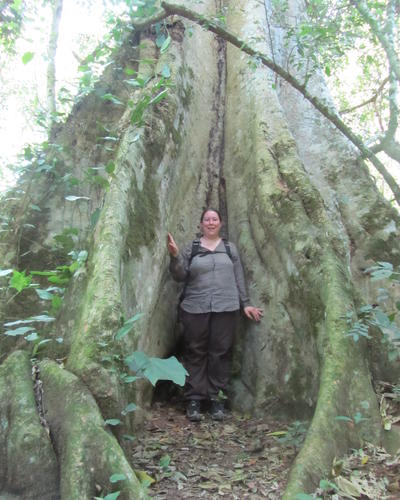
April 2018 -
What is the Insect Ecology group? And a Q & A with Group Leader Dr Edgar Turner
By William Foster
The group is currently made up of fourteen people, including academic, research and support staff. Our core mission is to study the ecology of insects in their natural habitats, focussing on their biodiversity, behaviour and function in ecosystems. In addition to research, members of the group take part in teaching, in curating the insect collections of the Museum, and in developing the outreach and public engagement work of the Department of Zoology. Below is a list of the current members of the group.
Dr Edgar Turner Lecturer, Curator of Insects, Group Leader
Dr Amy Eycott Post-doctoral Research Associate
Dr Sarah Luke Post-doctoral Research Associate
Dr Andrew Bladon Post-doctoral Research Associate
Dr Henry Disney Affiliated Researcher
Dr William Foster Emeritus Curator of Insects
Matthew Hayes Research Assistant in The Insect Room
Russell Stebbings Museum Assistant (Invertebrates)
Alice Fairnie PhD student on rotation
Martina Harianja MPhil student
Julie Hinsch PhD student
Amelia Hood PhD student
Michael Pashkevich PhD student
Helen Waters MPhil student
Q & A with Dr Edgar Turner
Can you briefly outline what your role is in the Insect Ecology Group?
I am a University Lecturer and Curator of Insects in the University Museum of Zoology, head of the Insect Ecology Group, and a Fellow at Clare College. As you can tell from my job titles, mine is quite a diverse role! A lot of my work involves collaborating with other members of the group, including our graduate students, on ongoing research. For example, we currently have several projects running in Indonesia, working with collaborators from the oil palm industry, investigating ways to make tropical agricultural systems more sustainable. In the Department of Zoology, I give lectures for first, second and third year undergraduate students on a range of subjects, from evolution to urban biodiversity. I am also interested in science communication and help to coordinate the public engagement events in the Museum of Zoology, as well as school liaison activities at Clare College.
Which aspect of your research activities gives you the most satisfaction?
It is quite hard to choose one particular thing. All of the different aspects of my job relate to each other. For example, the research that we carry out in Southeast Asia feeds through into my undergraduate teaching and I’ve found that one of the best ways to engage public audiences in biology is to talk to them about your own research. Flipping this on its head, teaching a class of undergraduates is a wonderful way of really understanding a subject and talking to people about your work always generates new ideas!
What first sparked your interest in insect natural history?
I’ve always loved the natural world. My older brother says that his earliest memory of me is sitting in the garden with my arms covered in snails. I think I owe my parents a huge debt for being amazingly tolerant of my interests. As a child, they let me fill my room with cages of stick insects and caterpillars, fish, newts and frogs. There is nothing like actually watching living insects to develop a fascination of them, whether this be in a nature reserve, a park or a garden. Keeping some of them and seeing how they grow really adds to this. I’m worried that many young people growing up today have few of these opportunities, perhaps making it harder and harder for younger generations to really engage with wildlife.
Which piece of research that you have done so far are you most proud of?
It is not a particularly ground-breaking study, but my favourite piece of research was investigating the habitat needs of a threatened UK butterfly called the Duke of Burgundy on a Wildlife Trust-managed chalk grassland reserve in Bedfordshire. Over the course of two or three years, we got to know the behaviour and habitat needs of the butterfly really well. In particular, we discovered how critically important shelter was for the butterflies and were able to work with the Wildlife Trust to tweak their management of the reserve in response.
Which scientist in the past few decades has had the most impact in your area of research?
Probably Andrew Balmford and Rhys Green here in Cambridge, for developing the ideas around land-sharing (low intensity agriculture/highish biodiversity over large areas) and land-sparing (highly intensive agriculture in small areas and pristine areas of protected habitat for wildlife) approaches for conservation.
What motivates you to get out of bed in the morning?
Our toddler waking up and saying ‘daddy’ repeatedly.
Which two figures from the past would you invite for a weekend of research with you at Libo?
If I am completely honest, probably Alfred Russel Wallace, the co-discoverer of evolution by natural selection with Darwin. I think he would be very easy to get on with, but would probably be extremely depressed when he saw the lack of forest left in the areas he knew. Can I have Poirot as my second?
Are there any character traits that all successful field biologists must have?
No – I think that anyone can do field biology and it takes a range of different people and approaches. Not minding sharing space with rats and cockroaches also helps.
Apparently, you love the stories of the "Golden Age" of detective fiction. Why? What's wrong with Morse?
They are the perfect novel – a gripping story, interesting characters, a problem to solve and a satisfying conclusion. I quite like Morse too, but it is a bit too close to my real life.
Agatha Christie or Dorothy L. Sayers?
Neither. My first love is Margery Allingham, for her impeccable limpid prose.
What is your favourite TV programme?
The Detectorists. I love the quiet, understated, piercing humour and the fact that it is set in Essex: God's Own County.
Who should succeed David Attenborough?
No-one: he isn't The Queen. I think there is a huge pool of talented science communicators out there who should be given freer reign to communicate aspects of the natural world to new audiences.
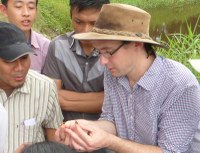
March 2018 -
The El Niño Study Tour and Across the Continents School Outreach projects
By Amy Eycott
Over February and March, BEFTA joined up with three other projects from the southeast Asia/Oceania region to share their results on ecosystem recovery from the 2015/16 El Niño drought. Six young scientists from the region, plus two UK scientists and an education specialist from the University of Cambridge Museum of Zoology, toured the southeast Asian research sites to present findings, exchange knowledge and build networks. We visited Danum Valley Field Centre and the Stability of Altered Forest Ecosystems project in Malaysian Borneo and the BEFTA location at SMARTRI in Libo, Sumatra. At each site we made presentations and visited field experiments. We visited schools around Libo to deliver sessions on habitat change and give the tour participants training in dissemination to schools which they will take back to their own sites. The tour rounded off with a workshop at Pekanbaru, Sumatra, attended by industry, academic and Roundtable on Sustainable Palm Oil (RSPO) representatives.
The results from BEFTA are looking interesting, with El Niño drought disrupting both decomposition of frond litter in the soil and the predator-prey dynamics in the oil palm canopy. (Here, we won’t ‘give away’ the headline findings from the other projects). This post is mostly to highlight the communications we’ve put out about the tour in other places. On our ‘Fieldwork Adventures’ blog there are three posts describing in detail what we got up to, including the videos we’ve made for school-age children in the UK. Read https://fieldworkadventures.wordpress.com/2018/02/27/across-the-continents-into-the-rainforest/, https://fieldworkadventures.wordpress.com/2018/03/05/across-the-continents-a-changing-landscape/ and https://fieldworkadventures.wordpress.com/2018/03/25/across-the-continents-the-next-generation/ for more, including pictures of some very cool wildlife spottings!
January 2018 -
A Friend of the Fens: The Large Copper Butterfly
By Matt Hayes
As we gear up for the reopening of the University Museum of Zoology here in Cambridge (UMZC), we thought it would be a good time to give you a sneak peek behind the scenes. There is a huge amount to be seen at the museum but not all of our extensive collections can be put on display. Some of our stored material includes the millions of specimens held in our insect room, many of which were collected from around Cambridgeshire almost 200 years ago by the likes of Darwin and his contemporaries. These give us an important glimpse into the past and offer us insight into just how much our local area has changed.
For the species we want to talk to you about today, the large copper butterfly, this is particularly relevant as it is now extinct in this country and one of the last recordings of the species in the UK comes from Cambridgeshire; at Bottisham Fen in 1851. Sadly, the British population of the large copper can now only be seen in museum collections like the ones stored here at the UMZC. However, by looking back at what we have lost we have the opportunity to better understand the causes of past declines and protect other species into the future.
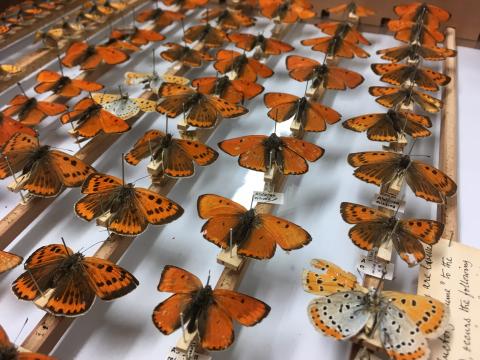
The large copper butterfly used to range across the wetlands of south east England but leading up to its extinction, numbers had been falling for some time. Huge areas of fenland had been progressively drained in order to clear land for agriculture and with the loss of this habitat the species that relied on it had also began to disappear. When wind powered drains were replaced by sophisticated steam pumps, even previously inaccessible areas were now under threat of drainage. Leading up to 1851, this resulted in the loss of the few remaining large fenlands in Cambridgeshire and meant that the large copper butterfly could no longer be supported. Fortunately, not all fenland species suffered the same fate and despite being lost locally, the beautiful swallowtail butterfly was able to hold on in the surviving wetlands of the Norfolk Broads. With hard work and a little luck, it will hopefully be possible to draw these charismatic species back to Cambridge in the future.
Using the knowledge gained from our past mistakes, extensive efforts have now been undertaken to manage and restore areas of Cambridgeshire’s fenland. As part of The Great Fen Project a vast landscape has been reflooded and with time, swallowtails may be able to recolonise these areas. If enough fenland can be reclaimed, it may even be possible to reintroduce the large copper from populations abroad. Let us hope that our museum specimens will soon be re-joined by their free flying relatives.
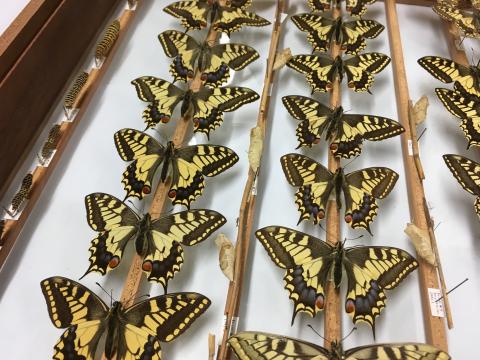
November 2017 -
Restoring riparian areas in oil palm plantations, and an introduction to the RERTA Project in Sumatra, Indonesia
By Sarah Luke
Riparian zones are areas of land next to water bodies, including the banks of rivers, and streams, and the sides of lakes and ponds. They are a highly important habitat as they act as an interface between land and water. This means that they can often support a wide range of both land and water-associated species, as well as providing essential regulation of conditions within water bodies including inputs of leaves, woody material, sediment, nutrients, water flow, and control of water temperature through shading.
In agricultural areas, riparian zones are often protected in order to help protect water bodies from the impacts of agriculture. Strips of natural, or non-cultivated vegetation around waterways known as riparian buffers (or reserves, or margins) can help to trap soil and flood water that is washed off bare fields, prevent chemicals reaching waterways, and maintain natural conditions within the water body. They can also provide valuable natural habitat for both riparian and terrestrial species, areas of carbon storage, and contributions towards services such as pest control and maintenance of a clean water supply. Given their numerous benefits, multiple crop certification criteria, as well as government regulations, require that riparian buffers should be preserved in agricultural areas.
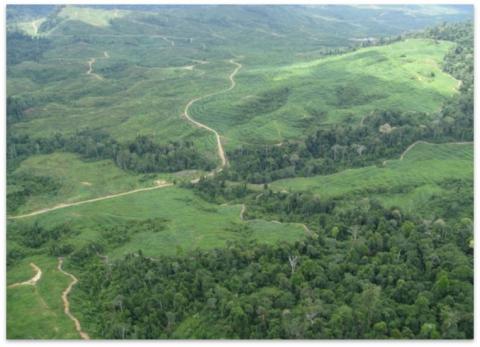
Forested riparian buffers within an oil palm landscape. Photo credit: Ed Turner
Much of the Insect Ecology Group’s research work is based in oil palm plantations in Southeast Asia. Although natural forest buffers have been retained in some oil palm plantations, they vary in terms of habitat quality, and are completely absent in some areas. There is therefore a widespread need for restoration of riparian buffers. However, little research has been done into how best to do this in oil palm plantations. Along with collaborators from the Sinar Mas Agro Resources and Technology Research Institute (SMARTRI) in Sumatra, Indonesia, researchers from the Insect Ecology Group are establishing a large scale, long term experimental project to test different strategies for riparian restoration in oil palm plantations: the Riparian Ecosystem Restoration in Tropical Agriculture (RERTA) Project.
The RERTA Project is making use of planned replanting within Sinarmas estates in Riau Province, Sumatra, to establish four different replicated riparian restoration treatments:
- Replanting oil palm right up to the river’s edge and leaving no riparian buffer (control treatment)
- Removing all oil palm and planting native tree seedlings within a 50m wide riparian buffer
- Leaving mature oil palms in place and allowing natural regrowth within a 50m wide riparian buffer
- Leaving mature oil palm as well as planting native tree seedlings within a 50m wide riparian buffer
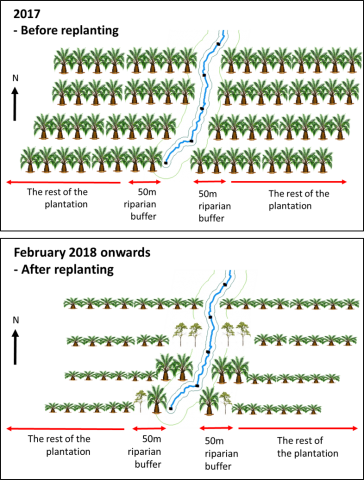
The RERTA Project set-up before and after the experiment begins in early 2018
We will be assessing the impacts of these different treatments on a wide range of environmental variables, biodiversity of key taxa, ecosystem processes, and economic factors. We will be taking measurements before and after establishment of riparian experimental treatments using a before-after-control-impact (BACI) design. The RERTA Project began in September 2017. We are currently taking baseline, “pre-treatment”, measurements at our first RERTA site before experimental treatments are set up in February/March 2018. We then plan to take follow-up, “post-treatment” measurements soon after treatment set-up (June-July 2018), over a year after treatment set-up (late 2018), and in the longer term (pending additional funding).
Watch this space for updates as the RERTA Project unfolds!

November 2017 – Insects and Wine tasting evening.
By Amy Eycott and Michael Pashkevich
We ate insects! And it wasn’t (all) bad!
Five members of the Insect Ecology Group went on an ‘Insects and Wine Pairing’ evening at St John’s College on the 1st November. Courses included cheese scones made with 30% cricket flour, a maple, pecan and locust tart, chocolate worms (which were mealworms, larvae from the darkling beetle family Tenebrionidae), ant crème fraiche and insect fudge (more mealworms). Everyone was very brave and tried all the courses, though not everyone finished each item! It turns out that Helen doesn’t actually like maple and pecan pie in the first place, while Amy has not recovered from an unpleasant mealworm experience on fieldwork… It was good, thought-provoking fun and has started plenty of discussion around the likelihood that insects will form an increasing part of our food supply in the next 50 years.
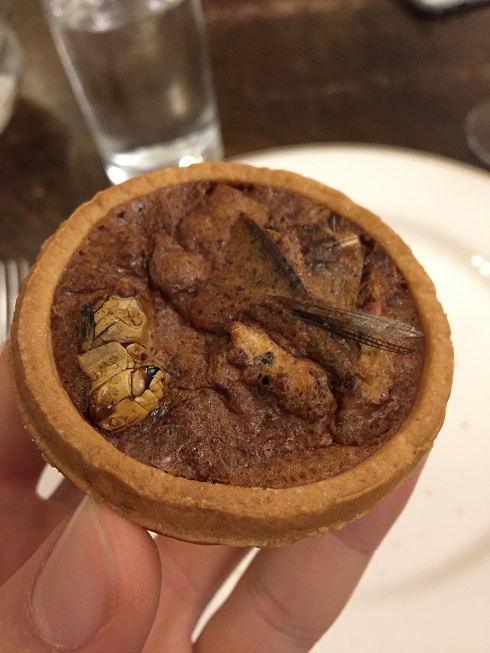
A maple and pecan pie featuring a locust. Amy says of the experience “The locusts were less chewy and more crunchy than I anticipated.” However, everyone agreed that the texture could be improved by removing the wings beforehand. Photo by Michael Pashkevich.

Michael takes on a chunk of mealworm fudge. Michael described the evening as ‘life-changing’, but added “It was surprising to have mealworms floating around my mouth after the fudge itself dissolved. I can't decide if it was an entertaining culinary surprise or jolting shock.” Photo by Helen Waters.
September 2017 - A trip to visit another oil palm-based research project in Sumatra, Indonesia
By Millie Hood
An Effortless Trip to EFForTs
It was with much excitement that Insect Ecology Group members William Foster, Ed Turner, Amy Eycott, Sarah Luke, Millie Hood and Eleanor Slade (University of Oxford), set off to meet the EFForTS group in Jambi, Indonesia, this August. Despite the early hour on a Sunday morning, we were welcomed most-warmly by Dr Aiyen Tjoa and Prof Bambang Irawan at the airport, and our journey passed quickly with interesting conversation, muffins and pastries aplenty.
Dr Clara Zemp showed us around her biodiversity enrichment project, graciously answering our battery of questions. We enjoyed exploring the forested islands, where the oil palm matrix has been enriched by the planting of local trees. It was fortunate timing for us too, as Sarah Luke will soon be planting local trees in her riparian buffers for the RERTA project at the BEFTA programme, so we gained a lot from Clara’s good advice.
After a quick rest and a delicious dinner, we headed out in the dead of night to hunt for the consumers of fig fruits. We were armed with a UV torch, as the fruits had already been dyed with UV dust. Unfortunately, we did not catch the fruit forager this time. However, as we were also equipped with night vision goggles, it hardly mattered.
The next day we were whisked off to meet Dr Christian Stiegler, who dazzled us with the complexities of his climate tower. Then we made a quick pit stop at their herbicide experiment, which was very interesting in light of our understory vegetation manipulations at the BEFTA programme. The weekend was wrapped up by a series of talks, a stroll along the pedestrian bridge in Jambi, and (somehow) we even fitted in more muffins!
A huge thank you to the EFForTS programme, particularly Dr Aiyen Tjoa, for your great hospitality. We look forward to working with you in the future. To learn more about the Ecological and Socioeconomic Functions of Tropical Lowland Rainforest Transformation Systems (Sumatra, Indonesia) (EFForTS) Programme visit their webpage: http://www.uni-goettingen.de/en/310995.html
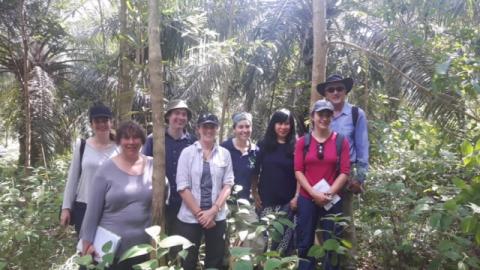
A group photo with Aiyen and Clara in one of their research plots.
September 2017 - Insect Identification Course in Sumatra, Indonesia
By Amy Eycott
We ran an insect identification and curation course!
This August, Insect Ecology Group members Ed Turner, Amy Eycott, Sarah Luke and Amelia Hood, and Eleanor Slade, from the University of Oxford, ran an insect identification course titled “An Introduction to Insects”. We ran the five-day course in Sumatra, Indonesia, with our collaborators at SMART Research Institute. There were eighteen participants, from SMARTRI, the Center for Natural Resources Conservation, and the State Quarantine in Riau. We started by looking at the insect orders, then more closely at dung beetles and ants, which are both really important groups for ecosystem function in oil palm plantations. Eleanor Slade explained just how the world would look without dung beetles (clue: not pleasant….). Then Millie Hood talked about the diversity and importance of ants, which are the subject of her PhD research. We also demonstrated sampling methods: pitfall traps, bowl traps to attract pollinators, beating (the palms not the insects!), soil searching, transect walks, and the use of baits for ants and for dung beetles. Everyone on the course had a go at learning to pin a specimen and at pointing, which is mounting an insect on a tiny piece of card when it is too small for pinning. It was great fun and everyone learned something, even the teachers. We hope to do more of this capacity-building work in the future.
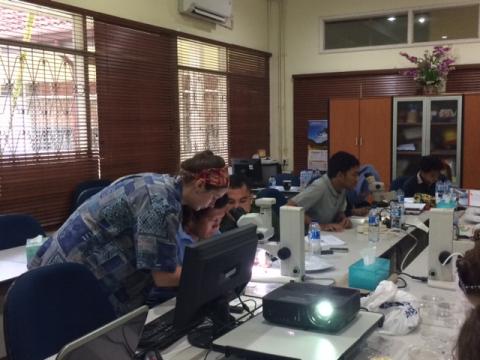
Millie helping with ant identifications.
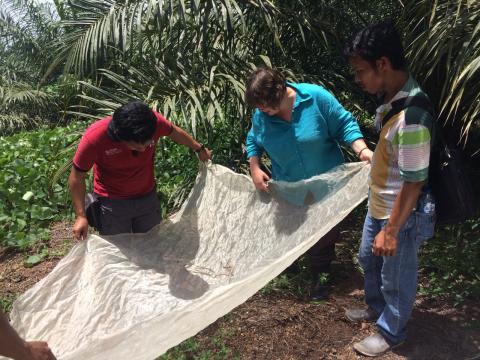
Amy demonstrating the beating technique for sampling insects on palm fronds.
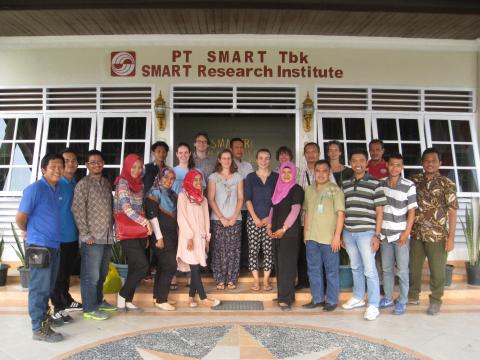
A group photo of everyone involved in the course.
September 2017 - news from the recent Insect Collection Managers Group meeting in Edinburgh
By Ed Turner. This blog post also appears on the University of Cambridge Museums (UCM) website (https://www.museums.cam.ac.uk/)
"I took over as Curator of Insects in the Museum of Zoology less than a year ago, so there is still a lot I need to learn when it comes to managing the Museum of Zoology’s collection of over a million insect specimens. My colleague, Russell Stebbings, and I therefore jumped at the opportunity of meeting other insect collection managers from across the UK at the Twenty-fifth meeting of Insect Collection Managers Group, held at the National Museum of Scotland in Edinburgh earlier this month. Not only is this a chance to meet old friends and new colleagues, but it is a fantastic way of sharing knowledge across museums and starting up new collaborations.
When I first started as Curator of Insects, one of the things William Foster, my predecessor, recommended most was attending the Insect Collection Managers Group Meeting. “It is probably the most useful meeting I attend all year” were his exact words. This annual event includes attendees from insect collections across the UK. The style of the meeting is informal, with a social event in the evening and then a day’s session, discussing ongoing collections issues, such as making insect collection information available online, staff and volunteer training, controlling pests, and updates on best practice for collecting insects and managing newly-donated specimens. There is also a chance to look around a different collection each event, as the location of the meeting changes from year to year.
This year’s meeting didn’t disappoint. Not only was it based in the spectacular National Museum of Scotland (NMS) in Central Edinburgh, but it also included attendees from ten other institutions across the UK, including the World Museum in Liverpool, Manchester Museum, the Hunterian Museum in Glasgow, the Oxford University Museum of Natural History, the National Museum of Wales, and the Natural History Museum in London. Representatives from the Food and Environment Research Agency and the British Entomological and Natural History Society were also present. For me, one of the best things about the meeting was the time given to chat to people informally and to find out about successes and issues people had experienced with their collections during the year. As the Museum of Zoology is currently being renovated, it was particularly useful to talk to other museums who had already been through renovation projects and to compare notes. A highlight was certainly the chance to look around the new NMS insect collection facilities, located just outside of the city centre. Housed in a new custom-built room, these are beautifully laid out, easily accessible and include lots of room for visiting researchers to carry out their work. There were also some spectacular insects of course!
This year has certainly convinced me to make these meetings a regular fixture in my calendar. Building connections and collaborations with other museums from across the UK and sharing knowledge and good practice benefits all of the collections involved. In fact, we have offered to host the event in Cambridge next year!"
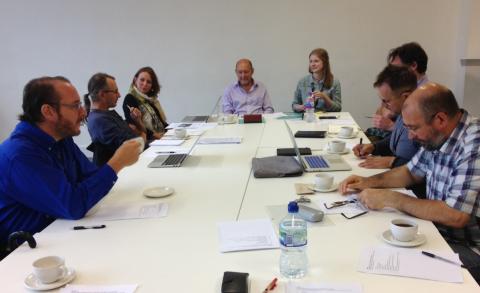
Preparing for the meeting. Photo Russell Stebbings
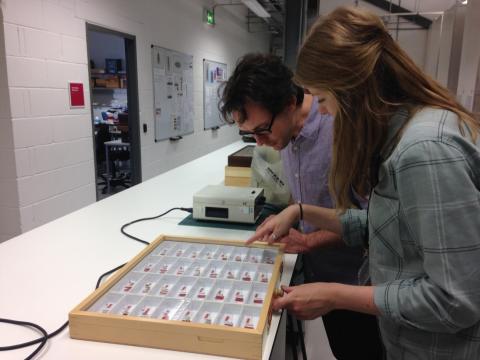
Looking around the newly housed collection in Edinburgh. Photo Russell Stebbings
June 2017 - Oil palm plantations: a beginner’s guide to invertebrate interactions
By Amy Eycott
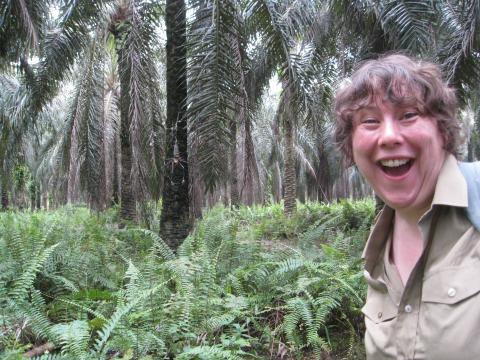
The Golden silk orb weaver, Nephila, was cause for some excitement. Photo credit: Ed Turner.
I’ve just joined the Insect Ecology Group as a postdoc studying oil palm biodiversity as part of the El Niño project, but until three weeks ago I’d never been to an oil palm plantation, or even Southeast Asia, before. So when I took a two-week trip in May to meet the project staff and see the sites, there was the potential for everything to be a little overwhelming. Fortunately, after a few days relaxing in Bogor I arrived at the BEFTA site in Sumatra at a time when pretty much the whole Cambridge team were there.
Now, as well as having no experience of Southeast Asia, I also had rather limited experience with insects. So it was an intense but a very fun two weeks, as I got to ask as many silly questions as I wanted, the team always ready with a patient reply. Here’s a potted summary of the main things I learnt which I think might be interesting for people as uninformed as I was. I’m interested in interactions, so the focus is on ecology rather than taxonomy!
There are lots of grasshoppers, crickets and bush crickets (katydids) in oil palm plantations. If you hold a bush cricket badly, it can give you quite a nip for such a peaceful herbivore. Rhino beetles are a big pest in oil palm plantations because the adults can damage young palms. They don’t bite but instead pinch you between two sections of leg that have spines, which can puncture your skin. They also make a strange hissing sound by rubbing their wings against their wing-cases (elytra). The other main pest is a moth called a bagworm; they have caterpillars which live in little cases made of dead leaves to protect them from predators.
The main invertebrate predators of these pests in the plantations are ants, assassin bugs and parasitic wasps. The number and diversity of ants is pretty impressive and some of them have crazy jaws – BEFTA PhD student Millie works on how useful ants are. Assassin bugs are ‘true bugs’ with sucking mouthparts and while many true bugs are sap-sucking, assassin bugs use their very extended mouthparts to stab the soft bodies of invertebrate prey and suck them to death from the inside out. The parasitic wasps lay eggs on or inside their hosts. They must be effective at pest control because the plantations have started planting nectar-rich flowers to give the adults an energy boost, which should help them to live longer and produce more eggs – see work by Julie Hinsch to find out more.
Of course, this is a simplified version of what goes on, even in oil palm monocultures. There are praying mantids, scorpions, aphids, dragonflies sporting funky 1980s looks, and spiders including the very cool Golden silk orb weaver, Nephila. I look forward to writing more informed contributions as the year goes on!
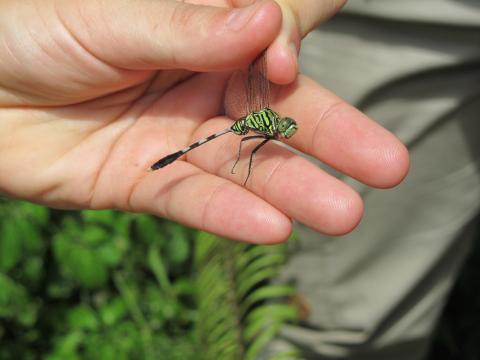
80s style for the Orthetrum sabina dragonfly. Photo credit: Amy Eycott.
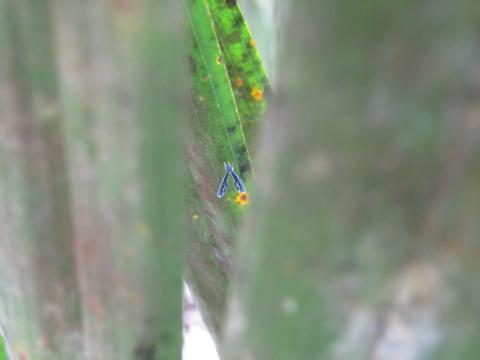
This little planthopper caught my eye. It’s a derbid planthopper, a pest of palms. Photo credit: Amy Eycott.
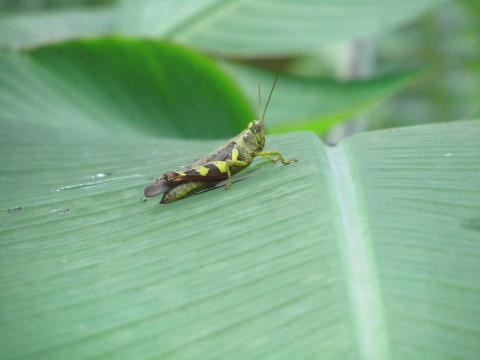
These eye-catching grasshoppers were everywhere. Yellow and black seems to be a common warning colouration in tropical grasshoppers. Photo credit: Amy Eycott.
May 2017 - Mapping Duke of Burgundy butterfly habitat in Totternhoe Quarry Reserve, Bedfordshire
By Matt Hayes
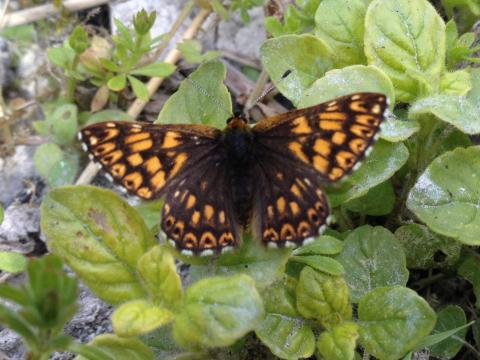
A rare Duke of Burgundy in Totternhoe Quarry. Photo credit: Matt Hayes.
In early January I returned to Totternhoe Quarry to carry out the finishing touches to my GPS map of the reserve. In just two days I was able to record the last few habitat areas on site, before finally adding the overall reserve boundary and a series of criss-crossing footpaths. With these individual features now recorded all that remained to produce the map of the reserve was to stitch them together. Unfortunately, this small step turned out to be anything but simple!
Despite having access to sophisticated mapping software, it soon became apparent that it could not recognise the files that I had produced with my handheld GPS unit. Even more worryingly, after some research I found that the software I had used with my handheld GPS was now obsolete and out of production! This put me in an awkward situation where I had the entire reserve mapped out but no way to view any of my work, putting a small hitch in an otherwise well-laid plan…
Fortunately, after some email correspondence, the company that sold the GPS unit offered to convert my feature files for me and then email them back to me. Finally, after a few months of fearing it would never be completed, I assembled all of my recorded features together to produce the map of Totternhoe Quarry Reserve for the Winter of 2016.
This map then enabled me to start work analysing distribution data of the endangered Duke of Burgundy butterfly; the target species I am researching in my MPhil project. GPS locations of butterfly sightings can be laid on top of my map and hotspots of clustering on the reserve can be determined. With data I collected and a decade of recordings from volunteers and workers of the Wildlife Trust, I was able to analyse the first long term data set on the distribution of the Duke of Burgundy butterfly within a reserve. The GPS map allowed key habitat features within hotspots, locations used year on year by this butterfly, to be identified.
This information will be vitally important for informing better management for the Duke on our reserves and give us a more detailed idea of the conditions we should be trying to create in order to maintain stable, healthy populations of this species.
March 2017 – A new paper by Amelia Hood and colleagues from their research on ant-plant mutualisms in Papua New Guinea
By Amelia Hood
“Network reorganization and breakdown of an ant-plant protection mutualism with elevation”
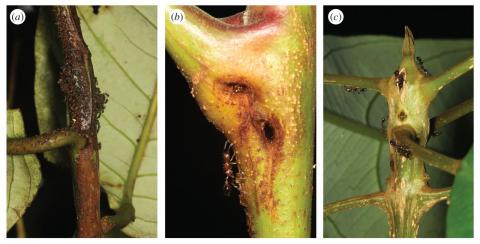
Photo credit: Tom Fayle. Domatia of the most abundant myrmecophytes in this study. (a) Myristica subalulata with ant genus Anonychomyrma, (b) Chisocheton lasiocarpus and (c) Ryparosa amplifolia with ant genus Podomyrma.
Ant-plant mutualisms are common in the tropics, and some of the best-studied mutualistic networks. The benefits of such mutualisms are most often a safe nesting space or food for the ants, and protection from herbivores or encroaching vegetation for the plants. However, these benefits and their associated costs vary for both partners depending on several biotic and abiotic factors.
A team of researchers from the Czech Republic (University of South Bohemia & Biology Centre CAS), Papua New Guinea (New Guinea Binatang Research Centre & University of Papua New Guinea) and the Insect Ecology Group have assessed the effect of elevation on ant-plant interaction networks, ant protection behaviour and the correlated changes in plant herbivory damage in primary tropical rainforest in Papua New Guinea.
They identified all myrmecophytes and their inhabitants within ten 0.15ha transects from 700 to 1600 m.a.s.l. They found that as elevation increased there were fewer ant-plants and the species richness of both partners decreased. Connectivity increased and specialization decreased more than could be accounted for by the reduction in ant-plant abundance alone.
Ant protection behaviour was measured for the most common ant-plant mutualism, between Myristica subalulata and ant genus Anonychomyrma, by observing the ants’ response to a surrogate herbivore. Ants recruited less often and spent less time attacking this herbivore at higher elevations due to a turnover of ant species, as opposed to changes in within-species behaviour. Herbivory damage, which was scored visually, increased with elevation due to changes in ant and plant species.
This study shows that abiotic factors, such as decreasing temperature along an elevational gradient, can cause mutualistic networks to break down due to a reduction in the number of available partners and a decrease in ant protective behaviour. These findings highlight the vulnerability of these complex mutualistic networks to increasing anthropogenic disturbance such as climate change.
This work is published in the journal Proceedings of the Royal Society B: Biological Sciences (available at http://rspb.royalsocietypublishing.org/content/284/1850/20162564.abstract) by Nichola S Plowman, Amelia S C Hood, Jimmy Moses, Conor Redmond, Vojtech Novotny, Petr Klimes and Tom M Fayle.
February 2017 - A recent publication from the Insect Ecology Group
By Sarah Luke
"The impacts of habitat disturbance on adult and larval dragonflies (Odonata) in rainforest streams in Sabah, Malaysian Borneo"
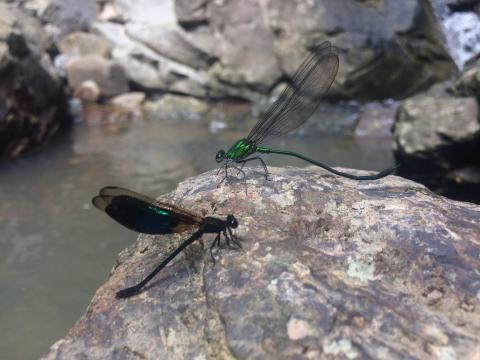
Photo credit: Sarah Luke
Dragonfly communities in tropical rainforest streams in Malaysian Borneo are heavily affected by selective logging and conversion of surrounding land to oil palm plantations.
A study led by researchers in the Insect Ecology Group, and carried out at the Stability of Altered Forest Ecosystems (SAFE) Project in Sabah, Malaysian Borneo, found that communities of both adult dragonflies and their larvae were substantially different in oil palm and logged forest streams compared to streams in old growth forests.
The team surveyed adult and larval dragonflies across 16 streams, including streams surrounded by old growth forest, selectively logged forest of different qualities, and oil palm plantations. Some of the oil palm plantation streams had narrow strips of forest left along their banks (riparian buffers), whilst others had oil palm growing right to the water’s edge.
Very different sets of species were found across the sites, with more widespread and common dragonflies, and fewer forest-dependent and range-restricted damselflies, found at sites surrounded by oil palm or heavily logged forest, compared to old growth forest streams. There were also fewer larvae in oil palm plantation streams, than in streams surrounded by higher quality forest, suggesting that dragonflies and damselflies are using these streams much less for breeding, or that larvae are surviving less well in oil palm streams.
Having riparian buffers around streams in oil palm seems to offer some protection for forest-associated dragonflies, but only if the buffers are wide, and mostly for adults rather than larvae. Efforts to protect forest dragonfly communities should therefore focus on conserving remaining forest areas, but good management and preservation of forested riparian buffers in oil palm plantations could also be highly valuable.
This work is published in the open access paper “The impacts of habitat disturbance on adult and larval dragonflies (Odonata) in rainforest streams in Sabah, Malaysian Borneo” in the journal Freshwater Biology (available at http://onlinelibrary.wiley.com/doi/10.1111/fwb.12880/abstract) by Sarah H Luke, Rory A Dow, Stephen Butler, Chey Vun Khen, David C Aldridge, William A Foster and Edgar C Turner.
February 2017
By Sarah Luke
The European Conference of Tropical Ecology, Brussels
The Insect Ecology group, and collaborators from the University of Southampton, recently attended and presented their work at The European Conference of Tropical Ecology in Brussels. The conference was hosted by the Society for Tropical Ecology (formerly Gesellschaft für Tropenökologie e.V., gtö) – Europe’s largest tropical ecology society – and was attended by over 360 delegates, from 37 different countries. The theme of the conference was “(Re)connecting biodiversity in space and time”, and symposia topics included issues relating to traits, functions, genetics, animal behaviour, land-use impacts, and conservation, across a wide range of tropical biomes.
The BEFTA Project team – including Ed Turner, Sarah Luke, Millie Hood and Julie Hinsch from the University of Cambridge, and Jake Snaddon from the University of Southampton – gave presentations on recent findings from the BEFTA Project in the “Human-modified tropical forests” symposium. Masters students from the University of Southampton – Frances Mullany and Georgina Hollands – also presented a poster on their work looking at the impacts of a hurricane on butterfly and ant communities in Belize.
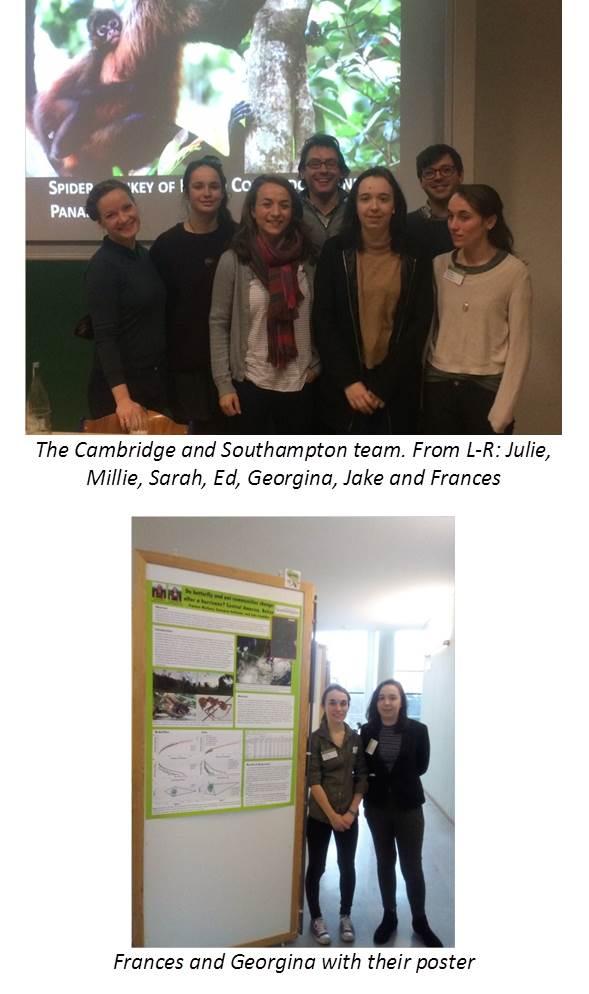
Sarah began by introducing the topic of oil palm, and the need to strike a balance between the demands of production and protecting ecosystems. She introduced the BEFTA Project, discussing its aim of testing the effects of understory vegetation complexity in oil palm plantations on biodiversity, ecosystem function, and yield; and also explained the experimental design of the BEFTA Project (more information here: http://oilpalmbiodiversity.com/research/befta-project/). She then presented some early results looking at the effects of manipulation of the understory vegetation at BEFTA on canopy ants, caterpillars, and herbivory of oil palm leaves. Results so far suggest that oil palm ecosystems are more complex than we might think, with high variability over time, including in response to rainfall. No effects of understory treatments are yet evident on canopy communities, but there has also not yet been a drop in yield as a result of the treatments. It will be interesting to keep monitoring effects over time.
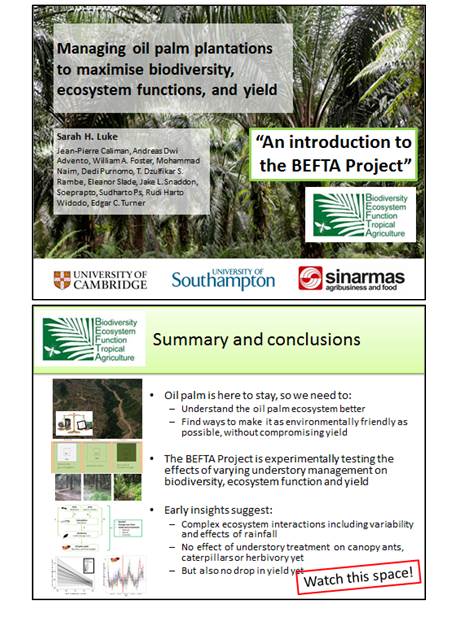
Ed was the next to speak, and took a closer look at the effects of the BEFTA understory treatments on predators within the understory. He presented findings of Cambridge Masters students – Dave Kurz and Dakota Spear – along with his work from the project. They found that there was lower frog, assassin bug, and spider abundance and richness in the understory of reduced complexity plots compared to normal and enhanced plots. This included lower abundance of large golden orb web spiders (Nephila spp) in reduced complexity plots, and a consequent drop in prey consumption across these plots. However, they found no difference in the diversity or abundance of ground or canopy spiders between plots with different understory treatments. Altogether this shows that having more complex understory vegetation helps to support a wider range of predators, which could be a key part of pest management within plantations.
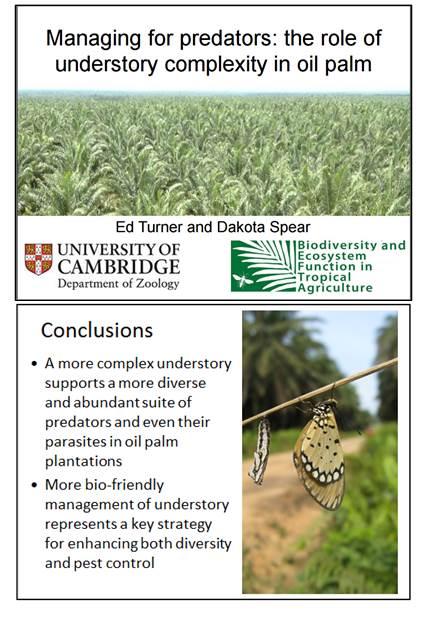
Julie continued the theme of pest management within oil palm plantations, by presenting results from her Masters and PhD projects on the value of planting nectar-rich plants within oil palm plantations to help promote beneficial insect predators. These beneficial insects include parasitic and predatory wasps that feed on caterpillars and other herbivores that eat the oil palm leaves. Extensive loss of leaves has been shown to harm oil palm yield, and so plantations are keen to control herbivores. Julie is testing whether the nectar-rich plants can help boost the beneficial insect populations, and therefore reduce the need for pesticides to be used in the plantations. Her results so far suggest that nectar-rich plants show great potential for increasing the abundance of beneficial insects, and consequently, reducing herbivory of palms. There is also a lot of potential for this pest management strategy to be rolled out on a larger scale across plantations by planting flowers in existing gaps in the plantations.
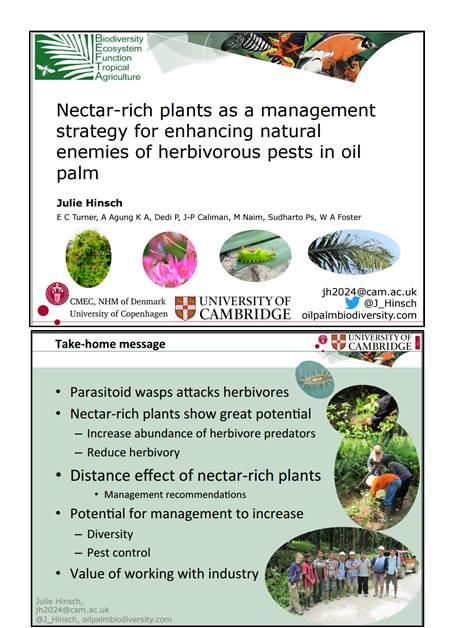
Alongside the above-ground work the team have collected data on how the BEFTA treatments and habitat complexity is affecting the below-ground biodiversity and processes. Jake presented an overview of this work selecting some results from Adham Ashton-Butt (http://www.southampton.ac.uk/biosci/postgraduate/research_students/aab1v14.page) and Hsaio-Hang Tao’s (http://seap.ipni.net/person/Hsiao-Hang-Tao) PhD projects. Adham’s initial measurements of chemical and physical properties have shown that while soil nutrients change little across the sites, soil moisture is decreased in the reduced vegetation cover BEFTA plots. This impact on soil moisture is also apparent in the data from the replanted areas, which show that as the vegetation cover matures, soil moisture increases at the sites. To complement this, Hsiao’s work on the impact of empty fruit bunch (EFB) application on soil biodiversity and soil properties shows a positive impact of EFB on soil moisture, leading to a positive relationship between soil moisture under the EFB plots and oil palm yield. Work is continuing on the identification and analysis of the soil biodiversity from the plots, and it will be interesting to see how the diversity contributes to this system.
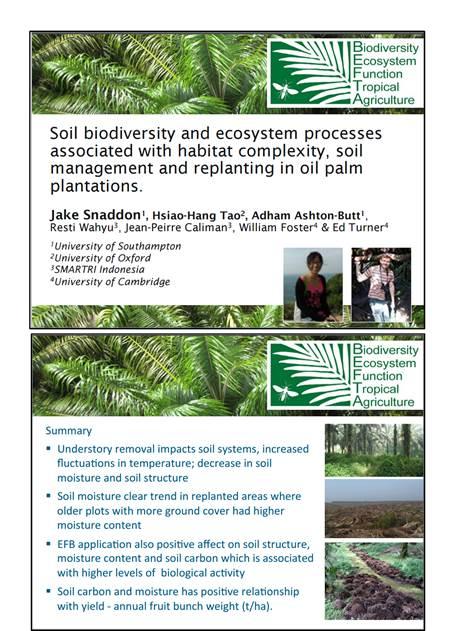
Millie continued the theme of below-ground ecosystem functions, presenting results on soil bioturbation and leaf litter decomposition from her PhD. She has found that oil palm plots that had been replanted, and currently have young palms growing (4 years old at time of study), had no termite mounds and lower rates of leaf litter decomposition compared to mature (25-30 year old) plantation. In the mature plantation, there were more active termite mounds and higher rates of leaf litter decomposition where levels of understory vegetation were higher. She also showed that herbivore abundance is higher in mature plots that do not have understory vegetation, and that herbivory is higher in replanted plots than in mature plots. By comparing a range of ecosystem functions, she was able to show that mature plots with enhanced or normal levels of understory vegetation are functioning more optimally than mature plots with reduced understory vegetation, or replanted plots. Millie plans to test these functions further by conducting ant and termite exclusion experiments, to assess the role of these insects in ecosystem processes within the plantation.
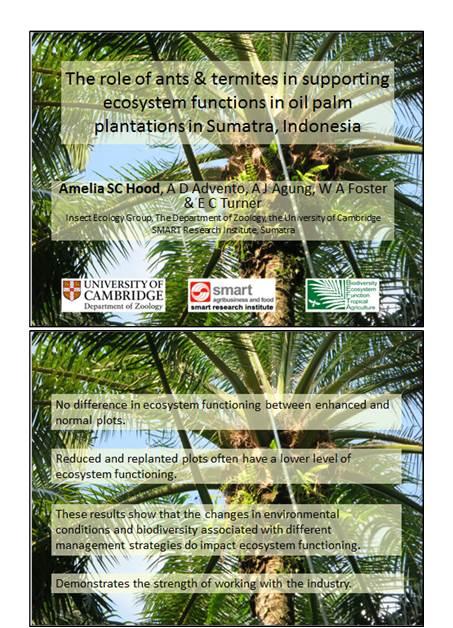
January 2017
By Sarah Luke
Cambridge Science Festival
In under two months time Cambridge will host its annual Science Festival - fourteen days of talks, films, and interactive events celebrating science, maths, technology. For more information about Science Festival 2017 please visit: https://www.sciencefestival.cam.ac.uk/
Work from Amelia Hood - a PhD student in the Insect Ecology Group - featured in last year's festival. Her close-up image of nine species of Polyrhachis ants, created using microscopes and image stitching technology, was presented in an exhibition of scientific images that celebrated the use of techniques beyond just a simple camera shot.
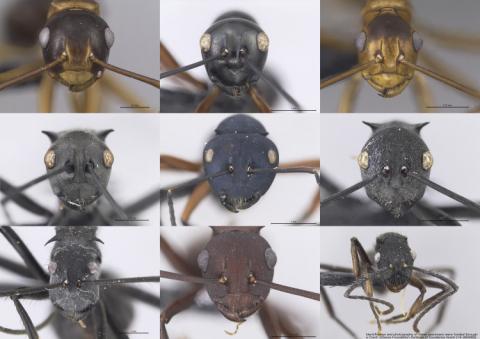
A full description of Amelia's photographs, along with some of the other work presented in the "Beyond Images" exhibition can be found here:
http://www.thememo.com/2016/03/04/beyond-images-cambridge-science-festiv...
December 2016
Mapping Totternhoe Quarry Reserve
By Matt Hayes
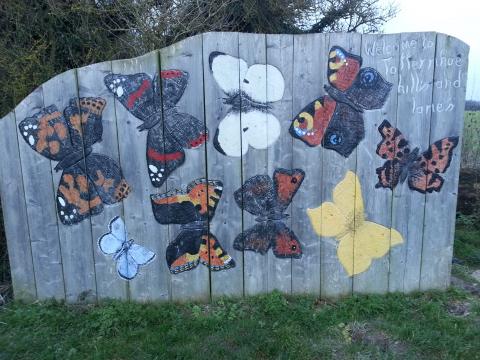
Totternhoe reserve is home to many butterfly species, including the rare Duke of Burgundy
After being taught the basics it was time to put my new GPS mapping skills to the test. Over the course of a week I began to record all of the different areas of habitat present at Totternhoe Quarry. I was helped by an undergraduate student, Marcus Rhodes, and whilst one of us walked the perimeter of the habitat areas, the other recorded slope, aspect, vegetation type and shelter.
Slightly frustrating periods of time would elapse as the GPS recorder could suddenly lose accuracy, giving measurements with several metres of potential error. However, with a bit of patience we were able to wait for the GPS to behave and we made good progress. In all we mapped around 80% of the 14-acre reserve in just 4 days.
Once the last few habitat areas are recorded the final pieces of GPS work will involve mapping the overall reserve boundary and a series of pathways that crisscross the site. After that I will attempt to use Geographic Information Software to stitch the mapped features together into a cohesive representation of the reserve. In the Summer, behavioural sightings of the Duke of Burgundy butterfly can then be added to the map and hopefully this will help us see which habitat features promote mating and flight activity in this threatened species.
Matt Hayes, MPhil student
Matt (top picture) and Marcus (middle picture) busy mapping the reserve
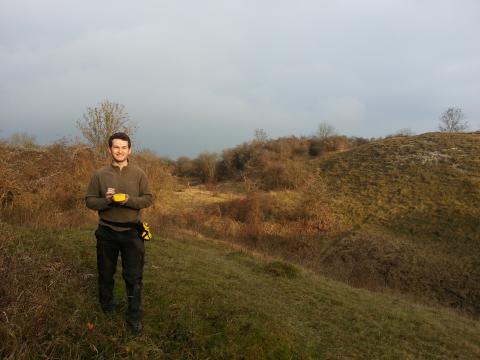
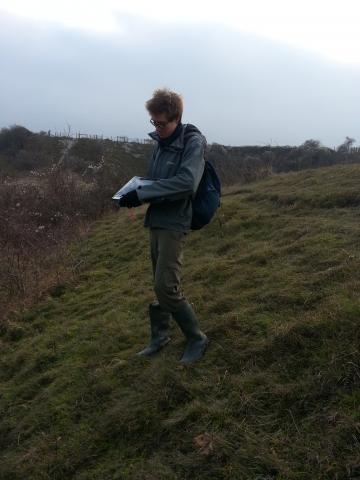
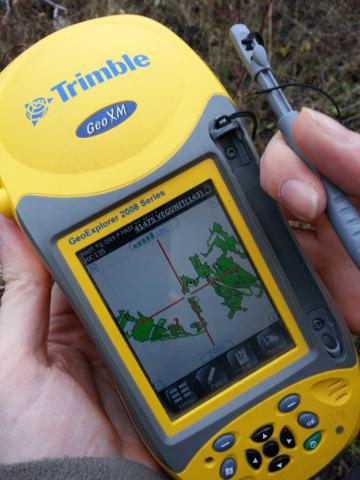
November 2016
Winter fieldwork at Totternhoe Quarry
By Matt Hayes
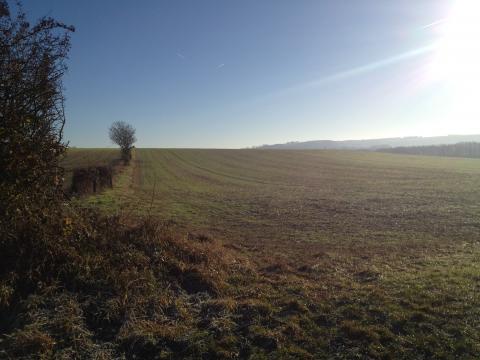
During the Summer the main part of my research project will be looking at how temperature change affects the territorial and mating behaviour of the Duke of Burgundy butterfly (Hamearis Lucina). However, those warm Summer days are still some way off and the adults won’t be on the wing until late April. Luckily this gives me plenty of time to prepare and also gives me the chance to try my hand at learning some new GPS mapping skills!
Over the Winter I plan to map Totternhoe Quarry reserve into areas of homogenous habitat. I will record vegetation type, slope, aspect and shelter and log how these features change across the site. Then come the Summer, when I view the adult behaviour of the Duke of Burgundy, I will be able to place my findings in an environmental context. When I observe a butterfly, I will be able to record its GPS coordinate and simply overlay this data onto my map of the reserve, giving us information on behavioural distributions. This could help us to identify key habitat features that promote a suitable microclimate for this charismatic butterfly and aid us in performing suitable management for it into the future.
The weather (29th November) was set to be cold so I was prepared for difficult working conditions. However, I woke to a beautiful frosty morning with the sun shining at Totternhoe. I then met up with Colin Lucas, formerly of the Wildlife Trust and a veteran of using GPS equipment, who had very kindly offered to teach me how to map the reserve. After a tricky initial hour, where the GPS appeared incapable of record anything other than error messages, we began to make progress. When working correctly the mapping equipment allows you to efficiently note down key habitat features and assign them to real geographic locations by walking around the perimeter of the area in question. By the end of the day I had successfully mapped my first dozen habitat areas and learn’t the basics of producing a GPS version of the reserve. However, my real test will come when I return to the reserve and have to finish the mapping without the help of Colin….!
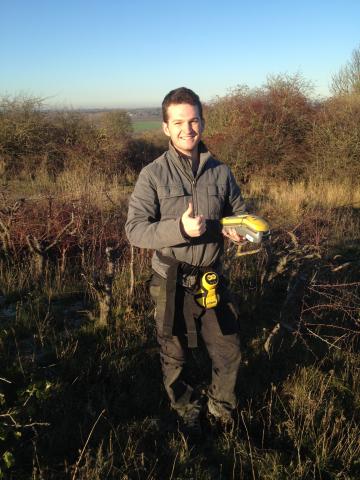
March 2016 - Edgar Turner to become next Curator of Insects
Dr Edgar Turner will become the next Curator of Insects and Insect Ecology Group Leader when William Foster retires in September 2016. He will continue his current research on ecology and conservation in the UK, Indonesia and Malaysia, as well as developing new projects related to the insect collections, outreach and teaching in the department.
Ed recently got this special mention in the Zoology Alumni magazine:
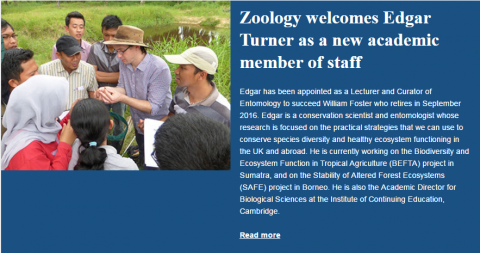
February 2016 - Visit to local school
Ed Turner and Amelia Hood went to the University of Cambridge Primary School for a morning to teach four classes of young students the value and fascinating nature of insects. Ed’s collection of live stick insects incited particularly high levels of enthusiasm, with the female Malaysian jungle nymph (Heteropteryx dilatata) being the most gasp-worthy. The children enjoyed handling the smaller species, such as the Indian stick insects (Carausius morosus). The class finished with a lesson in camouflage and aposematism, and the students coloured in their own insect drawings in light of this exercise.
February 2016 - Insect specimens loaned to the Fitzwilliam Museum, Cambridge, to support their upcoming exhibition 'Crawling with life'
The Fitzwilliam Museum, Cambridge, has just opened a new exhibition of watercolours by the 17th century German naturalists and illustrators Maria Sibylla Merian and Jacob Marrel. They produced a series of highly detailed watercolours of insects, amphibians, reptiles and plants. These works are supported by illustrations of carnivorous plants by German born scientist and illustrator Georg Dionysius Ehret and the French artist and engraver Nicolas Robert.
The Zoology Museum has loaned several of its insect specimens to help support this exhibition.
The exhibition has Free Entry and runs from Tue 2 February 2016 to Sun 8 May 2016.
For more information please visit:
http://www.fitzmuseum.cam.ac.uk/whatson/exhibitions/article.html?5462
September 2015 - Session on oil palm in Southeast Asia accepted for the European Conference on Tropical Ecology, 2016
Insect Ecology group members will be running a conference session entitled 'Managing oil palm landscapes for biodiversity and production: lessons from SE Asia' at the European Conference on Tropical Ecology being held in Gottingen, Germany, in February 2016.
This session will bring together researchers from multiple institutions and countries to discuss research on biodiversity and function of oil palm ecosystems in Southeast Asia, and possible strategies for management and conservation.
For more information about the conference please visit:
May 2015 - "Thirty new fly species in Los Angeles" - a special mention in Science Editors' Choice for work by Henry Disney

(Photo taken from the Science Editors' Choice article, linked below, and originally taken by Kelsey Bailey)
Along with collaborators Emily Hartop and Brian Brown from the Natural History Museum of Los Angeles, Insect Ecology group's Henry Disney has described 30 new species of Megaselia (Phorid flies) found in gardens in Los Angeles.
The species are described in a recent paper in the journal Zootaxa:
http://research.nhm.org/bioscan/publications/pubs/2015-HartopEtAl.pdf
The work has also been highlighted in the Editors' Choice section of the high profile journal Science where they note that even seemingly unpromising urban habitats can yield biodiversity surprises, however it's still uncertain whether these flies are native or exotic species that have been brought in by container shipping.
You can read more here:
http://www.sciencemag.org/content/348/6235/645.5.full?utm_campaign=email-sci-ec&utm_src=email
April 2015 - More recent high profile publications for Insect Ecology group members!
A new paper in the journal Trends in Ecology and Evolution (TREE) led by former group member Tom Fayle, and co-authored by current group member Ed Turner, reviews the recent increase in whole-ecosystem experimental manipulations of tropical forests. They discuss how experimental manipulations, and particularly those on a large scale, offer an important opportunity for trying to tease apart the highly complex interactions between environmental conditions, species and the functions of a complex rainforest system, and therefore offer a crucial first step towards conservation.
The paper published in TREE this week is available here:
http://www.sciencedirect.com/science/article/pii/S0169534715000695
A second paper out this week co-authored by Ed Turner and led by group collaborators from Imperial College and the SAFE Project in Borneo, presents data on the carbon stocks held in deadwood in logged forests. From studies of forest plots in selectively logged forest in Sabah, Malaysian Borneo, they found that more than half of the above-ground carbon in the forests was in deadwood rather than living trees, and so was likely to soon decompose and emit carbon dioxide. This figure is over twice the amount predicted previously in literature, suggesting that the large deadwood stocks in logged forests have previously been overlooked, and therefore a large source of carbon emissions may have been missed out of emissions estimates.
Lead author, Dr Marion Pfeiffer, said:
"It means that a large proportion of forests worldwide are less of a sink and more of a source, especially immediately following logging, as carbon dioxide is released from the dead wood during decomposition.”
The paper published in Environmental Research Letters is available here:
http://iopscience.iop.org/1748-9326/10/4/044019
Articles that discuss this work further are available here:
http://www.bbc.co.uk/news/science-environment-32497537
http://environmentalresearchweb.org/cws/article/news/61035
http://www3.imperial.ac.uk/newsandeventspggrp/imperialcollege/newssummary/news_28-4-2015-13-16-27
April 2015 - Graham Prescott wins 'best student talk' prize at the gtoe European Tropical Ecology Conference, Zurich
Insect Ecology group member Graham Prescott recently picked up the prize for 'best student talk' at the German Society for Tropical Ecology conference, held in Zurich. The conference was attended by over 300 people from 37 countries, and addressed the theme of 'Resilience of Tropical Ecosystems: Future challenges and opportunities'.
Graham presented results of his work studying avian phylogenetic diversity in forest, oil palm and pasture land in Colombia. His PhD considers the impacts of oil palm agriculture on bird, ant and epiphyte communities, and how plantations can be managed more sustainably to help protect biodiversity.
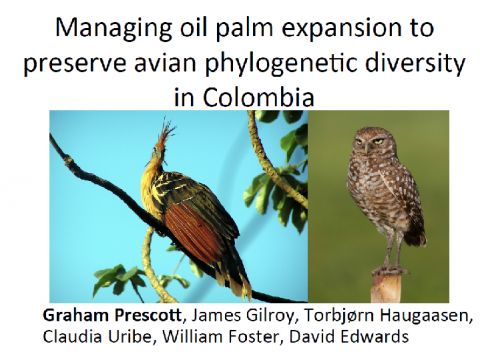
April 2015 - "Logging cuts the functional importance of invertebrates in tropical rainforest" - a new Nature Communications publication
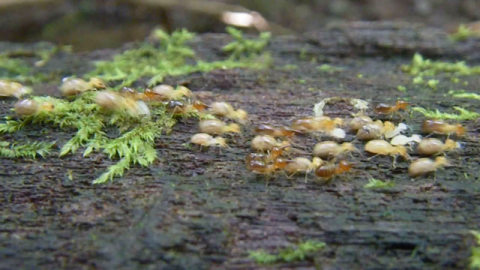
Termites on the move. Photo credit: Sarah Luke
Insect room researchers Ed Turner and Sarah Luke are co-authors on a new paper published in Nature Communications that considers the changing role of invertebrates in ecosystem functions in logged tropical forests.
The research is a collaborative project led by Dr Rob Ewers, Imperial College London, that uses work by multiple scientists working at the SAFE Project (www.safeproject.net) in Malaysian Borneo to consider how logging affects ecosystem function. In pristine forests many ecosystem functions are completed by invertebrates, but in logged forests invertebrate communities are reduced and their role in ecosystem functions declines significantly. Instead, ecosystem functions in logged forests are maintained largely by vertebrates. Although this might be working in the short term, it means that logged forest are likely to be very vulnerable and have little resilience to further changes.
Dr Ewers says: “The forest will keep maintaining itself, but it will be much more susceptible to further change. Relying on vertebrates is a bad tactic – they are less diverse and vulnerable to new challenges such as land use change.”
For example, if logged forest is further converted to oil palm, vertebrates are especially likely to be affected, meaning that ecosystem functioning will change substantially. “Knocking out one or two invertebrates might not be too bad, as there are many others to take their place, but knocking out one or two vertebrates could now be disastrous,” said Dr Ewers.
The rainforest of Malaysian Borneo appears to have shown resilience to selective logging, with vertebrates maintaining functions previously provided by invertebrates. But with large areas of rainforest in Southeast Asia already selectively logged, or cleared for oil palm, and further conversion still underway, we must consider whether this resilience can be maintained and how vulnerable logged forest ecosystems now are.
A press-release with further discussion of the study is available here:
http://www3.imperial.ac.uk/newsandeventspggrp/imperialcollege/newssummary/news_13-4-2015-9-59-13
The original journal article is freely available here:
http://www.nature.com/ncomms/2015/150413/ncomms7836/abs/ncomms7836.html
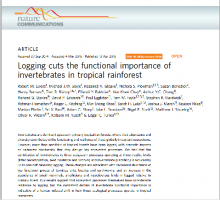
Image is a screen shot taken from the Nature Communications link above
February 2015 - William Foster in BBC's 'Great British Railway Journeys'
Curator of Insects and head of the Insect Ecology Group, William Foster, discusses the work of Charles Darwin and his love of insect collecting with Michael Portillo in this week's episode of 'Great British Railway Journeys'.
The programme covers the journey from Oakham to Cambridge, and considers the beetle collecting of young Charles Darwin when he was a student at Christ's College, Cambridge. William Foster goes on to discuss Darwin's work in the Galapagos and his long term study of barnacles that led him to develop the theory of evolution.
The programme was first shown on BBC2 on 30th January and is available to watch again on BBC iPlayer at the link below. The discussion of Cambridge and Darwin's work starts at 22 minutes into the programme:
http://www.bbc.co.uk/iplayer/episode/b0517vrl/ad/great-british-railway-j...
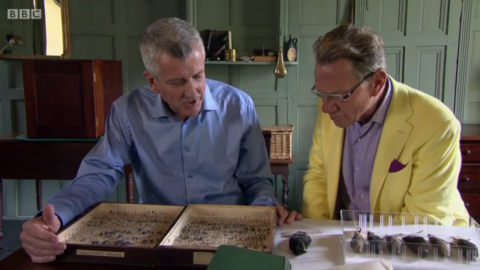
Image is a still from the programme taken from the BBC iPlayer link above.
February 2015 - "Can biodiversity make us happy?"
A collaborative project with the Simon Langton Girls' Grammar School in Canterbury funded by a Royal Society Partnership Grant
Ed Turner, affiliated researcher in the Insect Ecology Group, has just been involved as Scientific Partner in a winning Royal Society Partnership Grant with the Simon Langton Girls’ Grammar School in Canterbury. The project ‘Can biodiversity make us happy’ will foster collaboration between Cambridge and the school, to increase the school student’s understanding of biodiversity and the well-being benefits of the natural world.
As well as visiting the University’s Institute of Continuing Education to receive training in biodiversity monitoring in the Madingley Hall grounds, students will also be encouraged to actively monitor biodiversity in the school’s newly-designed wildlife area.
Lead teacher on the project, Mrs Samantha Goodfellow, said ‘this project will really inspire our students and will give them a chance to design their own methods for monitoring biodiversity and well-being. These are difficult concepts even for experienced researchers and will allow our students to develop their scientific skills in key areas including using keys, books and technology (apps) to identify species. They will also be encouraged to use equipment to measure blood pressure and pulse and they will work to design their own questionnaires and interpret written and verbal communication. We will also be encouraging other students from junior and secondary schools to actively engage in the project.’
Ed Turner said ‘This is an exciting project, which I am very keen to be involved with. As a research biologist studying the impacts of environmental change on the natural world, it is clear that we are experiencing rapid rates of species loss worldwide. Although this is driven by a range of anthropogenic changes, among the most insidious underlying factors exacerbating these losses is people’s increasing disconnection with the natural world, meaning that extinctions may go unnoticed and unchallenged. This project embodies an approach to addressing this issue by explicitly engaging young people in the natural world through an inspiring research and conservation project.’
The project begins in March 2015 and runs for seven months.
January 2015 - A new species of dragonfly – ‘the SAFE clawtail’, Phaenandrogomphus safei – discovered in Sabah, Malaysian Borneo
Insect Ecology group member Sarah Luke and her collaborator Rory Dow have discovered a species of dragonfly that is new to science during work at the Stability of Altered Forest Ecosystems (SAFE) Project in Sabah, Malaysian Borneo. It is the first time this species has ever been found, and the first species within its genus, Phaenandrogomphus, to be recorded within the island of Borneo. It has been named formally as Phaenandrogomphus safei after the SAFE Project – the research project and site where it was found - and given the common name ‘the SAFE clawtail’ because of the distinctive claw-like appendages at the end of its abdomen.
A single male was found at one of the SAFE Project streams during standardised dragonfly transect samplings conducted by Sarah Luke as part of her PhD work studying freshwater macroinvertebrates. The dragonfly is a small member of the family Gomphidae and has a mainly black thorax and abdomen, with pale green stripes.

Left: Phaenandrogomphus safei in the field. Top right: Phaenandrogomphus safei holotype. Bottom right: Phaenandrogomphus safei head, dorsal view. Photo credits Sarah Luke and Rory Dow.
The discovery of this dragonfly also sheds light on the taxonomy of another gomphid species, Onychogomphus treadawayi. The most morphologically similar species to the new Phaenandrogomphus safei is not in fact any mainland Phaenandrogomphus species, but actually O.treadawayi which is known from a single male specimen found in the Philippines. It has therefore been decided that O.treadawayi should be reclassified within the genus Phaenandrogomphus.
This is the first new species described from the SAFE Project – a large, long-term study monitoring the impacts of forest disturbance and fragmentation on ecosystems – but it is hoped that as work continues at the site more of Borneo’s unknown fauna will be discovered. First author, Rory Dow said: “Discoveries such as this demonstrate how much there is still to learn about the dragonfly fauna of Borneo. Very large areas of Borneo have never been systematically surveyed, or in many cases surveyed at all, for dragonflies; it is very likely that there are numerous discoveries still to be made.”
However, Dow also commented that “habitat is being changed by human activities at a rapid rate across Borneo, so that time may be running out for many of these fascinating insects, whilst at the same time there is an almost total lack of funding for the kind of survey work needed to find them, and the taxonomic work needed to identify and describe them.”
The type specimen will be deposited at the Forest Research Centre, Sepilok – a research institution in Sabah. The paper discussing this discovery “Phaenandrogomphus safei, a new species from Sabah, northern Borneo (Odonata: Anisoptera: Gomphidae)” written by Rory A Dow and Sarah H Luke is published open access in the journal Zootaxa and is available here: http://dx.doi.org/10.11646/zootaxa.3905.1.10
November 2014 - Insect sorting with Masters student Dave Kurz
Following my field work in the oil palm plantations of Sumatra last February and March, I found myself back in Cambridge with hundreds of tubes of invertebrates that my team and I had collected from frog stomachs. As each tube contained up to 100+ partially-digested arthropods that needed identifying, it was clear I needed help. Fortunately, three all-star undergraduates - Christine Corlet (left), Sophus Zu Ermgassen (center), and Jamie Cranston (bottom right) - were willing and eager to help. Together we plowed through the tubes and identified 4,633 invertebrates to order.

September 2014 - "Termites suffer in logged forests and palm oil plantations"
An article recently published on the conservation website Mongabay.com, discusses work by current group members Sarah Luke and Ed Turner, and former group member Tom Fayle:
http://news.mongabay.com/2014/0925-dangelo-termites-suffer-in-logged-forests.html

(Sarah Luke collecting ants and termites with a research assistant. Photo by Tim Harvey-Samuel)
The study, published in the journal Biodiversity and Conservation, considered the impacts of rain forest logging and oil palm plantations on ant and termite communities in rain forest in Borneo.
Termites showed substantial declines in abundance in disturbed habitats, but ants appeared much more resilient, with high numbers still found in logged forest and oil palm. However, both groups showed changes in assemblages and the functional groups that were found. Soil feeding termites in particular declined in disturbed habitats, whilst opportunist and behaviourally dominant ants increased in numbers.
Ants and termites are two of the most ecologically important insect groups in tropical rain forests and play crucial roles in breaking down leaves, dead wood and soil, dispersing seeds, and as predators and prey in food webs. They also interact with each other through predation, nest sharing or through changing the surrounding habitat. Changes in their abundance are therefore likely to have wide ranging effects on ecosystems.
This work is published in the open access paper “Functional structure of ant and termite assemblages in old growth forest, logged forest and oil palm plantation in Malaysian Borneo” in the journal Biodiversity and Conservation (available at http://link.springer.com/article/10.1007/s10531-014-0750-2, Volume 23, Issue 11, pp 2817-2832, online from 30th July 2014) by Sarah H Luke, Tom M Fayle, Paul Eggleton, Edgar C Turner and Richard G Davies.
April 2014 – A fieldwork update from Masters student, Dave Kurz, working at the BEFTA Project in Sumatra, Indonesia
Oil palm, frogs, and conservation on the margins
On my way to Sumatra in January, I read in my Lonely Planet guidebook that Indonesia is a kaleidoscope – geographically, culturally, and linguistically. Three months later, I’m happy to report that this charming country also contains a wonderful diversity of natural life, even in the very heart of its oil palm plantations.
Throughout February and March, I was carrying out my Masters research at the Biodiversity and Ecosystem Function in Tropical Agriculture (BEFTA) (http://oilpalmbiodiversity.com/) project in the Riau province of Sumatra. My work examined the effect of oil palm management on frog assemblages and frog-invertebrate food webs. Specifically, I focused on the effects of two forms of plantation management: understory clearing and re-planting of oil palm trees. Understory clearing is the chemical or mechanical removal of plants that grow between palms and is widely practised by oil palm estate managers seeking to keep pathways within plantations clear of vegetation. Re-planting of oil palm happens roughly every 25-30 years as trees reach the end of their productive lives. After this period, older palms produce lower yields and plots must be re-planted with young palms, beginning a new growth cycle.
These two management practices may have significant effects on the way the oil palm ecosystem works. That is, the way nutrients are cycled, the way different animals and plants interact, and even the productivity of the oil palms; these essential processes are likely influenced significantly by management choices. Many scientists have noted the importance of a diverse suite of life forms for healthy ecosystem functioning, and hopefully my project will contribute in a small way to that body of data by assessing the diversity and function of frogs in oil palm.
Aside from providing important data that we hope will make the oil palm industry more biodiversity-friendly, my fieldwork was a lot of fun! Because I was studying frog diets in oil palm, my field assistants and I had to stomach-flush hundreds of frogs. By “stomach-flush” I mean that we gently placed a silicon tube into the mouth of each frog in order to squirt water into its stomach, which allowed us to collect its most recent meal. If this sounds completely nuts to you, that’s ok – I’m used to that response from my friends! Check out the picture below to see what stomach-flushing looks like.

In addition to stomach-flushing, I conducted frog surveys, which allowed me to see a number of very cool frog species, as well as an assortment of other wildlife including spiders, kingfishers, barn owls, rodents, leopard cats, palm civets, and (my favourite) – snakes! I was fortunate to see a number of Sumatran cobras and blood pythons. Here is a picture of me with a beautiful red blood python (Python curtus brongersmai).

My fieldwork helped me appreciate the value of conserving wildlife in unlikely contexts like agriculture. When people I meet find out I am a biologist, they tend to think I work in steamy jungles dripping with giant snakes and deadly jaguars. Rainforests really are awesome (although it is much harder to find huge predators in them than popular culture suggests), but they are not the only locations important for conservation. Indeed, my time in Indonesia, partnering with an oil palm industry very concerned about sustainability, has helped me appreciate the real necessity of doing conservation “on the margins” and fighting to protect wildlife in all types of areas. That is, I think, the way forward to a future that ensures that we preserve the natural kaleidoscope we have been entrusted with…and the way to continue giving Lonely Planet a lot to write about.
February 2014 – recent conference presentations
Several members of the group recently presented their work at international conferences. The International Conference on Oil Palm and Environment (ICOPE), held in Bali, considered issues of oil palm sustainability and how the joint demands of oil palm growth and biodiversity conservation can be met.
William Foster and Ed Turner presented their work from the BEFTA Project in Sumatra which investigates whether habitat complexity within oil palm plantations, including understorey planting, can help preserve biodiversity and in turn, what the impacts of this are on ecosystem functioning and productivity.

Graham Prescott and Sarah Luke presented work from their PhDs at the Annual Conference for the Society of Tropical Ecology (gtö) conference held in Freising/Munich, Germany. Graham presented results from his study of oil palm systems in Colombia. Oil palm agriculture looks set to expand in Colombia and this growth needs to be done as sustainably as possible. Graham considered the relative biodiversity value of forest, pasture and oil palm habitats, and therefore the likely impacts for wildlife if different habitat types were converted to make way for oil palm.
Sarah won the Merian Award for the best student talk, presenting results from her work on the impacts of rainforest logging and oil palm plantations on freshwater macroinvertebrates, and the potential role of riparian buffer strips in their conservation.



(Image credits, in order: Jake Snaddon; gtö conference website http://www.gtoe-conference.de/; Claudia Gray; Claudia Gray)
December 2013 - a blog from Ed Turner, recently returned from fieldwork at the BEFTA Project in Indonesia
Conservation grows up?
For the general public, I think the word ‘conservationist’ still evokes an image of woolly jumpers, unwashed ponytails and sandals. The reality today is that conservationists can be everything from Greenpeace activists to government officials. Perhaps the key uniting factor is a drive towards more sustainable use of the world’s resources; development without or with a reduced loss of natural habitats and biodiversity. Central to this is integrating conservation activities and decisions within industry. Not only can this link research, policy and implementation, but it can also help to change the way that people think on the ground. It can centralise rather than peripheralize conservation decisions within industry and make sure that conservation practice is realistic, understandable and practical.
I’ve just come back from my latest fieldtrip as part of the Biodiversity and Ecosystem Function in Tropical Agriculture (BEFTA) Project (link), which aims to do just that. By working closely with the oil palm industry, the project is able to experimentally test different management strategies to benefit biodiversity within oil palm plantations on a scale that would be impossible without industry involvement. The project set up includes large 150m by 150m blocks of oil palm plantation in which the understory and epiphytic plants are allowed to regrow, are removed, or are kept the same. By studying a wide variety of different species of animals and plants in these areas, as well as ecosystem processes such as leaf litter decomposition, dung removal, herbivory and even oil palm yield, we will be able to assess the role of local habitat complexity in supporting biodiversity and the potential for more biofriendly management practices. Key to this is that any recommendations made must not reduce yield. Not only is this important for industry productivity, but it also ensures that conservation management in plantations doesn’t increase pressure on remaining natural areas.

Although the project is only at the end of its first year it is already yielding interesting results. In particular we have found that oil palm plantations are more variable and diverse than might be expected. More open areas along roads and near rivers contain different communities of insects than plantation interiors. Not just that, but these species are doing things – litter decomposition occurs at a more rapid rate when insects are involved. This doesn’t mean that plantations are in any way comparable or as diverse as the rainforests they replaced, but rather that they still contain species. These probably aren’t forest species, but they’re still species that make the ecosystem function. Working alongside industry also means that information on herbicide, pesticide and fertiliser applications as well as oil palm yield can be linked to biodiversity measurements, allowing the economic impacts of different management strategies to be tested.
So when you think about conservationists, I hope that you won’t just consider the baggy jumpers and hairstyle choices. A conservationist could just as well be a wildlife reserve manager in the Lake District or an oil palm grower in Malaysia. Conservation shouldn’t just check up on industry practice, although this is very important, it should also be working with and within industry to influence and implement decisions. That doesn’t mean that you can’t have a ponytail. Or wear woolly jumpers.

November 2013 - insect collections and art
Local school children have recently made use of the Insect Room Collection in their art classes. Insect Room curator, Russell Stebbings, arranged for students to work with the museum's 'handling collection' - specimens that are not scientifically useful because of missing information about their collection date and location, but are still beautiful and make brilliant subjects for drawing.
Information and photographs taken from:
http://www.accessart.org.uk/drawing-insects-from-the-insect-room-in-the-...
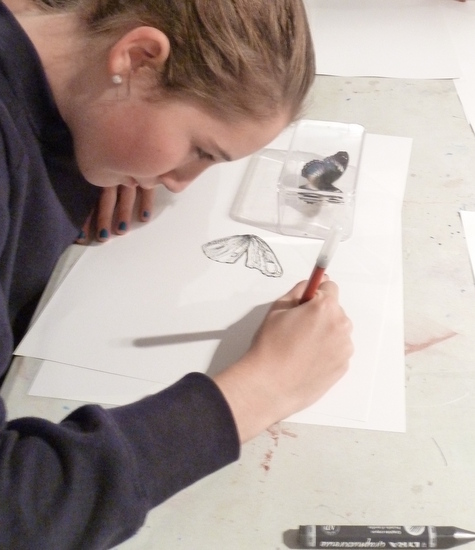
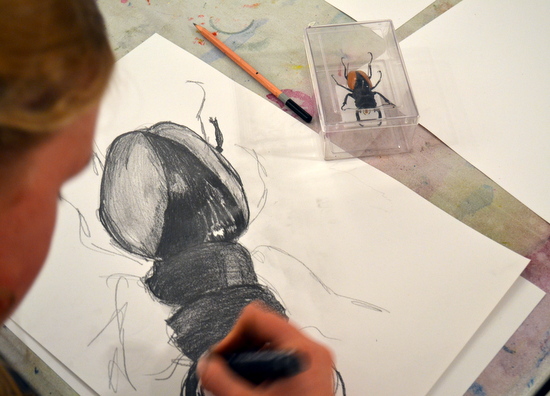

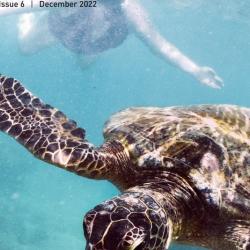

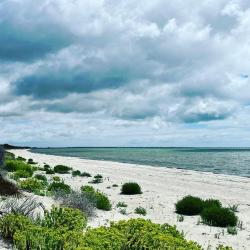

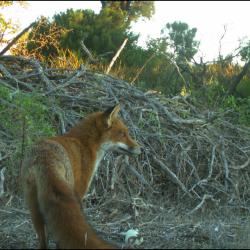
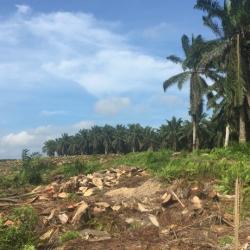
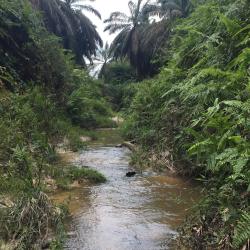
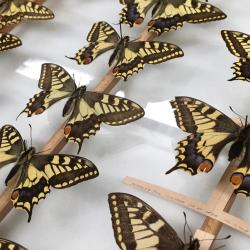
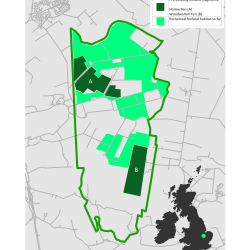
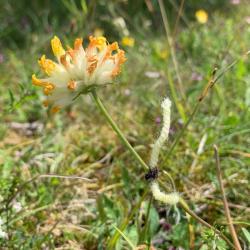
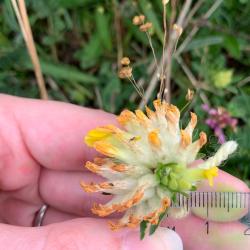
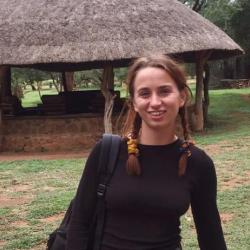


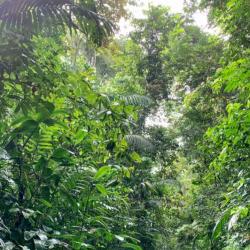
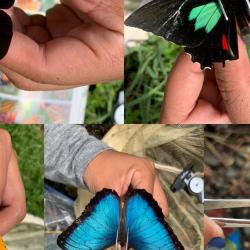
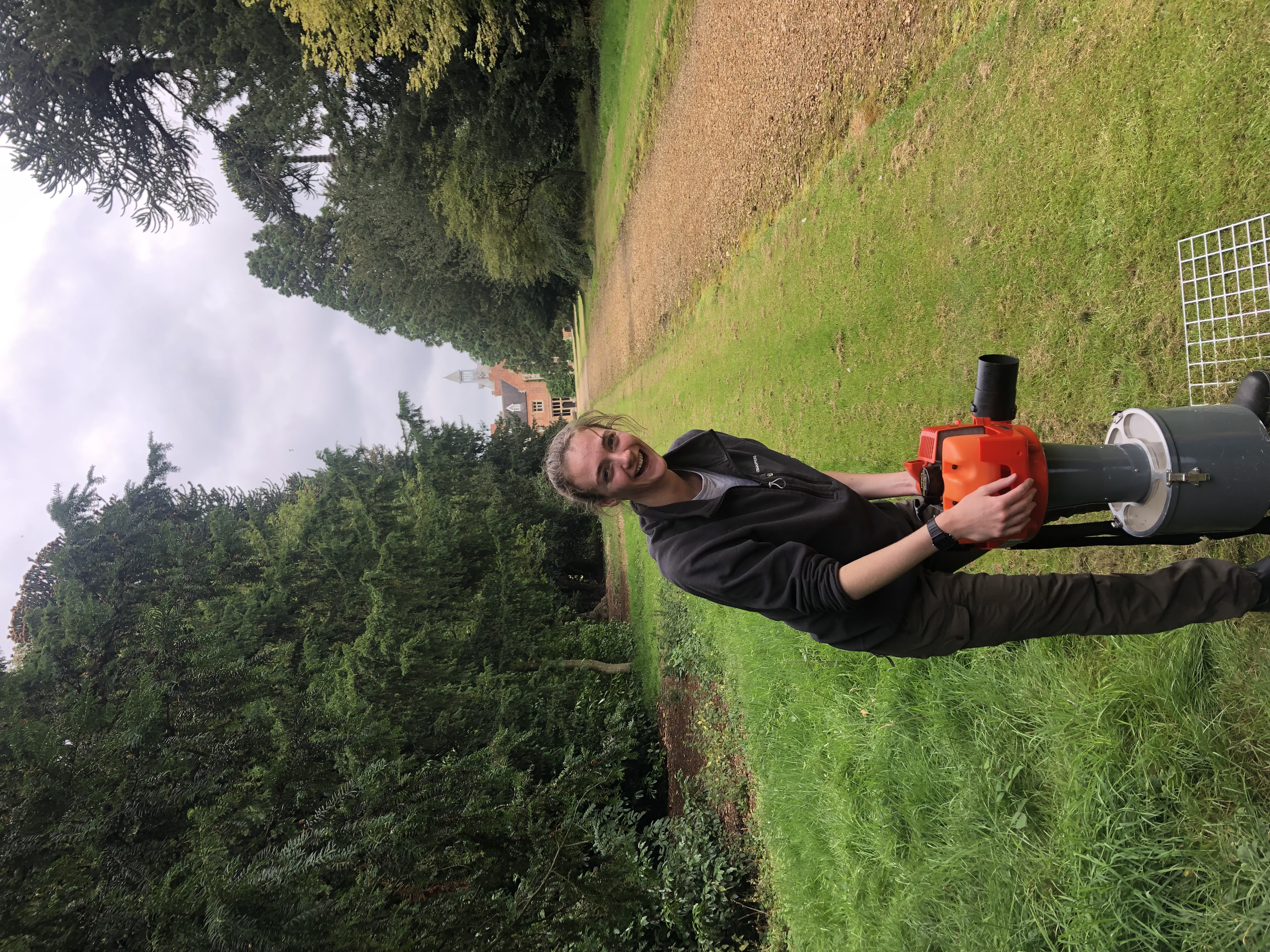
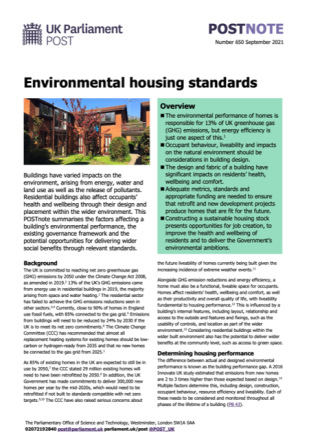
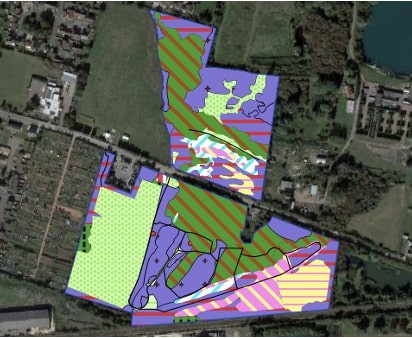
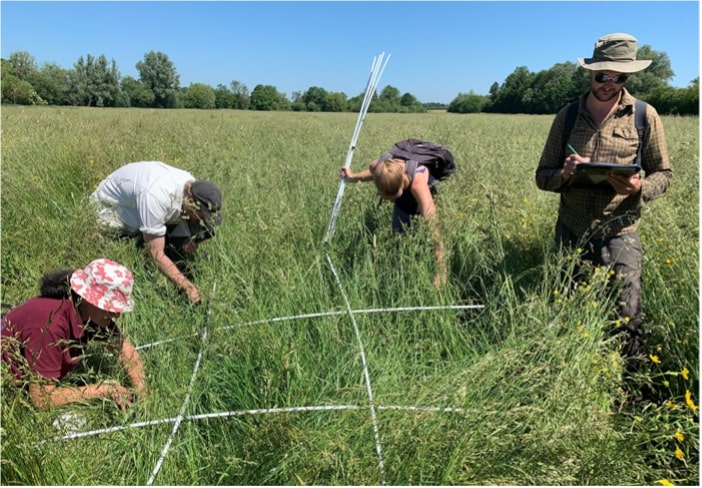
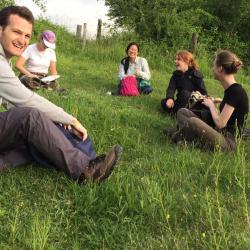
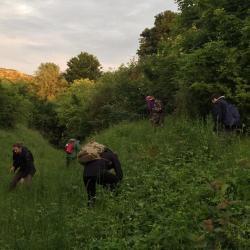
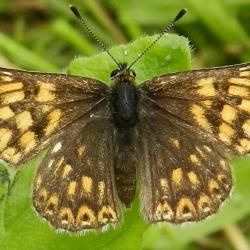

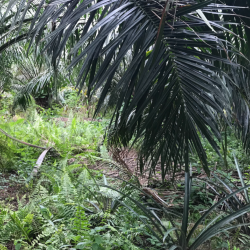

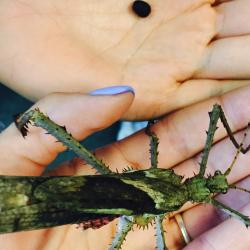
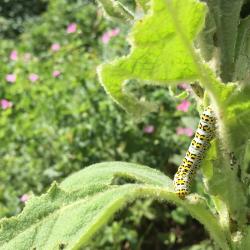
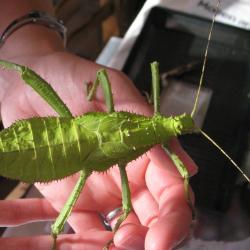

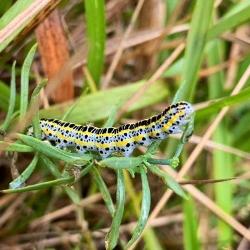
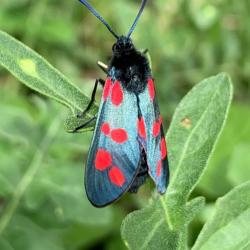
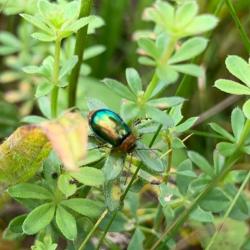
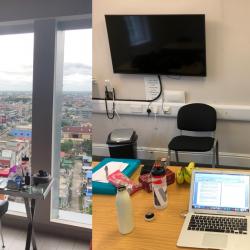
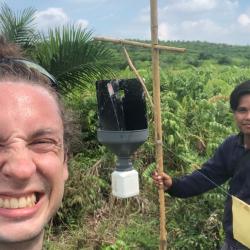
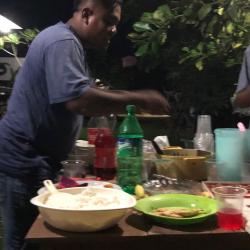

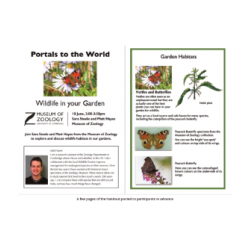
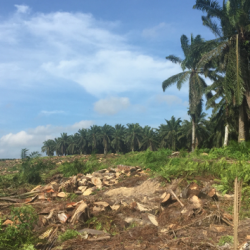

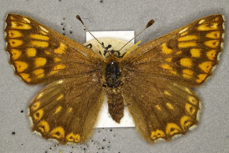
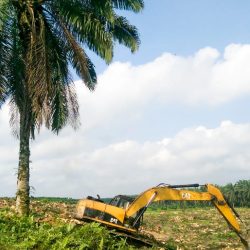
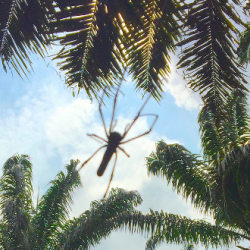
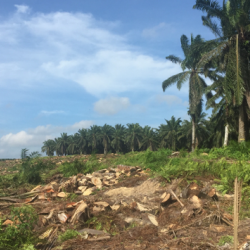

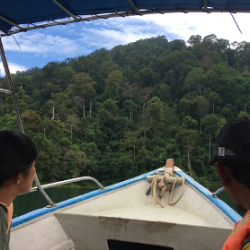

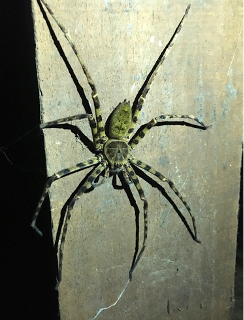
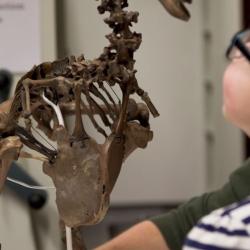

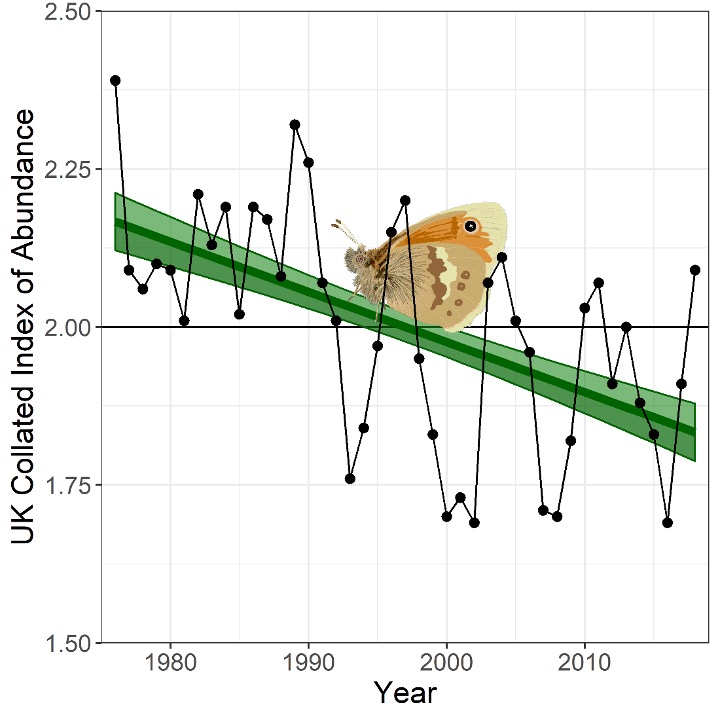
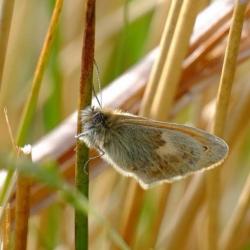
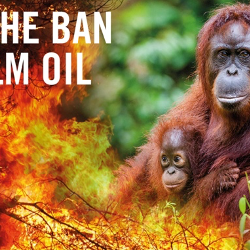
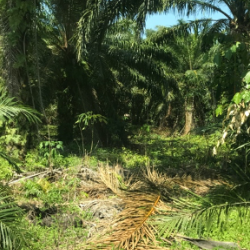


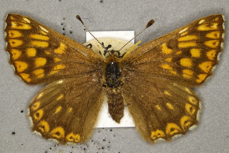
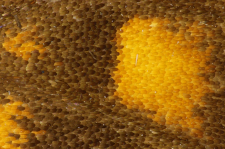

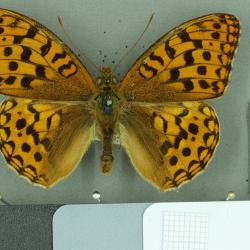
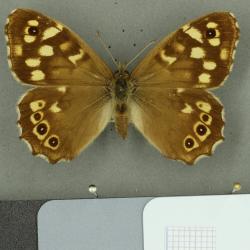
![Figure 1. Fan-like rowing structure at the tip of the middle leg of Rhagovelia bugs. Adult individuals of R. antilleana have 21 primary branches (plumes) to form this structure. Image from Santos et al., 2017 [1]](https://www.zoo.cam.ac.uk/files/styles/inline/public/media/fig.1_rhagovelia_antilleana_0.png?itok=bNlf-7oN)

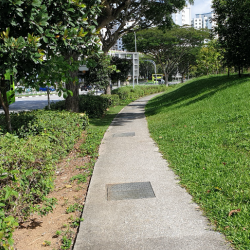
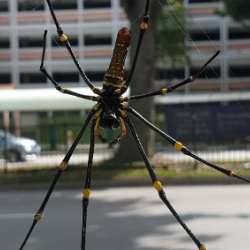
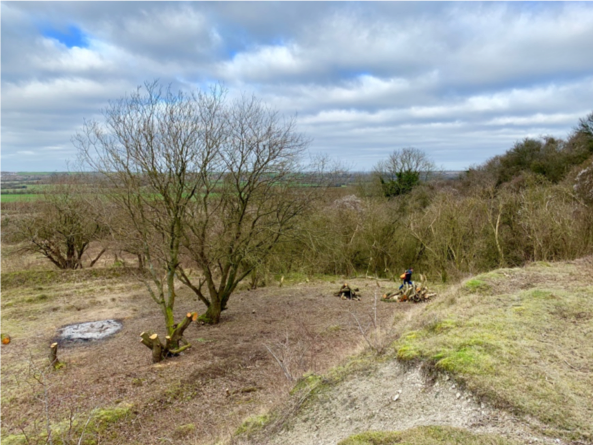
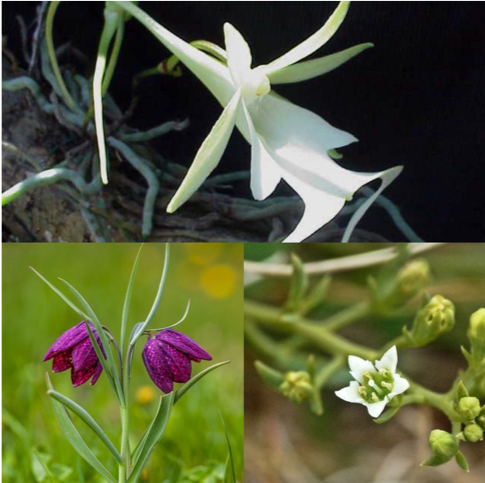
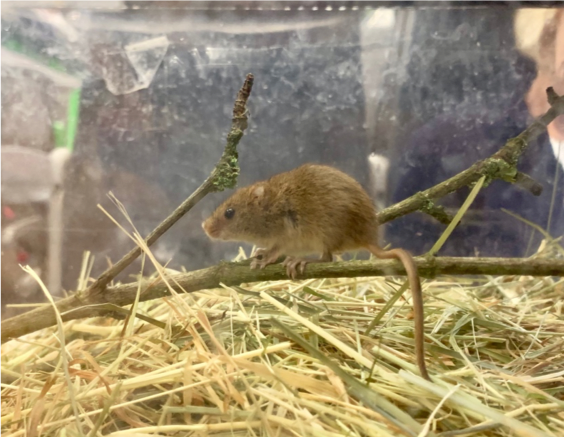
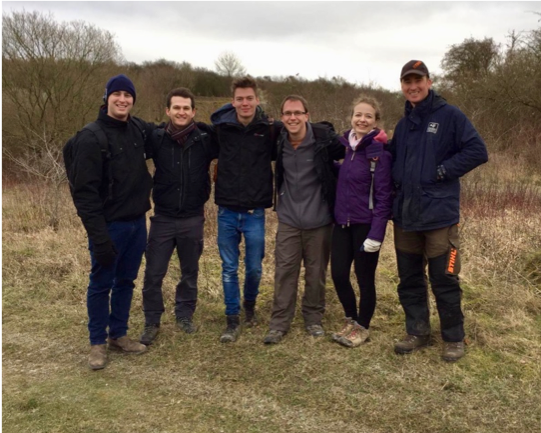
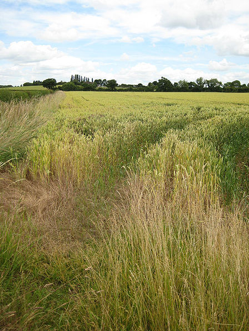
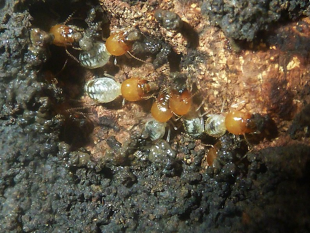
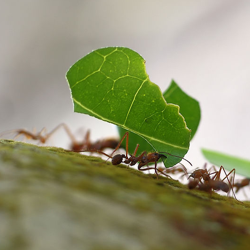
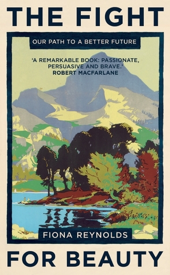
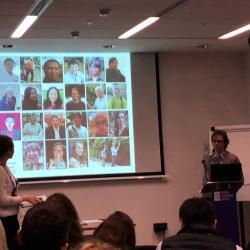
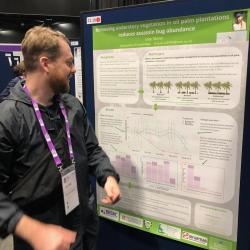
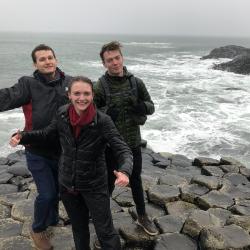
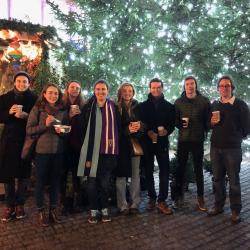
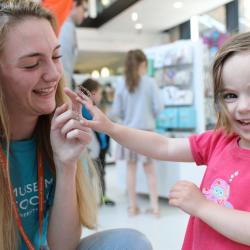


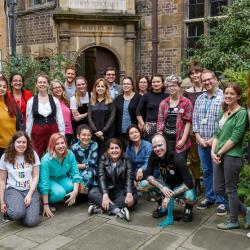

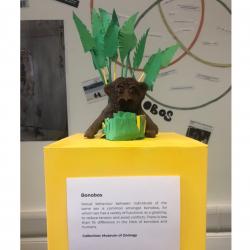
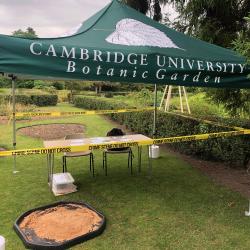
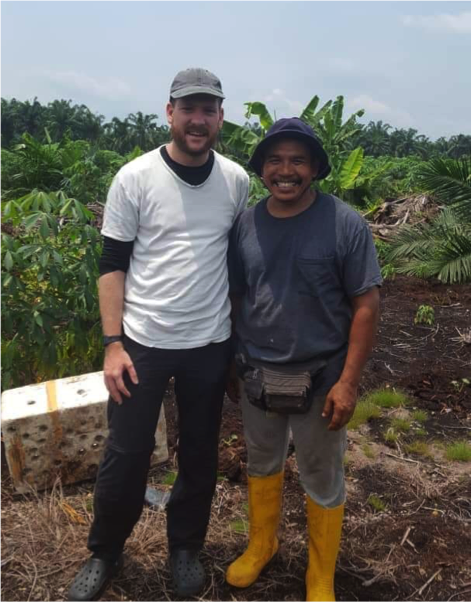
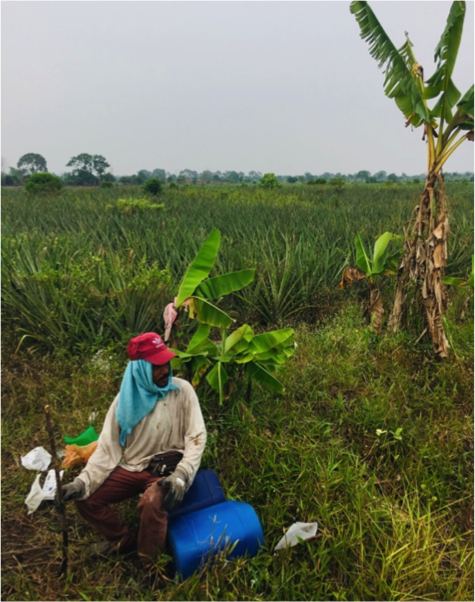
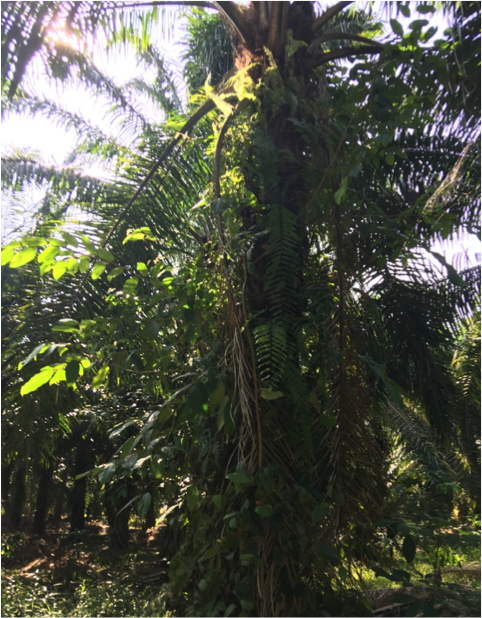
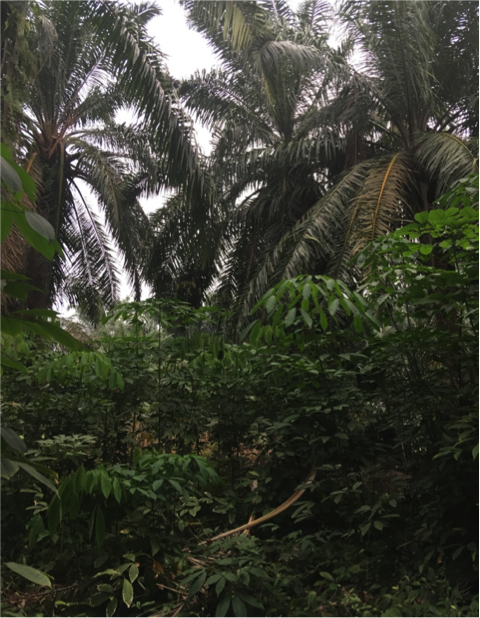
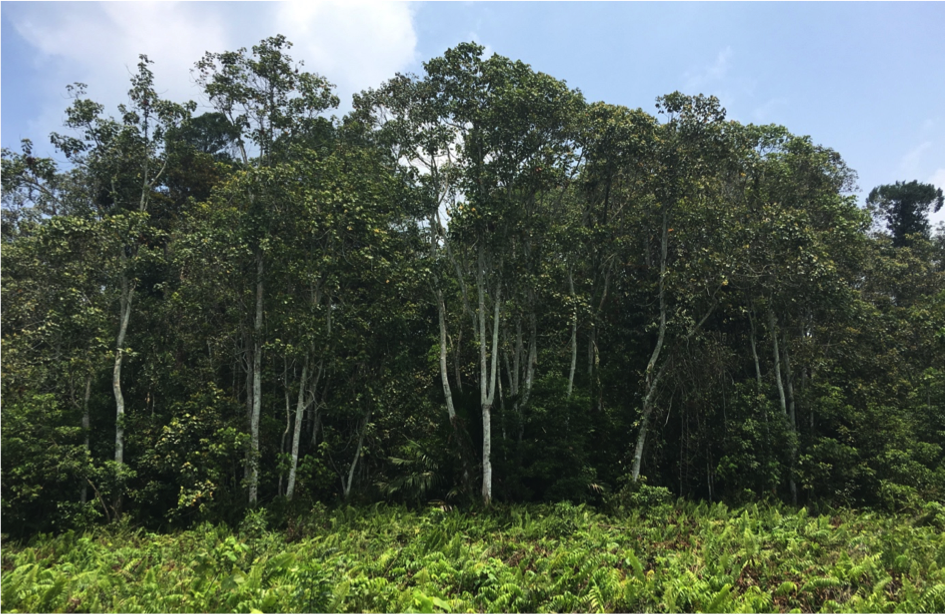



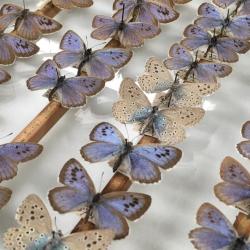
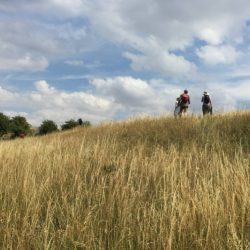
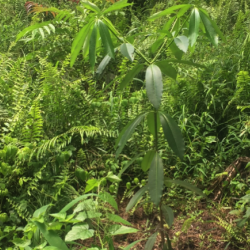

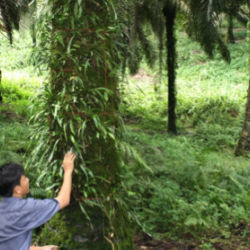
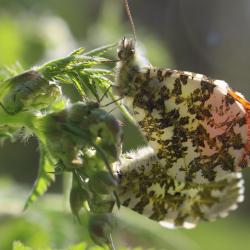
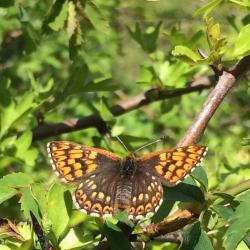

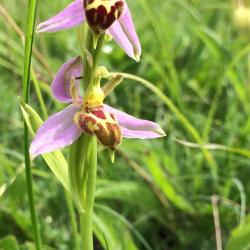
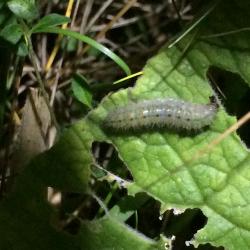

![The faint trail of dust left by a Duke of Burgundy caterpillar as it walked along the centre of a primrose leaf. Let’s hope one of these trails will lead us to a pupa!]](https://www.zoo.cam.ac.uk/files/styles/inline/public/media/7_duke_of_burgundy_uv_trail.jpeg?itok=kH_yLXFL)
